77 interesting medical research topics for 2024
Last updated
25 November 2023
Reviewed by
Brittany Ferri, PhD, OTR/L
Short on time? Get an AI generated summary of this article instead
Medical research is the gateway to improved patient care and expanding our available treatment options. However, finding a relevant and compelling research topic can be challenging.
Use this article as a jumping-off point to select an interesting medical research topic for your next paper or clinical study.
- How to choose a medical research topic
When choosing a research topic , it’s essential to consider a couple of things. What topics interest you? What unanswered questions do you want to address?
During the decision-making and brainstorming process, here are a few helpful tips to help you pick the right medical research topic:

Focus on a particular field of study
The best medical research is specific to a particular area. Generalized studies are often too broad to produce meaningful results, so we advise picking a specific niche early in the process.
Maybe a certain topic interests you, or your industry knowledge reveals areas of need.
Look into commonly researched topics
Once you’ve chosen your research field, do some preliminary research. What have other academics done in their papers and projects?
From this list, you can focus on specific topics that interest you without accidentally creating a copycat project. This groundwork will also help you uncover any literature gaps—those may be beneficial areas for research.
Get curious and ask questions
Now you can get curious. Ask questions that start with why, how, or what. These questions are the starting point of your project design and will act as your guiding light throughout the process.
For example:
What impact does pollution have on children’s lung function in inner-city neighborhoods?
Why is pollution-based asthma on the rise?
How can we address pollution-induced asthma in young children?
- 77 medical research topics worth exploring in 2023
Need some research inspiration for your upcoming paper or clinical study? We’ve compiled a list of 77 topical and in-demand medical research ideas. Let’s take a look.
- Exciting new medical research topics
If you want to study cutting-edge topics, here are some exciting options:
COVID-19 and long COVID symptoms
Since 2020, COVID-19 has been a hot-button topic in medicine, along with the long-term symptoms in those with a history of COVID-19.
Examples of COVID-19-related research topics worth exploring include:
The long-term impact of COVID-19 on cardiac and respiratory health
COVID-19 vaccination rates
The evolution of COVID-19 symptoms over time
New variants and strains of the COVID-19 virus
Changes in social behavior and public health regulations amid COVID-19
Vaccinations
Finding ways to cure or reduce the disease burden of chronic infectious diseases is a crucial research area. Vaccination is a powerful option and a great topic to research.
Examples of vaccination-related research topics include:
mRNA vaccines for viral infections
Biomaterial vaccination capabilities
Vaccination rates based on location, ethnicity, or age
Public opinion about vaccination safety
Artificial tissues fabrication
With the need for donor organs increasing, finding ways to fabricate artificial bioactive tissues (and possibly organs) is a popular research area.
Examples of artificial tissue-related research topics you can study include:
The viability of artificially printed tissues
Tissue substrate and building block material studies
The ethics and efficacy of artificial tissue creation
- Medical research topics for medical students
For many medical students, research is a big driver for entering healthcare. If you’re a medical student looking for a research topic, here are some great ideas to work from:
Sleep disorders
Poor sleep quality is a growing problem, and it can significantly impact a person’s overall health.
Examples of sleep disorder-related research topics include:
How stress affects sleep quality
The prevalence and impact of insomnia on patients with mental health conditions
Possible triggers for sleep disorder development
The impact of poor sleep quality on psychological and physical health
How melatonin supplements impact sleep quality
Alzheimer’s and dementia
Cognitive conditions like dementia and Alzheimer’s disease are on the rise worldwide. They currently have no cure. As a result, research about these topics is in high demand.
Examples of dementia-related research topics you could explore include:
The prevalence of Alzheimer’s disease in a chosen population
Early onset symptoms of dementia
Possible triggers or causes of cognitive decline with age
Treatment options for dementia-like conditions
The mental and physical burden of caregiving for patients with dementia
- Lifestyle habits and public health
Modern lifestyles have profoundly impacted the average person’s daily habits, and plenty of interesting topics explore its effects.
Examples of lifestyle and public health-related research topics include:
The nutritional intake of college students
The impact of chronic work stress on overall health
The rise of upper back and neck pain from laptop use
Prevalence and cause of repetitive strain injuries (RSI)
- Controversial medical research paper topics
Medical research is a hotbed of controversial topics, content, and areas of study.
If you want to explore a more niche (and attention-grabbing) concept, here are some controversial medical research topics worth looking into:
The benefits and risks of medical cannabis
Depending on where you live, the legalization and use of cannabis for medical conditions is controversial for the general public and healthcare providers.
Examples of medical cannabis-related research topics that might grab your attention include:
The legalization process of medical cannabis
The impact of cannabis use on developmental milestones in youth users
Cannabis and mental health diagnoses
CBD’s impact on chronic pain
Prevalence of cannabis use in young people
The impact of maternal cannabis use on fetal development
Understanding how THC impacts cognitive function
Human genetics
The Human Genome Project identified, mapped, and sequenced all human DNA genes. Its completion in 2003 opened up a world of exciting and controversial studies in human genetics.
Examples of human genetics-related research topics worth delving into include:
Medical genetics and the incidence of genetic-based health disorders
Behavioral genetics differences between identical twins
Genetic risk factors for neurodegenerative disorders
Machine learning technologies for genetic research
Sexual health studies
Human sexuality and sexual health are important (yet often stigmatized) medical topics that need new research and analysis.
As a diverse field ranging from sexual orientation studies to sexual pathophysiology, examples of sexual health-related research topics include:
The incidence of sexually transmitted infections within a chosen population
Mental health conditions within the LGBTQIA+ community
The impact of untreated sexually transmitted infections
Access to safe sex resources (condoms, dental dams, etc.) in rural areas
- Health and wellness research topics
Human wellness and health are trendy topics in modern medicine as more people are interested in finding natural ways to live healthier lifestyles.
If this field of study interests you, here are some big topics in the wellness space:
Gluten sensitivity
Gluten allergies and intolerances have risen over the past few decades. If you’re interested in exploring this topic, your options range in severity from mild gastrointestinal symptoms to full-blown anaphylaxis.
Some examples of gluten sensitivity-related research topics include:
The pathophysiology and incidence of Celiac disease
Early onset symptoms of gluten intolerance
The prevalence of gluten allergies within a set population
Gluten allergies and the incidence of other gastrointestinal health conditions
Pollution and lung health
Living in large urban cities means regular exposure to high levels of pollutants.
As more people become interested in protecting their lung health, examples of impactful lung health and pollution-related research topics include:
The extent of pollution in densely packed urban areas
The prevalence of pollution-based asthma in a set population
Lung capacity and function in young people
The benefits and risks of steroid therapy for asthma
Pollution risks based on geographical location
Plant-based diets
Plant-based diets like vegan and paleo diets are emerging trends in healthcare due to their limited supporting research.
If you’re interested in learning more about the potential benefits or risks of holistic, diet-based medicine, examples of plant-based diet research topics to explore include:
Vegan and plant-based diets as part of disease management
Potential risks and benefits of specific plant-based diets
Plant-based diets and their impact on body mass index
The effect of diet and lifestyle on chronic disease management
Health supplements
Supplements are a multi-billion dollar industry. Many health-conscious people take supplements, including vitamins, minerals, herbal medicine, and more.
Examples of health supplement-related research topics worth investigating include:
Omega-3 fish oil safety and efficacy for cardiac patients
The benefits and risks of regular vitamin D supplementation
Health supplementation regulation and product quality
The impact of social influencer marketing on consumer supplement practices
Analyzing added ingredients in protein powders
- Healthcare research topics
Working within the healthcare industry means you have insider knowledge and opportunity. Maybe you’d like to research the overall system, administration, and inherent biases that disrupt access to quality care.
While these topics are essential to explore, it is important to note that these studies usually require approval and oversight from an Institutional Review Board (IRB). This ensures the study is ethical and does not harm any subjects.
For this reason, the IRB sets protocols that require additional planning, so consider this when mapping out your study’s timeline.
Here are some examples of trending healthcare research areas worth pursuing:
The pros and cons of electronic health records
The rise of electronic healthcare charting and records has forever changed how medical professionals and patients interact with their health data.
Examples of electronic health record-related research topics include:
The number of medication errors reported during a software switch
Nurse sentiment analysis of electronic charting practices
Ethical and legal studies into encrypting and storing personal health data
Inequities within healthcare access
Many barriers inhibit people from accessing the quality medical care they need. These issues result in health disparities and injustices.
Examples of research topics about health inequities include:
The impact of social determinants of health in a set population
Early and late-stage cancer stage diagnosis in urban vs. rural populations
Affordability of life-saving medications
Health insurance limitations and their impact on overall health
Diagnostic and treatment rates across ethnicities
People who belong to an ethnic minority are more likely to experience barriers and restrictions when trying to receive quality medical care. This is due to systemic healthcare racism and bias.
As a result, diagnostic and treatment rates in minority populations are a hot-button field of research. Examples of ethnicity-based research topics include:
Cancer biopsy rates in BIPOC women
The prevalence of diabetes in Indigenous communities
Access inequalities in women’s health preventative screenings
The prevalence of undiagnosed hypertension in Black populations
- Pharmaceutical research topics
Large pharmaceutical companies are incredibly interested in investing in research to learn more about potential cures and treatments for diseases.
If you’re interested in building a career in pharmaceutical research, here are a few examples of in-demand research topics:
Cancer treatment options
Clinical research is in high demand as pharmaceutical companies explore novel cancer treatment options outside of chemotherapy and radiation.
Examples of cancer treatment-related research topics include:
Stem cell therapy for cancer
Oncogenic gene dysregulation and its impact on disease
Cancer-causing viral agents and their risks
Treatment efficacy based on early vs. late-stage cancer diagnosis
Cancer vaccines and targeted therapies
Immunotherapy for cancer
Pain medication alternatives
Historically, opioid medications were the primary treatment for short- and long-term pain. But, with the opioid epidemic getting worse, the need for alternative pain medications has never been more urgent.
Examples of pain medication-related research topics include:
Opioid withdrawal symptoms and risks
Early signs of pain medication misuse
Anti-inflammatory medications for pain control
- Identify trends in your medical research with Dovetail
Are you interested in contributing life-changing research? Today’s medical research is part of the future of clinical patient care.
As your go-to resource for speedy and accurate data analysis , we are proud to partner with healthcare researchers to innovate and improve the future of healthcare.
Should you be using a customer insights hub?
Do you want to discover previous research faster?
Do you share your research findings with others?
Do you analyze research data?
Start for free today, add your research, and get to key insights faster
Editor’s picks
Last updated: 18 April 2023
Last updated: 27 February 2023
Last updated: 6 February 2023
Last updated: 6 October 2023
Last updated: 5 February 2023
Last updated: 16 April 2023
Last updated: 9 March 2023
Last updated: 12 December 2023
Last updated: 11 March 2024
Last updated: 4 July 2024
Last updated: 6 March 2024
Last updated: 5 March 2024
Last updated: 13 May 2024
Latest articles
Related topics, .css-je19u9{-webkit-align-items:flex-end;-webkit-box-align:flex-end;-ms-flex-align:flex-end;align-items:flex-end;display:-webkit-box;display:-webkit-flex;display:-ms-flexbox;display:flex;-webkit-flex-direction:row;-ms-flex-direction:row;flex-direction:row;-webkit-box-flex-wrap:wrap;-webkit-flex-wrap:wrap;-ms-flex-wrap:wrap;flex-wrap:wrap;-webkit-box-pack:center;-ms-flex-pack:center;-webkit-justify-content:center;justify-content:center;row-gap:0;text-align:center;max-width:671px;}@media (max-width: 1079px){.css-je19u9{max-width:400px;}.css-je19u9>span{white-space:pre;}}@media (max-width: 799px){.css-je19u9{max-width:400px;}.css-je19u9>span{white-space:pre;}} decide what to .css-1kiodld{max-height:56px;display:-webkit-box;display:-webkit-flex;display:-ms-flexbox;display:flex;-webkit-align-items:center;-webkit-box-align:center;-ms-flex-align:center;align-items:center;}@media (max-width: 1079px){.css-1kiodld{display:none;}} build next, decide what to build next.

Users report unexpectedly high data usage, especially during streaming sessions.

Users find it hard to navigate from the home page to relevant playlists in the app.

It would be great to have a sleep timer feature, especially for bedtime listening.

I need better filters to find the songs or artists I’m looking for.
Log in or sign up
Get started for free
Medical Research News

New tool developed to assess fall risks in older adults
An aging society has posed a new global problem, the risk of falling. It is estimated that 1 in 3 adults over the age of 65 falls each year and the resulting injuries are becoming more prevalent.

The complex relationship between diet nutrition and cancer
The existing knowledge on the beneficial and detrimental effects of dietary patterns and nutritional supplements on cancer risk.

Single-cell RNA sequencing sheds light on stroke-induced brain damage
Strokes lead to irreversible damage to the brain and are one of the most common causes of dependency or death.

Highly inflammatory rheumatoid arthritis patients more susceptible to cognitive impairment
Researchers assessed cognitive function among rheumatoid arthritis patients with ongoing inflammatory activity.

High-frequency eccentric resistance training decreases passive muscle stiffness
Resistance, or weight training, is widely recommended in sports and rehabilitation as an effective exercise to increase muscular strength and size. This form of exercise involves applying resistance to muscle contraction to build strength. However, some practitioners believe resistance training can increase passive muscle stiffness over time.
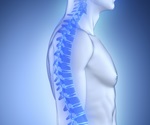
New tool helps identify older adults at risk of falling

Study explores interplay between bone, adrenal glands, and aging
Figuring out how the tissues in our bones, adrenal glands, muscle and fat "talk" to each other could help scientists better understand what happens to our skeletons with age, when our bones tend to lose mass and become weaker, leaving us at risk for falls and fractures.

Targeting 14 modifiable risk factors from childhood to old age could prevent or delay dementia
Addressing 14 modifiable risk factors, starting in childhood and continuing throughout life, could prevent or delay nearly half of dementia cases, even as people around the world live longer and the number of people with dementia is set to rise dramatically in all countries, according to the third Lancet Commission on dementia prevention, intervention, and care, which is being presented at the Alzheimer's Association International Conference (AAIC 2024).

Novel anti-tuberculosis compound targets bacterial membrane protein
Researchers from Heinrich Heine University Düsseldorf (HHU) and the University of Duisburg-Essen (UDE) have together succeeded in identifying and synthesizing a group of molecules that can act against the cause of tuberculosis in a new way. In the scientific journal Cell Chemical Biology, they describe that the so-called callyaerins act against the infectious disease by employing a fundamentally different mechanism compared to antibiotic agents used to date.

Researchers develop highly reactive RNA building blocks for enhanced chip production
An international research team led by the University of Vienna has succeeded in developing a new version of RNA building blocks with higher chemical reactivity and photosensitivity. This can significantly reduce the production time of RNA chips used in biotechnological and medical research. The chemical synthesis of these chips is now twice as fast and seven times more efficient. The results of the research were recently published in the prestigious journal Science Advances.

New treatment option for endometrial cancer shows promise in phase II trial
The latest trial of a new antibody drug that delivers potent chemotherapy directly to cancer cells for patients with advanced or recurrent endometrial cancer moves ahead to be studied further in a phase III trial.

Geographic analysis pinpoints areas for improved colorectal cancer screening in Hispanic/Latino populations
Cleveland Clinic-led research has identified geographic areas in the United States where strategic efforts to promote colorectal cancer screening could help reduce healthcare gaps affecting Hispanic/Latino communities.
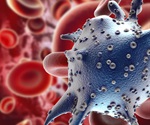
Masking policies prevalent in top cancer centers amid winter COVID wave
Nearly half of the nation's National Cancer Institute (NCI)-designated cancer centers required universal masking in key clinical areas during the winter 2023-2024 COVID-19 surge, according to a study by Tulane University researchers.

Study reveals deepening mistrust in healthcare providers post-COVID
A cross-representative survey of adults in the United States showed decreasing levels of trust in physicians and hospitals during the COVID-19 pandemic-;and the lower the trust, the less likely an individual was to get vaccinated against SARS-CoV-2 or influenza. The findings come from a survey study of more than 400,000 U.S. adults published in JAMA Network Open by a team co-led by investigators at Massachusetts General Hospital (MGH), a founding member of the Mass General Brigham healthcare system.

Study shows growing cancer burden in younger generations
A new large study led by researchers at the American Cancer Society (ACS) suggests incidence rates continued to rise in successively younger generations in 17 of the 34 cancer types, including breast, pancreatic, and gastric cancers.

Scientists capture NMDAR protein's 'twist' motion, key to brain signaling
Proteins are constantly performing a kind of dance. They move and contort their bodies to fulfill specific functions inside our bodies. The NMDAR protein executes an especially hard dance routine in our brains. One wrong step can lead to a range of neurological disorders. NMDAR binds to the neurotransmitter, glutamate, and another compound, glycine. These bindings control NMDAR's dance steps. When their routine is over, the NMDAR opens. This open ion channel generates electrical signals critical for cognitive functions like memory.

Study: Many women unaware postmenopausal bleeding signals endometrial cancer
Despite the fact that endometrial cancer is the most common cancer of the female reproductive organs, a significant percentage of women do not know that postmenopausal bleeding is a key warning sign of the disease.

Microbes play key role in carcinogenesis
At any given time, over 10 trillion microbes call our guts their home. From breaking down nutrients in our food to strengthening our immunity against pathogens, these microbes play an essential role in how we interact with the world. This includes – as shown in a new study by EMBL researchers and collaborators at the University of Split, Croatia – the way the body responds to carcinogens and develops cancer.

Anticancer drugs show promise in reducing Alzheimer's dementia risk
Study finds anticancer drugs, specifically antimetabolites and molecular targeted therapies, may reduce the risk of Alzheimer's type dementia but not vascular dementia.

New study reveals sweet spot for muscle growth
When performing resistance training such as lifting weights, there's a lot of interest in how close you push yourself to failure – the point where you can't do another rep – and how it affects your results.
- Trending Stories
- Latest Interviews
- Top Health Articles

From Waste to Taste: The Transformative Power of Fermented Foods
Maria Marco
In this interview conducted at Pittcon 2024 in San Diego, Maria Marco discusses her research on the health benefits, safety, and waste reduction potential of fermented foods, and the microbial processes involved in their production.

Revolutionizing hepatocyte count for researchers
Dan Schieffer
In this interview, NewsMedical speaks to DeNovix's Dan Schieffer about the new app developed for CellDrop, and how it aims to revolutionize hepatocyte count for the drug discovery industry, and more.

E-Cigarettes and Ethanol: A forensic Perspective on Vaping
Michelle Peace
In this interview conducted at Pittcon 2024 in San Diego, we spoke to Professor Michelle Peace about the challenges and implications of detecting ethanol in e-cigarettes for drug testing and forensic toxicology.

Latest News

Your AI Powered Scientific Assistant
Hi, I'm Azthena, you can trust me to find commercial scientific answers from News-Medical.net.
A few things you need to know before we start. Please read and accept to continue.
- Use of “Azthena” is subject to the terms and conditions of use as set out by OpenAI .
- Content provided on any AZoNetwork sites are subject to the site Terms & Conditions and Privacy Policy .
- Large Language Models can make mistakes. Consider checking important information.
Great. Ask your question.
Azthena may occasionally provide inaccurate responses. Read the full terms .
While we only use edited and approved content for Azthena answers, it may on occasions provide incorrect responses. Please confirm any data provided with the related suppliers or authors. We do not provide medical advice, if you search for medical information you must always consult a medical professional before acting on any information provided.
Your questions, but not your email details will be shared with OpenAI and retained for 30 days in accordance with their privacy principles.
Please do not ask questions that use sensitive or confidential information.
Read the full Terms & Conditions .
Provide Feedback
ALL ARTICLES IN
Health news: latest research, top stories, trending topics.
Stay up to date with the latest medical and health news that matter most to you and your family. Have a question? Got feedback? Contact Us
Blood Test for Colorectal Cancer Gets FDA Approval

Shingles Vaccine Shingrix May Reduce the Risk of Dementia

Paris Olympics Pose Health Risks to Athletes and Fans Alike

New Injection Offers 100 Percent Protection Against HIV in Women

A Vegan Diet Might Help Reduce Your Biological Age

2 Dead in Multistate Listeria Outbreak Linked to Deli Meat

‘Game of Thrones’ Study Offers Insights Into a Little-Understood Brain Disorder

Older Adults With Anxiety May Be at Higher Risk for Dementia

Belly and Arm Fat Linked to Higher Risk of Alzheimer’s and Parkinson’s

This Simple Online Tool Can Reveal Your Risk of Dementia and Depression

You Just Got COVID: Now What?

Given Shortages, Who ‘Deserves’ Ozempic and GLP-1 Drugs?

Your Pooping Frequency May Affect Your Health

New Pneumonia Vaccine Gets CDC Nod: Should You Get It?

Mediterranean Diet May Help Cancer Survivors Live Longer

FDA Approves New Drug for Early Alzheimer’s

Nearly Half of U.S. Cancer Deaths Are Linked to Controllable Risks

Mounjaro Beats Ozempic for Weight Loss

Ozempic May Reduce Risk of Dementia and Nicotine Dependence

Ozempic and the Risk of Severe Side Effects: Kidney Injury, Pancreatitis, Gallbladder Disease, Thyroid Cancer, and Allergies

11 global health issues to watch in 2023, according to IHME experts
Published December 20, 2022
As the year 2022 winds down, what is next on the horizon for global health? We turned to our IHME experts for their takes on the most critical health issues to watch in 2023. Entering our fourth year grappling with COVID-19, most of our experts pointed to issues that were impacted in some way by the pandemic, like long COVID and mental health. They also offered potential interventions to address the threats.
The faculty members and research scientists who shared their insights are professor Mohsen Naghavi , assistant professor Hwme Kyu , assistant professor Angela Micah , affiliate professor Michael Brauer , affiliate assistant professor Alize Ferrari , lead research scientist Liane Ong , lead research scientist Sarah Wulf Hanson, postdoctoral scholar Christian Razo, postdoctoral scholar Ewerton Cousin, and researcher Emma Nichols. Their comments have been lightly edited for clarity.
1. Long COVID

“Long COVID is absolutely a health issue to watch in 2023. The health impact of long COVID often disrupts a person’s ability to engage with school, work, or relationships for months at a time. “People with long COVID need diagnostic and proper rehabilitation support from primary care physicians. We desperately need more research to find effective treatments as well as preventive measures to reduce the risk of developing long COVID.” — Sarah Wulf Hanson, lead research scientist of the non-fatal and risk quality enhancement team and lead author of the JAMA paper on long COVID
2. Mental health

“Mental disorders are a leading cause of disability worldwide, with no evidence of a decrease in this burden since 1990. The impact of the COVID-19 pandemic, war, and violence on mental health remains a priority, specifically understanding how these have impacted the prevalence and burden of mental disorders in 2022 onward and how countries should be adapting their mental health response accordingly.
“Currently in the GBD study, we investigate childhood sexual abuse, intimate partner violence, and bullying victimization as risk factors for mental disorders. Going forward, we need a better understanding of the other risk factors for mental disorders, how these vary across different populations, and how to offer the best opportunities for prevention at the population level.” — Alize Ferrari, affiliate assistant professor and team lead for estimating the burden of mental disorders
3. Impact of climate change

“Climate change is already affecting the health of millions of people all over the world, and more importantly, climate change will worsen throughout this century. People are experiencing both the direct effects of extreme heat that we measure in the GBD and a myriad of indirect effects. Flooding can force people from their homes and affect their mental health, droughts and storms can impact food security and water availability, and wildfire smoke episodes can increase air pollution. As we know from the pandemic, preparedness is key, and we are far from prepared for the health impacts of a warmer climate.
“Most of the emphasis to date on climate change – and rightly so – has been on what we call mitigation: reducing the emissions that lead to global warming. Yet to date these efforts have been far too modest. We are now at a point where climate change is clearly with us, and much more attention needs to be put on minimizing the impacts on global health through adaptation or enhancing resilience.
“One aspect of this is improving overall health and enhancing socioeconomic development because we know that those who are more vulnerable will suffer the most. In addition, there are technological solutions that can support adaptation , such as the use of drought-resistant crops, increasing vegetation in cities to reduce the urban heat island effect, or repurposing land use to adapt to rising sea levels.
“Air pollution is one of the leading global risk factors that we evaluate in the GBD – currently responsible for about 8% of all global mortality – yet it is a problem with known solutions. Increasing the speed at which we address air pollution will save lives today. Those solutions will move the world closer to the net-zero carbon emissions goals that we need to ultimately address the causes of climate change.” — Michael Brauer, affiliate professor and team lead for estimating the burden of environmental, occupational, and dietary risk factors
4. Cardiovascular disease
“Cardiovascular diseases such as ischemic heart disease and stroke are the leading causes of death globally, accounting for 28% of total deaths in 2021. Additionally, cardiovascular diseases substantially contribute to health loss and the economic burden on health care systems. Most cardiovascular diseases can be prevented by addressing modifiable cardiovascular risk factors such as high blood pressure, high cholesterol, obesity, dietary risks, smoking, and air pollution.” — Christian Razo, postdoctoral scholar on the team estimating cardiovascular disease burden and lead author of a Burden of Proof study on the effects of elevated systolic blood pressure on ischemic heart disease
5. Lower respiratory infections

“Lower respiratory infections (LRI), especially respiratory syncytial virus (RSV) and influenza, are health issues to watch in 2023. “ We saw a general decline in influenza and RSV infections in 2020 due to COVID-19 mitigation measures such as mask use and social distancing. With the relaxation of these measures, many young children who haven’t been exposed to RSV in the past couple of years are being infected, resulting in RSV outbreaks . Countries have also experienced a surge in influenza across all ages. “ Annual influenza vaccination provides an opportunity to reduce the LRI burden attributable to flu. There is no vaccine yet to prevent RSV, but promising vaccine trials are underway . ” — Hmwe Kyu, assistant professor and team lead for estimating the burden of HIV, TB, and select infectious diseases “ After experiencing significant disruptions to health care systems worldwide due to the COVID-19 pandemic, the increases in respiratory infections and other communicable diseases have been added to the existing burden of chronic non-communicable diseases, creating a dual burden of disease exacerbated by social inequalities observed globally.” — Christian Razo
6. Poverty’s role in health

“It seems that poverty is the mother of inequality in health. The unequal distribution of resources has expanded due to climate change and increasing violence. Low- and middle-income countries experience worse health outcomes than high-income countries: the life expectancy is 34 years lower, the under-5 mortality around 100 times higher, deaths due to interpersonal violence and suicide are 30 times higher, and deaths attributable to antimicrobial resistance (AMR) are 12 times higher. We must urgently address the impact of poverty on health, life, and death.” — Mohsen Naghavi, professor and team lead for causes of death, shocks, intermediate causes and estimating the burden of AMR
7. Health systems strengthening

“Strengthening health systems globally remains a critical aspect of what is needed for resilient health systems. This will be particularly relevant as countries refocus their resources and attention after the acute phase of the COVID-19 pandemic.
“I think what is needed is a longer-term commitment from donors and governments – financial and human resources, governance structures, management, information systems – to ensure that interventions are set up for long-term sustainability and can deliver the outcomes that are aspired to across health systems.” — Angela Micah, assistant professor and co-lead of the development assistance for health resource tracking team
“Given the immense strain of COVID-19 on primary care and hospital systems the past two-and-a-half years, attention should be paid to building back up the health care system and enabling frontline workers to do their jobs effectively. Public health leaders and policymakers need to reflect on lessons learned from the pandemic to prevent health care system collapse in the next crisis and to ensure that people who need care can access quality health care.” — Sarah Wulf Hanson
8. Diabetes

“Diabetes is the fourth main cause of DALYs in Latin America and the Caribbean, and among the top five causes, it is the only one that shows an increase in the age-standardized rate compared to 1990. The burden of diabetes in the Americas is large, increasing, heterogeneous, and expanding, especially in countries in Central Latin America and the Caribbean.
“Population-based interventions such as taxes and incentives, more informative food labeling, improving the built environment to facilitate exercise, and greater advocacy to inform people of the risk diabetes poses, combined with expanded health education to combat diabetes risk factors, seem the best options. Policies aimed to help avoid weight gain and improve dietary quality are also paramount.
“Another important aspect is improving the response of health systems in terms of access and quality care. These should include universal access to low-cost insulin and oral anti-diabetic medication to decrease avoidable deaths from acute complications. Health systems should also strive to furnish feedback from their administrative data systems to providers to help orient diabetes care.” — Ewerton Cousin, postdoctoral scholar on the neglected tropical diseases team and lead author of The Lancet Diabetes & Endocrinology paper on diabetes burden in the Americas
9. Road injuries

“Road injuries are still an important and preventable injury. For people 15-49 years old, road injuries are the leading cause of death .
“Interventions such as helmets, seatbelts, airbags, speed limits, and laws discouraging alcohol-impaired driving do work. But implementation is not the only thing that determines their success – human behavior must adhere to those policies to make them effective." — Liane Ong, lead research scientist and team lead for estimating the burden of injuries, chronic respiratory diseases, neurological disorders, substance use disorders, diabetes and kidney diseases, sensory organ diseases, musculoskeletal disorders, and impairments (BIRDS)
10. Dementia

“Anticipated trends in population growth and population aging are expected to lead to large increases in the number of people affected by dementia globally, underscoring the public health importance of dementia. To adequately care for those with dementia, appropriate planning for the necessary supports and services required is needed.
“Interventions targeting modifiable risk factors, such as low education, smoking, and high blood sugar, have the potential to reduce the overall societal burden and should be prioritized.” — Emma Nichols, researcher on the BIRDS team and lead author of The Lancet Public Health paper on dementia forecasting
11. Population aging

“Adapting health systems to support older populations’ needs should be front of mind in 2023. Globally, the proportion of the population that is above 65 is expected to increase in the coming years. While a lot of attention (and rightfully so) has historically focused on diseases that affect children, it will be prudent to begin thinking through and systematically planning for some of these upcoming changes in demography as well, especially in low- and middle-income countries.” — Angela Micah
Mortality due to falls by county, age group, race, and ethnicity in the USA, 2000–19
Dr. samar al-hajj: collaborating in lebanon, trends and levels of the global, regional, and national burden of appendicitis between 1990 and 2021, the burden and trends of child and maternal malnutrition across the regions in ethiopia, 1990–2019, subscribe to our newsletter.
Thank you for visiting nature.com. You are using a browser version with limited support for CSS. To obtain the best experience, we recommend you use a more up to date browser (or turn off compatibility mode in Internet Explorer). In the meantime, to ensure continued support, we are displaying the site without styles and JavaScript.
- View all journals
Medical genetics articles from across Nature Portfolio
Medical genetics involves the application of genetics to medical care, including research on the causes and inheritance of genetic disorders, and their diagnosis and management.
Related Subjects
- Genetic counselling
Latest Research and Reviews
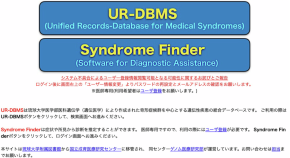
An application supporting diagnosis for rare genetic diseases – UR-DBMS and Syndrome Finder –
- Kenji Naritomi
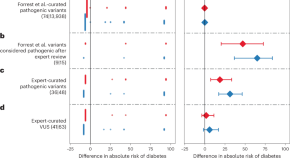
Guidance for estimating penetrance of monogenic disease-causing variants in population cohorts
This Perspective explores challenges in calculating the penetrance of monogenic disease-associated variants in the context of large-scale population sequencing cohorts.
- Caroline F. Wright
- Luke N. Sharp
- Michael N. Weedon
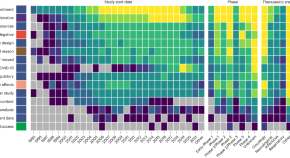
Genetic factors associated with reasons for clinical trial stoppage
Natural language processing of stopped clinical trials finds associations with the strength and extent of genetic evidence, suggesting that incorporating such evidence during target selection could help avoid negative outcomes.
- Olesya Razuvayevskaya
- Irene Lopez
- David Ochoa

A CCG expansion in ABCD3 causes oculopharyngodistal myopathy in individuals of European ancestry
A significant proportion of individuals with inherited neuromuscular disease do not receive a genetic diagnosis. Here, the authors establish CCG expansions in the 5’ untranslated region of ABCD3 as a cause of oculopharyngodistal myopathy (OPDM) in individuals of European ancestry and identify increased expression of expansion-containing ABCD3 transcripts as a possible disease mechanism underlying muscle degeneration.
- Andrea Cortese
- Sarah J. Beecroft
- Gianina Ravenscroft

Homozygous 6-bp deletion of IGFALS in a prepubertal boy with short stature
- Ikuko Kageyama
- Naoto Shimura
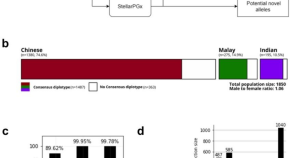
The variation landscape of CYP2D6 in a multi-ethnic Asian population
- Yusuf Maulana
- Rodrigo Toro Jimenez
- Mar Gonzalez-Porta
News and Comment
Characterization of the f8 gene: a silver lining in a dark cloud.
Haemophilia A is caused by variants in the gene that encodes coagulation factor VIII (FVIII). Sequencing of this gene in the 1980s was the initial step in developing replacement therapy with recombinant FVIII, and thereby removing the risk of blood-borne infections from plasma-derived FVIII.
- Daisy Jones

An unexpected polyglycine route to spinocerebellar ataxia
Trinucleotide repeat expansions, notably CAG repeats translated into toxic polyglutamine-containing proteins, are the leading cause of spinocerebellar ataxia (SCA). New work points to a GGC repeat expansion that encodes a polyglycine-containing protein as a cause of SCA4, highlighting polyglycine disorders as an emerging human genetic disease class.
- Nicolas Charlet-Berguerand
JHG Young Scientist Award 2023
- Toshihiro Tanaka
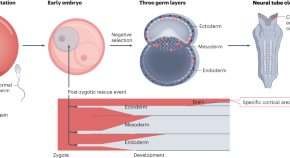
Post-zygotic brain mosaicism as a result of partial reversion of pre-zygotic aneuploidy
Brain somatic mosaicism is linked to several neurological disorders and is thought to arise post-zygotically. A study suggests that pre-zygotic aneuploidy followed by post-zygotic partial reversion leads to a recurrent form of brain mosaicism-related epilepsy.
- Changuk Chung
- Xiaoxu Yang
- Joseph G. Gleeson
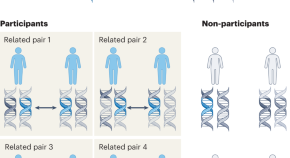
Leveraging family relatedness to detect participation bias in genetic studies
Identifying the ways that a study sample is not representative is essential for maximizing the generalizability of findings to the population. A new method proposes discerning non-representativeness in large-scale genetic studies by comparing the genotypes of closely related participants.
- Mark J. Adams
Can ChatGPT understand genetics?
- Frank Emmert-Streib
Quick links
- Explore articles by subject
- Guide to authors
- Editorial policies
- U.S. Department of Health & Human Services

- Virtual Tour
- Staff Directory
- En Español
You are here
Nih research matters.
December 22, 2021
2021 Research Highlights — Promising Medical Findings
Results with potential for enhancing human health.
With NIH support, scientists across the United States and around the world conduct wide-ranging research to discover ways to enhance health, lengthen life, and reduce illness and disability. Groundbreaking NIH-funded research often receives top scientific honors. In 2021, these honors included Nobel Prizes to five NIH-supported scientists . Here’s just a small sample of the NIH-supported research accomplishments in 2021.
Printer-friendly version of full 2021 NIH Research Highlights
20210615-covid.jpg

Advancing COVID-19 treatment and prevention
Amid the sustained pandemic, researchers continued to develop new drugs and vaccines for COVID-19. They found oral drugs that could inhibit virus replication in hamsters and shut down a key enzyme that the virus needs to replicate. Both drugs are currently in clinical trials. Another drug effectively treated both SARS-CoV-2 and RSV, another serious respiratory virus, in animals. Other researchers used an airway-on-a-chip to screen approved drugs for use against COVID-19. These studies identified oral drugs that could be administered outside of clinical settings. Such drugs could become powerful tools for fighting the ongoing pandemic. Also in development are an intranasal vaccine , which could help prevent virus transmission, and vaccines that can protect against a range of coronaviruses .
202211214-alz.jpg

Developments in Alzheimer’s disease research
One of the hallmarks of Alzheimer’s is an abnormal buildup of amyloid-beta protein. A study in mice suggests that antibody therapies targeting amyloid-beta protein could be more effective after enhancing the brain’s waste drainage system . In another study, irisin, an exercise-induced hormone, was found to improve cognitive performance in mice . New approaches also found two approved drugs (described below) with promise for treating AD. These findings point to potential strategies for treating Alzheimer’s. Meanwhile, researchers found that people who slept six hours or less per night in their 50s and 60s were more likely to develop dementia later in life, suggesting that inadequate sleep duration could increase dementia risk.
20211109-retinal.jpg

New uses for old drugs
Developing new drugs can be costly, and the odds of success can be slim. So, some researchers have turned to repurposing drugs that are already approved for other conditions. Scientists found that two FDA-approved drugs were associated with lower rates of Alzheimer’s disease. One is used for high blood pressure and swelling. The other is FDA-approved to treat erectile dysfunction and pulmonary hypertension. Meanwhile, the antidepressant fluoxetine was associated with reduced risk of age-related macular degeneration. Clinical trials will be needed to confirm these drugs’ effects.
20210713-heart.jpg
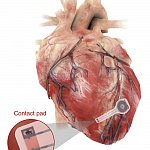
Making a wireless, biodegradable pacemaker
Pacemakers are a vital part of medical care for many people with heart rhythm disorders. Temporary pacemakers currently use wires connected to a power source outside the body. Researchers developed a temporary pacemaker that is powered wirelessly. It also breaks down harmlessly in the body after use. Studies showed that the device can generate enough power to pace a human heart without causing damage or inflammation.
20210330-crohns.jpg

Fungi may impair wound healing in Crohn’s disease
Inflammatory bowel disease develops when immune cells in the gut overreact to a perceived threat to the body. It’s thought that the microbiome plays a role in this process. Researchers found that a fungus called Debaryomyces hansenii impaired gut wound healing in mice and was also found in damaged gut tissue in people with Crohn’s disease, a type of inflammatory bowel disease. Blocking this microbe might encourage tissue repair in Crohn’s disease.
20210406-flu.jpg

Nanoparticle-based flu vaccine
Influenza, or flu, kills an estimated 290,000-650,000 people each year worldwide. The flu virus changes, or mutates, quickly. A single vaccine that conferred protection against a wide variety of strains would provide a major boost to global health. Researchers developed a nanoparticle-based vaccine that protected against a broad range of flu virus strains in animals. The vaccine may prevent flu more effectively than current seasonal vaccines. Researchers are planning a Phase 1 clinical trial to test the vaccine in people.
20211002-lyme.jpg

A targeted antibiotic for treating Lyme disease
Lyme disease cases are becoming more frequent and widespread. Current treatment entails the use of broad-spectrum antibiotics. But these drugs can damage the patient’s gut microbiome and select for resistance in non-target bacteria. Researchers found that a neglected antibiotic called hygromycin A selectively kills the bacteria that cause Lyme disease. The antibiotic was able to treat Lyme disease in mice without disrupting the microbiome and could make an attractive therapeutic candidate.
20211102-back.jpg

Retraining the brain to treat chronic pain
More than 25 million people in the U.S. live with chronic pain. After a treatment called pain reprocessing therapy, two-thirds of people with mild or moderate chronic back pain for which no physical cause could be found were mostly or completely pain-free. The findings suggest that people can learn to reduce the brain activity causing some types of chronic pain that occur in the absence of injury or persist after healing.
2021 Research Highlights — Basic Research Insights >>
Connect with Us
- More Social Media from NIH
Research articles
Estimating the economic effect of harm associated with high risk prescribing of oral non-steroidal anti-inflammatory drugs, personal protective effect of wearing surgical face masks in public spaces, learning implementation of a guideline based decision support system to improve hypertension treatment in primary care in china, intraosseous versus intravenous vascular access in upper extremity among adults with out-of-hospital cardiac arrest, trends in long term vaping among adults in england, 2013-23, covid-19 infection and vaccination during first trimester and risk of congenital anomalies, lee silverman voice treatment versus nhs speech and language therapy versus control for dysarthria in people with parkinson’s disease, effectiveness of behavioural interventions with motivational interviewing on physical activity outcomes, trends in cardiovascular disease incidence among 22 million people in the uk over 20 years, colchicine in patients with acute ischaemic stroke or transient ischaemic attack, sglt-2 inhibitors, glp-1 receptor agonists, and dpp-4 inhibitors and risk of hyperkalemia among people with type 2 diabetes, nab-paclitaxel, cisplatin, and capecitabine versus cisplatin and gemcitabine as first line chemotherapy in patients with nasopharyngeal carcinoma, lateral episiotomy or in vacuum assisted delivery in nulliparous women, global burden of type 1 diabetes in adults aged 65 years and older, antiplatelet therapy after coronary artery bypass surgery, mailed feedback to primary care physicians on antibiotic prescribing, tislelizumab plus chemotherapy versus placebo plus chemotherapy as first line treatment for advanced gastric or gastro-oesophageal junction adenocarcinoma, epidural analgesia during labour and severe maternal morbidity, exposure to antibiotics during pregnancy or early infancy and risk of neurodevelopmental disorders, clinical and healthcare use outcomes after cessation of long term opioid treatment due to prescriber workforce exit, effect of the hpv vaccination programme on incidence of cervical cancer by socioeconomic deprivation in england, long acting progestogens vs combined oral contraceptive pill for preventing recurrence of endometriosis related pain, ultra-processed food consumption and all cause and cause specific mortality, comparative effectiveness of second line oral antidiabetic treatments among people with type 2 diabetes mellitus, efficacy of psilocybin for treating symptoms of depression, reverse total shoulder replacement versus anatomical total shoulder replacement for osteoarthritis, effect of combination treatment with glp-1 receptor agonists and sglt-2 inhibitors on incidence of cardiovascular and serious renal events, prenatal opioid exposure and risk of neuropsychiatric disorders in children, temporal trends in lifetime risks of atrial fibrillation and its complications, antipsychotic use in people with dementia, predicting the risks of kidney failure and death in adults with moderate to severe chronic kidney disease, impact of large scale, multicomponent intervention to reduce proton pump inhibitor overuse, esketamine after childbirth for mothers with prenatal depression, glucagon-like peptide 1 receptor agonist use and risk of thyroid cancer, use of progestogens and the risk of intracranial meningioma, delirium and incident dementia in hospital patients, derivation and external validation of a simple risk score for predicting severe acute kidney injury after intravenous cisplatin, quality and safety of artificial intelligence generated health information, large language models and the generation of health disinformation, 25 year trends in cancer incidence and mortality among adults in the uk, cervical pessary versus vaginal progesterone in women with a singleton pregnancy, comparison of prior authorization across insurers, diagnostic accuracy of magnetically guided capsule endoscopy with a detachable string for detecting oesophagogastric varices in adults with cirrhosis, ultra-processed food exposure and adverse health outcomes, added benefit and revenues of oncology drugs approved by the ema, exposure to air pollution and hospital admission for cardiovascular diseases, short term exposure to low level ambient fine particulate matter and natural cause, cardiovascular, and respiratory morbidity, optimal timing of influenza vaccination in young children, effect of exercise for depression, association of non-alcoholic fatty liver disease with cardiovascular disease and all cause death in patients with type 2 diabetes, duration of cpr and outcomes for adults with in-hospital cardiac arrest, clinical effectiveness of an online physical and mental health rehabilitation programme for post-covid-19 condition, atypia detected during breast screening and subsequent development of cancer, publishers’ and journals’ instructions to authors on use of generative ai in academic and scientific publishing, effectiveness of glp-1 receptor agonists on glycaemic control, body weight, and lipid profile for type 2 diabetes, neurological development in children born moderately or late preterm, invasive breast cancer and breast cancer death after non-screen detected ductal carcinoma in situ, all cause and cause specific mortality in obsessive-compulsive disorder, acute rehabilitation following traumatic anterior shoulder dislocation, perinatal depression and risk of mortality, undisclosed financial conflicts of interest in dsm-5-tr, effect of risk mitigation guidance opioid and stimulant dispensations on mortality and acute care visits, update to living systematic review on sars-cov-2 positivity in offspring and timing of mother-to-child transmission, perinatal depression and its health impact, christmas 2023: common healthcare related instruments subjected to magnetic attraction study, using autoregressive integrated moving average models for time series analysis of observational data, demand for morning after pill following new year holiday, christmas 2023: christmas recipes from the great british bake off, effect of a doctor working during the festive period on population health: experiment using doctor who episodes, christmas 2023: analysis of barbie medical and science career dolls, christmas 2023: effect of chair placement on physicians’ behavior and patients’ satisfaction, management of chronic pain secondary to temporomandibular disorders, christmas 2023: projecting complete redaction of clinical trial protocols, christmas 2023: a drug target for erectile dysfunction to help improve fertility, sexual activity, and wellbeing, christmas 2023: efficacy of cola ingestion for oesophageal food bolus impaction, conservative management versus laparoscopic cholecystectomy in adults with gallstone disease, social media use and health risk behaviours in young people, untreated cervical intraepithelial neoplasia grade 2 and cervical cancer, air pollution deaths attributable to fossil fuels, implementation of a high sensitivity cardiac troponin i assay and risk of myocardial infarction or death at five years, covid-19 vaccine effectiveness against post-covid-19 condition, association between patient-surgeon gender concordance and mortality after surgery, intravascular imaging guided versus coronary angiography guided percutaneous coronary intervention, treatment of lower urinary tract symptoms in men in primary care using a conservative intervention, autism intervention meta-analysis of early childhood studies, effectiveness of the live zoster vaccine during the 10 years following vaccination, effects of a multimodal intervention in primary care to reduce second line antibiotic prescriptions for urinary tract infections in women, pyrotinib versus placebo in combination with trastuzumab and docetaxel in patients with her2 positive metastatic breast cancer, association of dcis size and margin status with risk of developing breast cancer post-treatment, racial differences in low value care among older patients in the us, pharmaceutical industry payments and delivery of low value cancer drugs, rosuvastatin versus atorvastatin in adults with coronary artery disease, clinical effectiveness of septoplasty versus medical management for nasal airways obstruction, ultrasound guided lavage with corticosteroid injection versus sham lavage with and without corticosteroid injection for calcific tendinopathy of shoulder, early versus delayed antihypertensive treatment in patients with acute ischaemic stroke, mortality risks associated with floods in 761 communities worldwide, interactive effects of ambient fine particulate matter and ozone on daily mortality in 372 cities, association between changes in carbohydrate intake and long term weight changes, future-case control crossover analysis for adjusting bias in case crossover studies, follow us on, content links.
- Collections
- Health in South Asia
- Women’s, children’s & adolescents’ health
- News and views
- BMJ Opinion
- Rapid responses
- Editorial staff
- BMJ in the USA
- BMJ in South Asia
- Submit your paper
- BMA members
- Subscribers
- Advertisers and sponsors
Explore BMJ
- Our company
- BMJ Careers
- BMJ Learning
- BMJ Masterclasses
- BMJ Journals
- BMJ Student
- Academic edition of The BMJ
- BMJ Best Practice
- The BMJ Awards
- Email alerts
- Activate subscription
Information
- Search Menu
- Sign in through your institution
- Browse content in Arts and Humanities
- Browse content in Archaeology
- Prehistoric Archaeology
- Browse content in Art
- History of Art
- Browse content in Classical Studies
- Classical History
- Classical Literature
- Classical Reception
- Greek and Roman Archaeology
- Digital Humanities
- Browse content in History
- Diplomatic History
- Environmental History
- Genocide and Ethnic Cleansing
- History by Period
- Legal and Constitutional History
- Regional and National History
- Social and Cultural History
- Theory, Methods, and Historiography
- World History
- Browse content in Language Teaching and Learning
- Language Teaching Theory and Methods
- Browse content in Linguistics
- Applied Linguistics
- Language Evolution
- Language Families
- Lexicography
- Browse content in Literature
- Bibliography
- Literary Studies (American)
- Literary Studies (20th Century onwards)
- Literary Studies (British and Irish)
- Literary Studies (Women's Writing)
- Literary Theory and Cultural Studies
- Shakespeare Studies and Criticism
- Browse content in Media Studies
- Browse content in Music
- Applied Music
- Medicine and Music
- Music Theory and Analysis
- Musical Structures, Styles, and Techniques
- Musicology and Music History
- Browse content in Philosophy
- Aesthetics and Philosophy of Art
- Epistemology
- History of Western Philosophy
- Metaphysics
- Moral Philosophy
- Philosophy of Science
- Philosophy of Mind
- Philosophy of Mathematics and Logic
- Practical Ethics
- Browse content in Religion
- Christianity
- Judaism and Jewish Studies
- Religion and Science
- Religion and Law
- Religion and Art, Literature, and Music
- Religious Studies
- Browse content in Society and Culture
- Ethical Issues and Debates
- Browse content in Law
- Arbitration
- Company and Commercial Law
- Comparative Law
- Competition Law
- Browse content in Constitutional and Administrative Law
- Parliamentary and Legislative Practice
- Employment and Labour Law
- Environment and Energy Law
- Financial Law
- History of Law
- Human Rights and Immigration
- Intellectual Property Law
- Browse content in International Law
- Private International Law and Conflict of Laws
- Public International Law
- IT and Communications Law
- Jurisprudence and Philosophy of Law
- Law and Society
- Legal System and Practice
- Medical and Healthcare Law
- Browse content in Medicine and Health
- Browse content in Allied Health Professions
- Dietetics and Nutrition
- Physiotherapy
- Radiography
- Anaesthetics
- Browse content in Clinical Medicine
- Acute Medicine
- Cardiovascular Medicine
- Clinical Pharmacology and Therapeutics
- Dermatology
- Endocrinology and Diabetes
- Gastroenterology
- Geriatric Medicine
- Infectious Diseases
- Medical Toxicology
- Medical Oncology
- Rheumatology
- Sleep Medicine
- Clinical Neuroscience
- Community Medical Services
- Critical Care
- Forensic Medicine
- History of Medicine
- Browse content in Medical Dentistry
- Restorative Dentistry and Orthodontics
- Medical Skills
- Medical Ethics
- Medical Statistics and Methodology
- Browse content in Neurology
- Neuropathology
- Nursing Studies
- Browse content in Obstetrics and Gynaecology
- Gynaecology
Occupational Medicine
- Paediatrics
- Browse content in Pathology
- Clinical Cytogenetics and Molecular Genetics
- Medical Microbiology and Virology
- Patient Education and Information
- Browse content in Pharmacology
- Psychopharmacology
- Browse content in Preclinical Medicine
- Molecular Biology and Genetics
- Reproduction, Growth and Development
- Primary Care
- Professional Development in Medicine
- Browse content in Psychiatry
- Child and Adolescent Psychiatry
- Forensic Psychiatry
- Browse content in Public Health and Epidemiology
- Epidemiology
- Public Health
- Browse content in Radiology
- Clinical Radiology
- Interventional Radiology
- Radiation Oncology
- Reproductive Medicine
- Browse content in Surgery
- Cardiothoracic Surgery
- Gastro-intestinal and Colorectal Surgery
- Neurosurgery
- Plastic and Reconstructive Surgery
- Trauma and Orthopaedic Surgery
- Browse content in Science and Mathematics
- Browse content in Biological Sciences
- Aquatic Biology
- Biochemistry
- Bioinformatics and Computational Biology
- Developmental Biology
- Ecology and Conservation
- Evolutionary Biology
- Genetics and Genomics
- Microbiology
- Molecular and Cell Biology
- Plant Sciences and Forestry
- Research Methods in Life Sciences
- Structural Biology
- Systems Biology
- Zoology and Animal Sciences
- Browse content in Chemistry
- Medicinal Chemistry
- Mineralogy and Gems
- Physical Chemistry
- Browse content in Computer Science
- Artificial Intelligence
- Computer Architecture and Logic Design
- Human-Computer Interaction
- Mathematical Theory of Computation
- Browse content in Computing
- Computer Security
- Computer Networking and Communications
- Browse content in Earth Sciences and Geography
- Atmospheric Sciences
- Environmental Geography
- Geology and the Lithosphere
- Meteorology and Climatology
- Browse content in Engineering and Technology
- Agriculture and Farming
- Biological Engineering
- Civil Engineering, Surveying, and Building
- Energy Technology
- Engineering (General)
- Environmental Science, Engineering, and Technology
- Transport Technology and Trades
- Browse content in Environmental Science
- Environmental Sustainability
- Management of Land and Natural Resources (Environmental Science)
- Browse content in Materials Science
- Ceramics and Glasses
- Composite Materials
- Nanotechnology
- Browse content in Mathematics
- Applied Mathematics
- Biomathematics and Statistics
- Mathematical Education
- Mathematical Analysis
- Probability and Statistics
- Pure Mathematics
- Browse content in Neuroscience
- Cognition and Behavioural Neuroscience
- Neuroscientific Techniques
- Browse content in Physics
- Astronomy and Astrophysics
- Classical Mechanics
- Relativity and Gravitation
- Browse content in Psychology
- Clinical Psychology
- Cognitive Psychology
- Cognitive Neuroscience
- Health Psychology
- Music Psychology
- Neuropsychology
- Organizational Psychology
- Browse content in Social Sciences
- Browse content in Anthropology
- Human Evolution
- Browse content in Business and Management
- Human Resource Management
- Industrial and Employment Relations
- Industry Studies
- Information and Communication Technologies
- Organizational Theory and Behaviour
- Public and Nonprofit Management
- Browse content in Criminology and Criminal Justice
- Criminology
- Browse content in Economics
- Agricultural, Environmental, and Natural Resource Economics
- Behavioural Economics and Neuroeconomics
- Econometrics and Mathematical Economics
- Economic History
- Economic Development and Growth
- Financial Markets
- Financial Institutions and Services
- Health, Education, and Welfare
- Labour and Demographic Economics
- Law and Economics
- Public Economics
- Urban, Rural, and Regional Economics
- Browse content in Education
- Schools Studies
- Teaching of Specific Groups and Special Educational Needs
- Environment
- Browse content in Human Geography
- Economic Geography
- Browse content in Interdisciplinary Studies
- Communication Studies
- Museums, Libraries, and Information Sciences
- Browse content in Politics
- Foreign Policy
- Gender and Politics
- International Relations
- International Organization (Politics)
- Political Sociology
- Political Behaviour
- Political Economy
- Political Institutions
- Political Theory
- Public Administration
- Public Policy
- Quantitative Political Methodology
- Regional Political Studies
- Security Studies
- Browse content in Regional and Area Studies
- African Studies
- Japanese Studies
- Research and Information
- Browse content in Social Work
- Addictions and Substance Misuse
- Browse content in Sociology
- Economic Sociology
- Gender and Sexuality
- Gerontology and Ageing
- Health, Illness, and Medicine
- Migration Studies
- Race and Ethnicity
- Social Movements and Social Change
- Social Research and Statistics
- Social Stratification, Inequality, and Mobility
- Sociology of Religion
- Urban and Rural Studies
- Journals A to Z
- Books on Oxford Academic
What are the trending topics in Public Health and related disciplines?
You can identify some of the most discussed and influential topics with the help of Altmetric attention scores, which take into account several outlets including social media, news articles, and policy documents.
Drawing from a selection of Public Health and Medicine journals, we have compiled a list of the articles that have been mentioned the most over the past few months.
Discover the articles that are trending right now, and catch up on current topics in Public Health and related disciplines. We will update our collection every few weeks; come back to this page to be on top of the latest conversations in Public Health and Medicine. Previously featured articles are listed here .
You can also sign up for e-alerts to make sure you never miss the latest research from our journals.
*Last updated October 2021*
Age and Ageing
Alcohol and alcoholism, american journal of epidemiology, annals of work exposures and health, epidemiologic reviews, european journal of public health, family practice, health education research, health policy and planning, health promotion international, international health, international journal of epidemiology, international journal for quality in health care, journal of public health, journal of travel medicine, journal of tropical pediatrics, nicotine & tobacco research, transactions of the royal society of tropical medicine & hygiene.
There is moderate-certainty evidence that behaviour change interventions are associated with increased physical activity levels among older hospitalised patients.
This study from Canada found that one in three young adults with ADHD had a lifetime alcohol use disorder, and that young adults with ADHD were also three times more likely to develop a substance use disorder. Targeted outreach and interventions for this extremely vulnerable population are warranted.
According to this study, resuming evictions in summer 2020 was associated with increased COVID-19 incidence and mortality in US states, with an estimated 433,700 excess cases and 10,700 excess deaths. Explore more research on COVID-19 in a curated collection from the AJE: https://academic.oup.com/aje/pages/covid-19
The British Occupational Hygiene Society (BOHS) developed a control banding matrix for employers and others to help assess the risks of COVID-19 infection, and calls for further work to validate the reliability of the tool. Browse the Annals' collection on occupational hygiene for virus protection: https://academic.oup.com/annweh/pages/covid-19
In 1777, George Washington ordered a mandatory inoculation program for his troops, in what would become the first mass immunization mandate in the US. This archival article discussess and contextualizes immunization practices for US Armed Forces.
Responding to concerns that that face mask use could elicit a false sense of security and lead to riskier behaviours, this study from Denmark found that mask use overall correlated positively with protective behaviours.
While medical practice is often undermined by subsequent investigation, randomized trials relevant to primary care generally hold up over time.
This study shows the potential for using social media influencers to inspire positive engagements on pro-vaccine health messaging. For more content on accurate information's importance for public health, browse the latest article collection from HER: https://academic.oup.com/her/pages/covid-19
Current emergency response planning does not have adequate coverage to maintain health systems functionality for essential health service delivery alongside emergency-specific interventions and healthcare. The findings from this study can help align health emergency planning with broader population health needs.
This case study shows that that ongoing efforts are needed to improve sustainability of nutrition policy and programmes to address all diet-related diseases.
This review article outlines evidence for a range of institutional measures and behaviour-change measures, and highlights research and knowledge gaps.
The COVID-19 pandemic triggered significant mortality increases in 2020 of a magnitude not witnessed since World War II in Western Europe or the breakup of the Soviet Union in Eastern Europe.
The authors propose an update to the Equator’s Consolidated criteria for reporting qualitative research (COREQ) checklist, with the aim of enhancing inclusivity.
This study confirms previous findings on a low risk of SARS-CoV-2 reinfection. If confirmed, these findings suggest that more targeted restriction policies can be applied to the subjects that recovered after a first infection. Read highly cited papers on COVID-19 from the Journal of Public Health: https://academic.oup.com/jpubhealth/pages/covid-19
Given the Delta variant's high reproductive number associated with higher transmissibility, in a context of globally still low vaccine coverage rates and lower vaccine effectiveness, public health and social measures will need to be substantially strengthened. A high reproductive number also means that much higher vaccine coverage rates need to be achieved compared to the originally assumed.
Neurological complications are rare in children suffering from COVID-19. Still, these children are at risk of developing seizures and encephalopathy, more in those suffering from severe illness.
The researchers examined support for and perceived impact of e-cigarette sales restrictions. Findings suggest that bans on flavored vape products could have a positive impact on lower-risk users, but that other young adult user subgroups may not experience benefit.
An editorial from the earlier stages of the pandemic highlights the importance of properly fitted respirators for worker safety and outlines occupational hygiene measures.
Guidelines for safe mass drug administration for neglected tropical diseases were developed in a COVID-19 context; training and implementation were assessed through an observation checklist.
For more research on the impact of COVID-19 on NTDs, explore the March 2021 special issue: https://academic.oup.com/trstmh/issue/115/3
Previously featured
Age and frailty are independently associated with increased COVID-19 mortality and increased care needs in survivors: results of an international multi-centre study
Trajectories of Alcohol Use and Related Harms for Managed Alcohol Program Participants over 12 Months Compared with Local Controls: A Quasi-Experimental Study
Estimating the Effect of Social Distancing Interventions on COVID-19 in the United States
Selecting Controls for Minimizing SARS-CoV-2 Aerosol Transmission in Workplaces and Conserving Respiratory Protective Equipment Supplies
What Do We Know About the Association Between Firearm Legislation and Firearm-Related Injuries?
Denialism: what is it and how should scientists respond?
Acute cooling of the feet and the onset of common cold symptoms
The effect of falsely balanced reporting of the autism–vaccine controversy on vaccine safety perceptions and behavioral intentions
Climate change: an urgent priority for health policy and systems research
Power, control, communities and health inequalities I: theories, concepts and analytical frameworks
Research ethics in context: understanding the vulnerabilities, agency and resourcefulness of research participants living along the Thai–Myanmar border
Tobacco smoking and mortality among Aboriginal and Torres Strait Islander adults in Australia
Quality and safety in the time of Coronavirus: design better, learn faster
Years of life lost associated with COVID-19 deaths in the United States
In-flight transmission of SARS-CoV-2: a review of the attack rates and available data on the efficacy of face masks
Stability of the Initial Diagnosis of Autism Spectrum Disorder by DSM-5 in Children: A Short-Term Follow-Up Study
Impact of Tobacco Smoking on the Risk of COVID-19: A Large Scale Retrospective Cohort Study
Mental health of staff working in intensive care during COVID-19
The benefits and costs of social distancing in high- and low-income countries
A classification tree to assist with routine scoring of the Clinical Frailty Scale
Recent Advances in the Potential of Positive Allosteric Modulators of the GABAB Receptor to Treat Alcohol Use Disorder
The recent oubreak of smallpox in Meschede, West Germany
Your Hair or Your Service: An Issue of Faith for Sikh Healthcare Professionals During the COVID-19 Pandemic
Emerging Infections: Pandemic Influenza
Identifying the views of adolescents in five European countries on the drivers of obesity using group model building
Novel multi-virus rapid respiratory microbiological point-of-care testing in primary care: a mixed-methods feasibility evaluation
Public health crisis in the refugee community: little change in social determinants of health preserve health disparities
In search of ‘community’: a critical review of community mental health services for women in African settings
COVID-19, a tale of two pandemics: novel coronavirus and fake news messaging
Disrupting vaccine logistics
Use of directed acyclic graphs (DAGs) to identify confounders in applied health research: review and recommendations
Measurement and monitoring patient safety in prehospital care: a systematic review
Black Lives Matter protests and COVID-19 cases: relationship in two databases
The positive impact of lockdown in Wuhan on containing the COVID-19 outbreak in China
Severe Malnutrition and Anemia Are Associated with Severe COVID in Infants
A Single-Arm, Open-Label, Pilot, and Feasibility Study of a High Nicotine Strength E-Cigarette Intervention for Smoking Cessation or Reduction for People With Schizophrenia Spectrum Disorders Who Smoke Cigarettes
Healthcare workers and protection against inhalable SARS-CoV-2 aerosols
Affiliations
- Copyright © 2024
- About Oxford Academic
- Publish journals with us
- University press partners
- What we publish
- New features
- Open access
- Institutional account management
- Rights and permissions
- Get help with access
- Accessibility
- Advertising
- Media enquiries
- Oxford University Press
- Oxford Languages
- University of Oxford
Oxford University Press is a department of the University of Oxford. It furthers the University's objective of excellence in research, scholarship, and education by publishing worldwide
- Copyright © 2024 Oxford University Press
- Cookie settings
- Cookie policy
- Privacy policy
- Legal notice
This Feature Is Available To Subscribers Only
Sign In or Create an Account
This PDF is available to Subscribers Only
For full access to this pdf, sign in to an existing account, or purchase an annual subscription.
Medical Research Paper Topics

This page provides a comprehensive list of medical research paper topics divided into 20 categories, each with 10 unique subjects. The categories span across various subfields, including anatomy and physiology, diseases, epidemiology, health and fitness, health disparities, healthcare, kinesiology, mental health, pharmacology, and veterinary medicine. Additionally, the page offers expert advice on choosing the right topic and crafting an impactful medical research paper. It also introduces iResearchNet’s writing services, which are designed to assist students in creating high-quality, custom medical research papers.
200 Medical Research Paper Topics:
Medical research is a vast and diverse field, offering a plethora of topics for students and researchers to explore. The choice of topic can significantly influence the direction of your research and the impact of your findings. Therefore, it’s crucial to choose a topic that not only interests you but also aligns with your academic and career goals. To assist you in this endeavor, we have compiled a comprehensive list of medical research paper topics, divided into 20 categories, each with 10 unique topics.
Academic Writing, Editing, Proofreading, And Problem Solving Services
Get 10% off with 24start discount code.
1. Anatomy and Physiology:
- The role of the lymphatic system in maintaining homeostasis.
- The impact of aging on muscle function and structure.
- The physiological effects of stress on the human body.
- The role of the endocrine system in metabolism.
- The impact of exercise on cardiovascular health.
- The role of the nervous system in sensation and perception.
- The physiological effects of sleep deprivation.
- The role of the digestive system in nutrient absorption.
- The impact of genetic factors on human physiology.
- The role of the immune system in disease prevention.
2. Diseases:
- The genetic and environmental factors contributing to the development of cancer.
- The impact of lifestyle factors on the prevalence of heart disease.
- The role of vaccination in the prevention of infectious diseases.
- The challenges in the management and treatment of diabetes.
- The impact of the human microbiome on disease development.
- The role of inflammation in the pathogenesis of autoimmune diseases.
- The challenges in the diagnosis and treatment of Alzheimer’s disease.
- The impact of antibiotic resistance on the treatment of bacterial infections.
- The role of genetic mutations in the development of rare diseases.
- The impact of viral evolution on the spread of infectious diseases.
3. Epidemiology:
- The impact of socioeconomic factors on the prevalence of infectious diseases.
- The role of vaccination in the prevention of disease outbreaks.
- The impact of climate change on the spread of vector-borne diseases.
- The role of epidemiological studies in the development of public health policies.
- The impact of population density on the spread of infectious diseases.
- The role of epidemiology in the identification of risk factors for chronic diseases.
- The impact of global travel on the spread of infectious diseases.
- The role of epidemiological data in the management of disease outbreaks.
- The impact of demographic factors on disease prevalence.
- The role of epidemiology in the study of health disparities.
4. Health and Fitness:
- The impact of physical activity on mental health.
- The role of diet in the prevention of chronic diseases.
- The impact of sedentary lifestyle on health.
- The role of physical fitness in the prevention of heart disease.
- The impact of obesity on health and lifespan.
- The role of exercise in the management of stress.
- The impact of nutrition on cognitive function.
- The role of physical activity in the management of chronic diseases.
- The impact of sleep on health and wellbeing.
- The role of lifestyle interventions in the prevention of diabetes.
5. Health Disparities:
- The impact of socioeconomic status on health outcomes.
- The role of healthcare access in health disparities.
- The impact of racial and ethnic disparities on health outcomes.
- The role of social determinants of health in health disparities.
- The impact of health literacy on health outcomes.
- The role of cultural competence in reducing health disparities.
- The impact of gender disparities on health outcomes.
- The role of health policy in addressing health disparities.
- The impact of environmental factors on health disparities.
- The role of education in reducing health disparities.
6. Healthcare:
- The impact of healthcare reform on patient outcomes.
- The role of telemedicine in improving healthcare access.
- The impact of health information technology on patient care.
- The role of healthcare quality in patient satisfaction.
- The impact of healthcare costs on health outcomes.
- The role of healthcare leadership in improving patient care.
- The impact of health insurance on healthcare access.
- The role of healthcare innovation in improving patient outcomes.
- The impact of healthcare policy on patient care.
- The role of healthcare management in improving healthcare quality.
7. Kinesiology:
- The impact of physical activity on muscle function.
- The role of biomechanics in injury prevention.
- The impact of exercise on cognitive function.
- The role of kinesiology in the prevention of chronic diseases.
- The impact of physical fitness on health outcomes.
- The role of kinesiology in the management of sports injuries.
- The impact of exercise physiology on athletic performance.
- The role of kinesiology in the promotion of physical activity.
- The impact of motor control on athletic performance.
- The role of kinesiology in the study of human movement.
8. Mental Health:
- The impact of stress on mental health.
- The role of psychotherapy in the treatment of mental disorders.
- The impact of mental illness on quality of life.
- The role of mental health promotion in the prevention of mental disorders.
- The impact of stigma on mental health outcomes.
- The role of mental health services in the treatment of mental disorders.
- The impact of mental health policy on mental health services.
- The role of mental health literacy in the prevention of mental disorders.
- The impact of mental health disparities on mental health outcomes.
- The role of mental health research in improving mental health care.
9. Pharmacology:
- The impact of drug interactions on patient safety.
- The role of pharmacokinetics in drug development.
- The impact of pharmacogenomics on personalized medicine.
- The role of pharmacology in the treatment of diseases.
- The impact of drug resistance on the treatment of infectious diseases.
- The role of pharmacology in the management of pain.
- The impact of drug abuse on public health.
- The role of pharmacology in the prevention of drug interactions.
- The impact of drug development on patient care.
- The role of pharmacology in the study of drug action.
10. Veterinary Medicine:
- The impact of zoonotic diseases on public health.
- The role of veterinary medicine in the prevention of animal diseases.
- The impact of veterinary medicine on food safety.
- The role of veterinary medicine in the treatment of animal diseases.
- The impact of veterinary public health on human health.
- The role of veterinary medicine in the prevention of zoonotic diseases.
- The impact of animal health on public health.
- The role of veterinary medicine in the promotion of animal welfare.
- The impact of veterinary medicine on animal behavior.
- The role of veterinary medicine in the study of animal physiology.
11. Neurology:
- The impact of neurodegenerative diseases on public health.
- The role of neurology in the treatment of neurological disorders.
- The impact of neurological research on patient care.
- The role of neurology in the study of the nervous system.
- The impact of neurological disorders on quality of life.
- The role of neurology in the diagnosis of neurological disorders.
- The impact of neurological diseases on mental health.
- The role of neurology in the prevention of neurological diseases.
- The impact of neurological disorders on cognitive function.
- The role of neurology in the study of brain function.
12. Oncology:
- The impact of cancer on public health.
- The role of oncology in the treatment of cancer.
- The impact of oncological research on patient care.
- The role of oncology in the study of cancer.
- The impact of cancer on quality of life.
- The role of oncology in the diagnosis of cancer.
- The impact of cancer on mental health.
- The role of oncology in the prevention of cancer.
- The impact of cancer on physical health.
- The role of oncology in the study of cancer biology.
13. Cardiology:
- The impact of heart disease on public health.
- The role of cardiology in the treatment of heart disease.
- The impact of cardiological research on patient care.
- The role of cardiology in the study of the cardiovascular system.
- The impact of heart disease on quality of life.
- The role of cardiology in the diagnosis of heart disease.
- The impact of heart disease on mental health.
- The role of cardiology in the prevention of heart disease.
- The impact of heart disease on physical health.
- The role of cardiology in the study of heart function.
14. Endocrinology:
- The impact of endocrine disorders on public health.
- The role of endocrinology in the treatment of endocrine disorders.
- The impact of endocrinological research on patient care.
- The role of endocrinology in the study of the endocrine system.
- The impact of endocrine disorders on quality of life.
- The role of endocrinology in the diagnosis of endocrine disorders.
- The impact of endocrine disorders on mental health.
- The role of endocrinology in the prevention of endocrine disorders.
- The impact of endocrine disorders on physical health.
- The role of endocrinology in the study of hormone function.
15. Gastroenterology:
- The impact of gastrointestinal disorders on public health.
- The role of gastroenterology in the treatment of gastrointestinal disorders.
- The impact of gastroenterological research on patient care.
- The role of gastroenterology in the study of the gastrointestinal system.
- The impact of gastrointestinal disorders on quality of life.
- The role of gastroenterology in the diagnosis of gastrointestinal disorders.
- The impact of gastrointestinal disorders on mental health.
- The role of gastroenterology in the prevention of gastrointestinal disorders.
- The impact of gastrointestinal disorders on physical health.
- The role of gastroenterology in the study of digestive function.
16. Dermatology:
- The impact of skin disorders on public health.
- The role of dermatology in the treatment of skin disorders.
- The impact of dermatological research on patient care.
- The role of dermatology in the study of the skin.
- The impact of skin disorders on quality of life.
- The role of dermatology in the diagnosis of skin disorders.
- The impact of skin disorders on mental health.
- The role of dermatology in the prevention of skin disorders.
- The impact of skin disorders on physical appearance.
- The role of dermatology in the study of skin health.
17. Pulmonology:
- The impact of respiratory disorders on public health.
- The role of pulmonology in the treatment of respiratory disorders.
- The impact of pulmonological research on patient care.
- The role of pulmonology in the study of the respiratory system.
- The impact of respiratory disorders on quality of life.
- The role of pulmonology in the diagnosis of respiratory disorders.
- The impact of respiratory disorders on mental health.
- The role of pulmonology in the prevention of respiratory disorders.
- The impact of respiratory disorders on physical health.
- The role of pulmonology in the study of lung function.
18. Pediatrics:
- The impact of childhood diseases on public health.
- The role of pediatrics in the treatment of childhood diseases.
- The impact of pediatric research on patient care.
- The role of pediatrics in the study of childhood diseases.
- The impact of childhood diseases on quality of life.
- The role of pediatrics in the diagnosis of childhood diseases.
- The impact of childhood diseases on mental health.
- The role of pediatrics in the prevention of childhood diseases.
- The impact of childhood diseases on physical health.
- The role of pediatrics in the study of child health.
19. Geriatrics:
- The impact of aging on public health.
- The role of geriatrics in the treatment of age-related diseases.
- The impact of geriatric research on patient care.
- The role of geriatrics in the study of aging.
- The impact of aging on quality of life.
- The role of geriatrics in the diagnosis of age-related diseases.
- The impact of aging on mental health.
- The role of geriatrics in the prevention of age-related diseases.
- The impact of aging on physical health.
- The role of geriatrics in the study of the aging process.
20. Psychiatry:
- The impact of mental disorders on public health.
- The role of psychiatry in the treatment of mental disorders.
- The impact of psychiatric research on patient care.
- The role of psychiatry in the study of mental disorders.
- The impact of mental disorders on quality of life.
- The role of psychiatry in the diagnosis of mental disorders.
- The impact of mental disorders on social interactions.
- The role of psychiatry in the prevention of mental disorders.
- The impact of mental disorders on physical health.
- The role of psychiatry in the study of mental health.
The field of medical research is vast and diverse, offering a multitude of topics for exploration. The choice of a research topic is a critical step in the research process, and it can significantly influence the direction of your research and the impact of your findings. Therefore, it’s crucial to choose a topic that not only interests you but also aligns with your academic and career goals. This comprehensive list of medical research paper topics provides a starting point for your research journey. Remember, the best research topic is one that is original, manageable, and meaningful.
More Medical Research Paper Topics
- Anatomy and Physiology Research Paper Topics
- Biomedical Research Paper Topics
- Clinical Research Paper Topics
- Disease Research Paper Topics
- Epidemiology Research Paper Topics
- Exercise Physiology Research Paper Topics
- Health Disparities Research Paper Topics
- Healthcare Research Paper Topics
- Kinesiology Research Paper Topics
- Mental Health Research Paper Topics
- Pharmacology Research Paper Topics
- Phlebotomy Research Paper Topics
- Physical Fitness Research Paper Topics
- Radiology Research Paper Topics
- Veterinary Medicine Research Paper Topics
Introduction to Medical Research
Medical research is a broad and multifaceted field that encompasses a wide range of topics and disciplines. It is the backbone of modern healthcare and plays a crucial role in improving the quality of life for people around the world. Medical research is the driving force behind new discoveries, innovative treatments, and the development of policies that shape public health.
At its core, medical research seeks to understand the complexities of the human body, the diseases that afflict it, and the various external factors that influence health. It is a field that is constantly evolving, with new technologies and methodologies continually pushing the boundaries of what we know about health and disease.
One of the key aspects of medical research is its interdisciplinary nature. It draws upon a variety of fields, including biology, chemistry, physics, and even social sciences. This interdisciplinary approach allows for a more comprehensive understanding of health and disease, as it considers not only the biological aspects but also the social, environmental, and psychological factors that influence health.
For instance, research in anatomy and physiology delves into the structure and function of the human body, providing the foundation for understanding health and disease. Studies in diseases and epidemiology, on the other hand, focus on the patterns, causes, and effects of health and disease conditions in defined populations. Health and fitness research explores the impact of lifestyle choices on health, while health disparities research examines the inequalities in health outcomes and healthcare that exist among different population groups.
Research in healthcare and kinesiology often intersects, examining how healthcare services and physical activity can improve health outcomes. Mental health research is a rapidly growing field, addressing a wide range of mental health disorders and the impact they have on overall health. Pharmacology research is vital for the development of new drugs and therapies, while veterinary medicine research not only improves the health of animals but can also provide insights into human health through comparative medicine.
Choosing a topic for a medical research paper can be a daunting task given the breadth and depth of the field. However, it also offers a wealth of opportunities to delve into a topic that is not only interesting but can also contribute to the betterment of health and healthcare.

How to Choose Medical Research Paper Topics
Choosing a topic for your medical research paper is a critical step in your academic journey. The topic you select will guide your research direction, influence your motivation, and determine the depth of your understanding of the subject matter. Therefore, it’s essential to choose wisely and consider various factors before making a decision. Here are ten comprehensive tips to help you select the right medical research paper topic:
- Identify Your Interests: The first step in choosing a research topic is to consider your interests within the field of medicine. Are you fascinated by neurology, passionate about public health, or intrigued by the complexities of surgery? Identifying your interests can help you narrow down potential topics. When you choose a topic you’re passionate about, the research process becomes less of a task and more of an exploration. You’ll find yourself more engaged, and the enthusiasm will reflect in the quality of your research.
- Consider the Scope: The scope of your topic is an important factor to consider. A topic that’s too broad can make your research overwhelming, as you may have to sift through an enormous amount of information and struggle to cover all aspects within the constraints of your paper. On the other hand, a topic that’s too narrow might not provide enough material for a comprehensive study. Strive for a balance where your topic is specific enough to manage but broad enough to explore in depth.
- Check for Resources: Before finalizing a topic, ensure there are sufficient resources available for your research. These resources could include books, scholarly articles, reputable online sources, and expert interviews. Conduct a preliminary literature review to gauge the availability of sources. A lack of resources can lead to a weak paper, while an abundance of resources can provide multiple perspectives and strengthen your research.
- Relevance to Current Times: Choosing a topic that is relevant to current medical issues or ongoing research can make your paper more engaging and significant. It allows you to contribute to the existing body of knowledge and possibly influence future research or policy. Whether it’s a new treatment method, an emerging disease, or a controversial medical practice, current topics can spark interest and debate.
- Consult with Your Instructor: Your instructor or advisor can be a valuable resource when choosing a topic. They can provide guidance, help you refine a broad topic, expand a narrow one, and provide feedback on your initial ideas. They can also point you towards resources or research areas you might not have considered.
- Consider the Target Audience: Always keep your target audience in mind when choosing a research topic. The topic should be interesting and accessible to them. If you’re writing for a class, consider what you’ve already discussed and what themes your instructor has emphasized. If you’re writing for publication, consider the interests and level of expertise of the readers of the journal.
- Practicality: Consider the practical aspects of your research. If your research involves primary data collection, consider the feasibility of the methods you plan to use. Do you have access to the necessary equipment or population? Is your study ethical and approved by an ethics committee? Practical considerations can significantly influence your choice of topic.
- Originality: While it’s important to build upon existing research, strive to bring a unique perspective to your topic. This could involve studying a well-researched topic from a new angle, exploring a less-studied area of medical research, or proposing a new hypothesis. Originality can make your research stand out and contribute to the advancement of your field.
- Alignment with Course Objectives: Your research topic should align with the objectives of your course or curriculum. This ensures that your research paper will not only be interesting but also academically beneficial. It can demonstrate your understanding ofthe course material and your ability to apply it in a real-world context.
- Future Career Relevance: If you have a clear idea of your future career path, consider choosing a topic that could be beneficial in your professional life. This could mean researching a topic related to a field you’d like to specialize in, a current issue in your future profession, or a novel area of study that could give you a competitive edge in your career.
In addition to these tips, it’s also important to consider the timeline of your research. Some topics may require more time to research than others, especially if they involve complex experiments or hard-to-reach populations. Make sure you choose a topic that you can reasonably research and write about within your given timeframe.
Also, consider the potential impact of your research. While it’s not always possible to predict how influential a research paper will be, you can consider whether the topic has the potential to affect policy, influence clinical practice, or lead to new research questions. Choosing a topic with potential impact can be particularly important if you plan to pursue a career in academia or research.
Remember, choosing a research topic is not a decision to be taken lightly. It’s the foundation of your research paper and can significantly influence your enjoyment of the writing process, your grade, and even your future career. Take your time, consider your options, and choose a topic that you are passionate about, meets practical considerations, and has the potential to contribute to the field of medical science.
Finally, be flexible. Research is a dynamic process, and it’s okay to refine or even change your topic as you delve deeper into your research. The most important thing is to stay curious, open-minded, and dedicated to uncovering new knowledge. With the right topic, research can be a rewarding journey of discovery.
How to Write a Medical Research Paper
Writing a medical research paper is a comprehensive task that demands a profound understanding of the subject matter, a systematic approach, and a lucid writing style. This process can be quite daunting, especially for those who are new to it. However, with the right guidance and a well-structured plan, it can be a rewarding experience. Here are ten detailed tips to guide you through the process:
- Understand the Assignment Thoroughly: The first step in writing a medical research paper is to fully comprehend the assignment. What is the specific question you’re being asked to address? What is the scope of the research paper? What are the formatting requirements? Are there any specific sources you need to use? Understanding the assignment in its entirety will help you focus your research and ensure you meet all the requirements. It’s crucial to clarify any doubts with your professor or advisor at this stage to avoid any misunderstandings later on.
- Choose a Suitable Topic: If you have the freedom to choose your own topic, select one that genuinely interests you. Your passion for the subject will come through in your writing, making the process more enjoyable and less of a chore. Make sure the topic is relevant to your field of study and is something you can manage within the given timeframe and word limit. A well-chosen topic can make the difference between a paper that is a joy to research and write and one that is a burdensome chore.
- Conduct Thorough Research: The next step is to conduct comprehensive research. Use reputable sources such as academic journals, textbooks, and government health websites to gather information. Make sure to use the most recent data and research available, as the medical field is constantly evolving and it’s important to stay up-to-date. Keep track of your sources as you go along for easy referencing later. This will also save you a lot of time when you are compiling your bibliography.
- Create an Outline: An outline is a roadmap for your research paper. It should include an introduction, a body with several points or arguments, and a conclusion. Each point should be supported by evidence from your research. An outline will help structure your thoughts and ideas, making your writing process smoother and more organized. It also allows you to see the flow of your arguments and make sure that everything is in a logical order.
- Write a Strong Thesis Statement: Your thesis statement is the backbone of your research paper. It should clearly state the main idea or argument of your paper. It should be concise, specific, and arguable. The thesis statement will guide your writing and keep your argument focused. Spend some time crafting a strong thesis statement. It’s worth the effort as it will give direction to your research and writing.
- Start Writing: Once you have your outline and thesis statement, you can start writing. Begin with a draft. Don’t worry about making it perfect the first time around. Just get your ideas down on paper. You can revise and improve it later. Remember, writing is a process. It’s okay to have multiple drafts. The important thing is to start writing.
- Use Clear, Concise Language: Medical research papers should be written in a clear, concise, and formal style. Avoid jargon and complex sentences. Make sure your ideas are expressed clearly and logically. Remember, your goal is to communicate your research and ideas, not to impress with big words or complex sentences.
- Cite Your Sources: Always cite your sources. This gives credit to the original authors and allows readers to follow up on your research. Be sure to use the citation style required by your professor or the journal you are submitting to. Proper citation is not just about avoiding plagiarism. It also lends credibility to yourpaper and demonstrates the breadth of your research.
- Revise and Edit: Once you’ve finished your draft, take the time to revise and edit. This is where you refine your arguments, clarify your thoughts, and polish your language. Look for any inconsistencies, grammatical errors, or areas that could be clarified or improved. Consider having a peer or mentor review your paper. They can provide valuable feedback and catch errors you might have missed. Remember, good writing is rewriting. Don’t be afraid to make changes, and don’t be discouraged if your first draft isn’t perfect.
- Proofread: Finally, proofread your paper. Check for any spelling, grammar, or punctuation errors. Make sure all citations and references are correct. Proofreading is a crucial step in the writing process. Even the most well-researched and well-written paper can lose credibility if it’s full of errors. Consider using a proofreading tool or ask someone else to proofread your paper. A fresh pair of eyes can often catch mistakes you might have overlooked.
In addition to these tips, remember to take breaks during your writing process. Writing a medical research paper is a significant undertaking, and it’s important to avoid burnout. Take time to rest and refresh your mind. This will help you maintain your focus and energy levels.
Also, keep in mind that writing a research paper is not just about the end product. It’s also about the process. It’s an opportunity to learn more about a topic you’re interested in, to improve your research and writing skills, and to contribute to your field of study. Approach it with curiosity and enthusiasm, and you’ll find that writing a medical research paper can be a rewarding experience.
Writing a medical research paper is a systematic process that requires careful planning, thorough research, and meticulous writing. By following these tips, you can produce a paper that is informative, insightful, and contributes to your field of study. Remember, every writer faces challenges along the way, so don’t be discouraged if you encounter difficulties. With persistence and dedication, you can write a successful medical research paper.
iResearchNet’s Writing Services
Navigating the complex world of academic writing can be a daunting task, especially when you’re dealing with intricate topics in the field of medical research. That’s where iResearchNet comes in. As a leading provider of academic writing services, we’re here to support you every step of the way. Our services are designed to help you produce high-quality, well-researched, and professionally formatted papers that meet the rigorous standards of academic writing. Here’s a detailed look at the features that set our services apart:
- Expert Degree-Holding Writers: Our team is composed of writers who hold advanced degrees in their respective fields. This means that when you order a medical research paper from us, it will be written by someone who has a deep understanding of the topic. Our writers are not just experts in their fields; they’re also skilled at translating complex ideas into clear, engaging prose.
- Custom Written Works: Every paper we produce is custom-written to meet your specific needs. We don’t believe in one-size-fits-all solutions. Instead, we work closely with you to understand your assignment, your research goals, and your writing style. This allows us to create a paper that is uniquely yours.
- In-Depth Research: Our writers are skilled researchers who know how to dig deep into academic sources to find the most relevant and up-to-date information. They understand the importance of using reliable sources and citing them correctly. When you order a paper from us, you can be confident that it will be backed by solid research.
- Custom Formatting: Whether your assignment requires APA, MLA, Chicago/Turabian, or Harvard formatting, our writers are well-versed in all major citation styles. They will ensure that your paper is formatted correctly, with all sources cited accurately and consistently.
- Top Quality: At iResearchNet, we pride ourselves on the quality of our work. We have a rigorous quality control process to ensure that every paper we produce meets the highest standards of academic writing. This includes checking for clarity, coherence, and correctness in grammar, punctuation, and spelling.
- Customized Solutions: We understand that every student’s needs are unique. That’s why we offer customized solutions to meet your specific requirements. Whether you need help with a particular section of your paper, or you want us to handle the entire project, we’re here to help.
- Flexible Pricing: We believe that high-quality academic writing services should be accessible to all students. That’s why we offer flexible pricing options to fit different budgets. We’re committed to providing you with the best value for your money.
- Short Deadlines up to 3 Hours: We understand that time is of the essence when it comes to academic assignments. That’s why we offer fast turnaround times, with the ability to handle short deadlines of up to 3 hours for urgent orders.
- Timely Delivery: We know how important it is to submit your assignments on time. That’s why we guarantee timely delivery of all our papers. We work diligently to ensure that your paper is completed within the agreed timeframe.
- 24/7 Support: Our customer support team is available 24/7 to answer your questions and address your concerns. Whether you want to check on the progress of your paper, make changes to your order, or simply ask a question, we’re here to help.
- Absolute Privacy: We take your privacy seriously. All your personal information and order details are kept confidential. We use secure encryption to protect your data and we never share your information with third parties.
- Easy Order Tracking: With our easy order tracking system, you can keep track of your order’s progress at any time. From the moment you place your order to the final delivery, you’ll have a clear view of each step in the process. This transparency ensures that you’re never left in the dark about the status of your order. You can check the progress of your paper, see the estimated completion time, and even communicate with your writer if needed. This feature is designed to give you peace of mind and make the process as stress-free as possible.
- Money Back Guarantee: Your satisfaction is our top priority. If, for any reason, you’re not completely satisfied with the paper we deliver, we offer a money-back guarantee. We’re committed to providing top-quality academic writing services, and if we fall short of your expectations, we believe it’s only fair that you get your money back. This policy is part of our commitment to upholding high standards of service and ensuring that our customers feel confident when choosing iResearchNet.
In conclusion, iResearchNet is more than just a writing service. We’re a team of dedicated professionals committed to helping you succeed in your academic journey. Our comprehensive suite of services, from expert writing to in-depth research, custom formatting, and beyond, is designed to provide you with the tools and support you need to produce outstanding medical research papers. So why wait? Let iResearchNet help you achieve your academic goals today.
Take the Next Step Towards Academic Success
As you embark on your journey to explore the vast field of medical research, remember that you’re not alone. iResearchNet is here to provide you with the resources, guidance, and expert assistance you need to excel. Whether you’re just starting out with selecting a topic or you’re in the thick of writing your research paper, our services are designed to streamline the process and ensure your success.
Choosing a topic and writing a research paper can be a daunting task, but it doesn’t have to be. With iResearchNet, you have a team of expert degree-holding writers at your disposal, ready to provide you with a custom-written research paper that meets your specific needs. Our commitment to quality, timely delivery, and absolute privacy means you can place your order with confidence, knowing that you’re in good hands.
But don’t just take our word for it. Experience the iResearchNet difference for yourself. Explore our comprehensive list of medical research paper topics, take advantage of our expert advice, and when you’re ready, place your order for a custom-written research paper. With our flexible pricing and money-back guarantee, you have nothing to lose and everything to gain.
So why wait? Take the next step towards academic success. Choose iResearchNet for your medical research paper needs today. We’re excited to work with you and help you achieve your academic goals. Order now and let’s get started on your journey to success!
ORDER HIGH QUALITY CUSTOM PAPER


Research Topics & Ideas: Healthcare
100+ Healthcare Research Topic Ideas To Fast-Track Your Project

Finding and choosing a strong research topic is the critical first step when it comes to crafting a high-quality dissertation, thesis or research project. If you’ve landed on this post, chances are you’re looking for a healthcare-related research topic , but aren’t sure where to start. Here, we’ll explore a variety of healthcare-related research ideas and topic thought-starters across a range of healthcare fields, including allopathic and alternative medicine, dentistry, physical therapy, optometry, pharmacology and public health.
NB – This is just the start…
The topic ideation and evaluation process has multiple steps . In this post, we’ll kickstart the process by sharing some research topic ideas within the healthcare domain. This is the starting point, but to develop a well-defined research topic, you’ll need to identify a clear and convincing research gap , along with a well-justified plan of action to fill that gap.
If you’re new to the oftentimes perplexing world of research, or if this is your first time undertaking a formal academic research project, be sure to check out our free dissertation mini-course. In it, we cover the process of writing a dissertation or thesis from start to end. Be sure to also sign up for our free webinar that explores how to find a high-quality research topic.
Overview: Healthcare Research Topics
- Allopathic medicine
- Alternative /complementary medicine
- Veterinary medicine
- Physical therapy/ rehab
- Optometry and ophthalmology
- Pharmacy and pharmacology
- Public health
- Examples of healthcare-related dissertations
Allopathic (Conventional) Medicine
- The effectiveness of telemedicine in remote elderly patient care
- The impact of stress on the immune system of cancer patients
- The effects of a plant-based diet on chronic diseases such as diabetes
- The use of AI in early cancer diagnosis and treatment
- The role of the gut microbiome in mental health conditions such as depression and anxiety
- The efficacy of mindfulness meditation in reducing chronic pain: A systematic review
- The benefits and drawbacks of electronic health records in a developing country
- The effects of environmental pollution on breast milk quality
- The use of personalized medicine in treating genetic disorders
- The impact of social determinants of health on chronic diseases in Asia
- The role of high-intensity interval training in improving cardiovascular health
- The efficacy of using probiotics for gut health in pregnant women
- The impact of poor sleep on the treatment of chronic illnesses
- The role of inflammation in the development of chronic diseases such as lupus
- The effectiveness of physiotherapy in pain control post-surgery

Topics & Ideas: Alternative Medicine
- The benefits of herbal medicine in treating young asthma patients
- The use of acupuncture in treating infertility in women over 40 years of age
- The effectiveness of homoeopathy in treating mental health disorders: A systematic review
- The role of aromatherapy in reducing stress and anxiety post-surgery
- The impact of mindfulness meditation on reducing high blood pressure
- The use of chiropractic therapy in treating back pain of pregnant women
- The efficacy of traditional Chinese medicine such as Shun-Qi-Tong-Xie (SQTX) in treating digestive disorders in China
- The impact of yoga on physical and mental health in adolescents
- The benefits of hydrotherapy in treating musculoskeletal disorders such as tendinitis
- The role of Reiki in promoting healing and relaxation post birth
- The effectiveness of naturopathy in treating skin conditions such as eczema
- The use of deep tissue massage therapy in reducing chronic pain in amputees
- The impact of tai chi on the treatment of anxiety and depression
- The benefits of reflexology in treating stress, anxiety and chronic fatigue
- The role of acupuncture in the prophylactic management of headaches and migraines

Topics & Ideas: Dentistry
- The impact of sugar consumption on the oral health of infants
- The use of digital dentistry in improving patient care: A systematic review
- The efficacy of orthodontic treatments in correcting bite problems in adults
- The role of dental hygiene in preventing gum disease in patients with dental bridges
- The impact of smoking on oral health and tobacco cessation support from UK dentists
- The benefits of dental implants in restoring missing teeth in adolescents
- The use of lasers in dental procedures such as root canals
- The efficacy of root canal treatment using high-frequency electric pulses in saving infected teeth
- The role of fluoride in promoting remineralization and slowing down demineralization
- The impact of stress-induced reflux on oral health
- The benefits of dental crowns in restoring damaged teeth in elderly patients
- The use of sedation dentistry in managing dental anxiety in children
- The efficacy of teeth whitening treatments in improving dental aesthetics in patients with braces
- The role of orthodontic appliances in improving well-being
- The impact of periodontal disease on overall health and chronic illnesses

Tops & Ideas: Veterinary Medicine
- The impact of nutrition on broiler chicken production
- The role of vaccines in disease prevention in horses
- The importance of parasite control in animal health in piggeries
- The impact of animal behaviour on welfare in the dairy industry
- The effects of environmental pollution on the health of cattle
- The role of veterinary technology such as MRI in animal care
- The importance of pain management in post-surgery health outcomes
- The impact of genetics on animal health and disease in layer chickens
- The effectiveness of alternative therapies in veterinary medicine: A systematic review
- The role of veterinary medicine in public health: A case study of the COVID-19 pandemic
- The impact of climate change on animal health and infectious diseases in animals
- The importance of animal welfare in veterinary medicine and sustainable agriculture
- The effects of the human-animal bond on canine health
- The role of veterinary medicine in conservation efforts: A case study of Rhinoceros poaching in Africa
- The impact of veterinary research of new vaccines on animal health
Topics & Ideas: Physical Therapy/Rehab
- The efficacy of aquatic therapy in improving joint mobility and strength in polio patients
- The impact of telerehabilitation on patient outcomes in Germany
- The effect of kinesiotaping on reducing knee pain and improving function in individuals with chronic pain
- A comparison of manual therapy and yoga exercise therapy in the management of low back pain
- The use of wearable technology in physical rehabilitation and the impact on patient adherence to a rehabilitation plan
- The impact of mindfulness-based interventions in physical therapy in adolescents
- The effects of resistance training on individuals with Parkinson’s disease
- The role of hydrotherapy in the management of fibromyalgia
- The impact of cognitive-behavioural therapy in physical rehabilitation for individuals with chronic pain
- The use of virtual reality in physical rehabilitation of sports injuries
- The effects of electrical stimulation on muscle function and strength in athletes
- The role of physical therapy in the management of stroke recovery: A systematic review
- The impact of pilates on mental health in individuals with depression
- The use of thermal modalities in physical therapy and its effectiveness in reducing pain and inflammation
- The effect of strength training on balance and gait in elderly patients
Topics & Ideas: Optometry & Opthalmology
- The impact of screen time on the vision and ocular health of children under the age of 5
- The effects of blue light exposure from digital devices on ocular health
- The role of dietary interventions, such as the intake of whole grains, in the management of age-related macular degeneration
- The use of telemedicine in optometry and ophthalmology in the UK
- The impact of myopia control interventions on African American children’s vision
- The use of contact lenses in the management of dry eye syndrome: different treatment options
- The effects of visual rehabilitation in individuals with traumatic brain injury
- The role of low vision rehabilitation in individuals with age-related vision loss: challenges and solutions
- The impact of environmental air pollution on ocular health
- The effectiveness of orthokeratology in myopia control compared to contact lenses
- The role of dietary supplements, such as omega-3 fatty acids, in ocular health
- The effects of ultraviolet radiation exposure from tanning beds on ocular health
- The impact of computer vision syndrome on long-term visual function
- The use of novel diagnostic tools in optometry and ophthalmology in developing countries
- The effects of virtual reality on visual perception and ocular health: an examination of dry eye syndrome and neurologic symptoms
Topics & Ideas: Pharmacy & Pharmacology
- The impact of medication adherence on patient outcomes in cystic fibrosis
- The use of personalized medicine in the management of chronic diseases such as Alzheimer’s disease
- The effects of pharmacogenomics on drug response and toxicity in cancer patients
- The role of pharmacists in the management of chronic pain in primary care
- The impact of drug-drug interactions on patient mental health outcomes
- The use of telepharmacy in healthcare: Present status and future potential
- The effects of herbal and dietary supplements on drug efficacy and toxicity
- The role of pharmacists in the management of type 1 diabetes
- The impact of medication errors on patient outcomes and satisfaction
- The use of technology in medication management in the USA
- The effects of smoking on drug metabolism and pharmacokinetics: A case study of clozapine
- Leveraging the role of pharmacists in preventing and managing opioid use disorder
- The impact of the opioid epidemic on public health in a developing country
- The use of biosimilars in the management of the skin condition psoriasis
- The effects of the Affordable Care Act on medication utilization and patient outcomes in African Americans
Topics & Ideas: Public Health
- The impact of the built environment and urbanisation on physical activity and obesity
- The effects of food insecurity on health outcomes in Zimbabwe
- The role of community-based participatory research in addressing health disparities
- The impact of social determinants of health, such as racism, on population health
- The effects of heat waves on public health
- The role of telehealth in addressing healthcare access and equity in South America
- The impact of gun violence on public health in South Africa
- The effects of chlorofluorocarbons air pollution on respiratory health
- The role of public health interventions in reducing health disparities in the USA
- The impact of the United States Affordable Care Act on access to healthcare and health outcomes
- The effects of water insecurity on health outcomes in the Middle East
- The role of community health workers in addressing healthcare access and equity in low-income countries
- The impact of mass incarceration on public health and behavioural health of a community
- The effects of floods on public health and healthcare systems
- The role of social media in public health communication and behaviour change in adolescents
Examples: Healthcare Dissertation & Theses
While the ideas we’ve presented above are a decent starting point for finding a healthcare-related research topic, they are fairly generic and non-specific. So, it helps to look at actual dissertations and theses to see how this all comes together.
Below, we’ve included a selection of research projects from various healthcare-related degree programs to help refine your thinking. These are actual dissertations and theses, written as part of Master’s and PhD-level programs, so they can provide some useful insight as to what a research topic looks like in practice.
- Improving Follow-Up Care for Homeless Populations in North County San Diego (Sanchez, 2021)
- On the Incentives of Medicare’s Hospital Reimbursement and an Examination of Exchangeability (Elzinga, 2016)
- Managing the healthcare crisis: the career narratives of nurses (Krueger, 2021)
- Methods for preventing central line-associated bloodstream infection in pediatric haematology-oncology patients: A systematic literature review (Balkan, 2020)
- Farms in Healthcare: Enhancing Knowledge, Sharing, and Collaboration (Garramone, 2019)
- When machine learning meets healthcare: towards knowledge incorporation in multimodal healthcare analytics (Yuan, 2020)
- Integrated behavioural healthcare: The future of rural mental health (Fox, 2019)
- Healthcare service use patterns among autistic adults: A systematic review with narrative synthesis (Gilmore, 2021)
- Mindfulness-Based Interventions: Combatting Burnout and Compassionate Fatigue among Mental Health Caregivers (Lundquist, 2022)
- Transgender and gender-diverse people’s perceptions of gender-inclusive healthcare access and associated hope for the future (Wille, 2021)
- Efficient Neural Network Synthesis and Its Application in Smart Healthcare (Hassantabar, 2022)
- The Experience of Female Veterans and Health-Seeking Behaviors (Switzer, 2022)
- Machine learning applications towards risk prediction and cost forecasting in healthcare (Singh, 2022)
- Does Variation in the Nursing Home Inspection Process Explain Disparity in Regulatory Outcomes? (Fox, 2020)
Looking at these titles, you can probably pick up that the research topics here are quite specific and narrowly-focused , compared to the generic ones presented earlier. This is an important thing to keep in mind as you develop your own research topic. That is to say, to create a top-notch research topic, you must be precise and target a specific context with specific variables of interest . In other words, you need to identify a clear, well-justified research gap.
Need more help?
If you’re still feeling a bit unsure about how to find a research topic for your healthcare dissertation or thesis, check out Topic Kickstarter service below.

16 Comments
I need topics that will match the Msc program am running in healthcare research please
Hello Mabel,
I can help you with a good topic, kindly provide your email let’s have a good discussion on this.
Can you provide some research topics and ideas on Immunology?
Thank you to create new knowledge on research problem verse research topic
Help on problem statement on teen pregnancy
This post might be useful: https://gradcoach.com/research-problem-statement/
can you provide me with a research topic on healthcare related topics to a qqi level 5 student
Please can someone help me with research topics in public health ?
Hello I have requirement of Health related latest research issue/topics for my social media speeches. If possible pls share health issues , diagnosis, treatment.
I would like a topic thought around first-line support for Gender-Based Violence for survivors or one related to prevention of Gender-Based Violence
Please can I be helped with a master’s research topic in either chemical pathology or hematology or immunology? thanks
Can u please provide me with a research topic on occupational health and safety at the health sector
Good day kindly help provide me with Ph.D. Public health topics on Reproductive and Maternal Health, interventional studies on Health Education
may you assist me with a good easy healthcare administration study topic
May you assist me in finding a research topic on nutrition,physical activity and obesity. On the impact on children
I have been racking my brain for a while on what topic will be suitable for my PhD in health informatics. I want a qualitative topic as this is my strong area.
Submit a Comment Cancel reply
Your email address will not be published. Required fields are marked *
Save my name, email, and website in this browser for the next time I comment.
- Print Friendly
An official website of the United States government
The .gov means it’s official. Federal government websites often end in .gov or .mil. Before sharing sensitive information, make sure you’re on a federal government site.
The site is secure. The https:// ensures that you are connecting to the official website and that any information you provide is encrypted and transmitted securely.
- Publications
- Account settings
Preview improvements coming to the PMC website in October 2024. Learn More or Try it out now .
- Advanced Search
- Journal List
- J Med Internet Res
- PMC10407648

Ten Topics to Get Started in Medical Informatics Research
Markus wolfien.
1 Institute for Medical Informatics and Biometry, Faculty of Medicine Carl Gustav Carus, Technische Universität Dresden, Dresden, Germany
2 Center for Scalable Data Analytics and Artificial Intelligence, Dresden, Germany
Najia Ahmadi
3 Core Unit Data Integration Center, University Medicine Greifswald, Greifswald, Germany
Sophia Grummt
Kilian-ludwig heine, dagmar krefting.
4 Department of Medical Informatics, University Medical Center, Goettingen, Germany
Andreas Kühn
Ines reinecke, julia scheel.
5 Department of Systems Biology and Bioinformatics, University of Rostock, Rostock, Germany
Tobias Schmidt
6 Institute for Medical Informatics, University of Applied Sciences Mannheim, Mannheim, Germany
Paul Schmücker
Christina schüttler.
7 Central Biobank Erlangen, University Hospital Erlangen, Friedrich-Alexander-Universität Erlangen-Nürnberg, Erlangen, Germany
Dagmar Waltemath
8 Department of Medical Informatics, University Medicine Greifswald, Greifswald, Germany
Michele Zoch
Martin sedlmayr.
The vast and heterogeneous data being constantly generated in clinics can provide great wealth for patients and research alike. The quickly evolving field of medical informatics research has contributed numerous concepts, algorithms, and standards to facilitate this development. However, these difficult relationships, complex terminologies, and multiple implementations can present obstacles for people who want to get active in the field. With a particular focus on medical informatics research conducted in Germany, we present in our Viewpoint a set of 10 important topics to improve the overall interdisciplinary communication between different stakeholders (eg, physicians, computational experts, experimentalists, students, patient representatives). This may lower the barriers to entry and offer a starting point for collaborations at different levels. The suggested topics are briefly introduced, then general best practice guidance is given, and further resources for in-depth reading or hands-on tutorials are recommended. In addition, the topics are set to cover current aspects and open research gaps of the medical informatics domain, including data regulations and concepts; data harmonization and processing; and data evaluation, visualization, and dissemination. In addition, we give an example on how these topics can be integrated in a medical informatics curriculum for higher education. By recognizing these topics, readers will be able to (1) set clinical and research data into the context of medical informatics, understanding what is possible to achieve with data or how data should be handled in terms of data privacy and storage; (2) distinguish current interoperability standards and obtain first insights into the processes leading to effective data transfer and analysis; and (3) value the use of newly developed technical approaches to utilize the full potential of clinical data.
Introduction
Digital health care information, as opposed to analog information, empowers clinicians, researchers, and patients with a wealth of information aiming to improve diagnosis, therapy outcome, and clinical care in general. According to Wyatt and Liu [ 1 ], medical informatics is the study and application of methods to improve the management of patient data, clinical knowledge, population data, and other information relevant to patient care and community health. Medical informatics can be seen as the subset of health informatics that is focused on clinical care, while the latter encompasses a wider range of applications. However, knowing, integrating, and using current computational technologies bears numerous pitfalls, limitations, and questions [ 2 ]. To shed light on current standards, applications, and underlying technologies, we present 10 topics to get started in the field of medical informatics research. Our key objective here was to improve interdisciplinary communication among stakeholders (eg, clinicians, experimental researchers, computer scientists, students, patient representatives), thereby bringing everyone on the same page of state-of-the-art medical informatics practices. In particular, improved interdisciplinary communication is essential in real-world problems and can be motivated by the following aspects:
- Advancing open research: Open collaboration between parties from different disciplines can lead to new research questions, innovative approaches, and novel discoveries [ 3 ].
- Bridging knowledge domains: Interdisciplinary communication can stimulate novel solutions, allowing researchers to gain a more comprehensive understanding of a specific problem or phenomenon [ 4 ], or can improve clinical decision-making [ 5 ].
- Addressing complex problems: Complex problems, such as the latest disease outbreak, require input from multiple domains to be comprehensively understood. Here, interdisciplinary communication is one key aspect to pinpoint the root causes and develop effective solutions [ 6 ].
- Promoting scientific inclusivity and diversity: Interdisciplinary communication was recently shown to foster diversity and inclusivity in science, by bringing together researchers from different backgrounds, cultures, and perspectives [ 7 , 8 ].
Here, we describe in detail how the initial topics have been selected from the literature and what design principles and structure each topic follows. A brief outline of the utilized methods for topic dissemination and an exemplary embedding into an educational training program are also presented.
Topic Selection
The initial topics were defined based on current developments in the health informatics field and an increasing number of published manuscripts between 2000 and 2021 (based on title-abstract-keyword screening in Scopus using the keywords “Health” AND “Informatics” AND “domain”) in the respective subdomains ( Figure 1 A). After a first definition of the specific topics, these were critically revised by internal and external domain experts, as well as scientists previously not familiar with medical informatics research.

Schematic summary and representation of the presented topics: (A) brief literature screening (title-abstract-keywords) for published manuscripts between 2000 and 2021, and the y-axis gap provides improved visibility of the less-occurring keywords; (B) most common topic terminologies, keywords (color-coded sections), and potential connections (grey) among topics in the medical informatics research domain. CDSS: clinical decision support system; CIS: clinical information system; EHR: electronic health record; ETL: extract, transform, and load; FAIR: findable, accessible, interoperable, reusable; FHIR: Fast Healthcare Interoperability Resources; GDPR: General Data Protection Regulation; i2b2: Informatics for Integrating Biology and the Bedside; OMOP: Observational Medical Outcomes Partnership.
Topic Design
The initial number of important topics and keywords exceeded the anticipated number of 10 topics, which found inspiration from the “Ten Simple Rules” collection in PLOS Computational Biology [ 9 ]. This is why the authors merged the most matching terms topic wise into groups. These groups finally produced topics that represent the broad range of the medical informatics domain in 3 main concepts, namely “Regulations and concepts,” “Harmonization and processing,” and “Evaluation, visualization, and dissemination” ( Figure 1 B). Figure 1 B also shows the initial keywords for each individual topic, as well as potential cross references between topics, which are highlighted in grey. The following sections provide important “do's and don'ts,” practical hints, and best practice guidelines. Further in-depth resources and practical tutorials will provide basic introductions to the referred domains. Kohane et al [ 10 ] already showed the importance of such clarifying introductions. This work extends the initial study and, in addition, provides detailed examples from the German national Medical Informatics Initiative (MII) [ 11 ].
All topics were divided into 3 parts to improve comprehension by the readers:
- Introduction: Background definitions for the specific context that motivated the topic
- Insight: Practical context to get started, including how to avoid pitfalls, state current limitations, and address current challenges
- Impact: Take home message and useful resources and best practices to deepen knowledge about the topic
Topic Utilization, Extension, and Embedding
Since it is of the utmost importance to keep the content current and as versatile as possible, we initiated an online resource at GitHub, in which contributions are highly emphasized [ 12 ]. Here, keywords and the corresponding literature are collected to allow for swift extension of the currently presented literature body in this article. In addition, the introduction of novel important topics that are not covered in this article might be included. To additionally demonstrate the practicability and adaptability of our proposed topic content, we exemplarily present how these can be embedded in higher education training and share external, introductory hands-on material ( Table 1 ).
Summary of tutorials and hands-on material about medical informatics standards and applications.
| Topic number | Name | Description | Link |
| 2 | SNOMED CT | This 5-step briefing presents a high-level overview of SNOMED CT, how it works, and the benefits of use. | [ ] |
| 4 | DataSHIELD | This tutorial introduces users to DataSHIELD commands and syntax in R/R Studio. | [ ] |
| 5 | ETL | This provides introductory material to get from the native/raw data to the OMOP CDM one needs to create an ETL process. | [ ] |
| 6 | FHIR training | This contains a series of FHIR tutorials for those just beginning to learn the new specification. | [ ] |
| 6 | SMART App Gallery | The SMART platform is composed of open-standard, open-source tools for developers building apps, and a publicly accessible gallery. | [ ] |
| 7 | EHDEN Academy | This contains a series of tutorials for OMOP CDM and additional OHDSI tools (eg, PLP [ ]). | [ ] |
| 8 | Synthetic data generation | This is a hands-on tutorial from the ODI [ ] showing how to use Python to create synthetic data | [ ] |
| 10 | R Studio education | This provides an introduction to basic R programming. | [ ] |
| 10 | Python Dash | This tutorial helps develop data visualization interfaces. | [ ] |
a SNOMED CT: Systematized Nomenclature of Medicine and Clinical Terms.
b ETL: extract, transform, and load.
c OMOP: Observational Medical Outcomes Partnership.
d CDM: common data model.
e FHIR: Fast Healthcare Interoperability Resources.
f OHDSI: Observational Health Data Sciences and Informatics.
g PLP: patient-level prediction.
h ODI: Open Data Institute.
Regulations and Concepts
Topic 1: privacy and ethics—“data privacy and ethics are the most important assets in the clinical domain.”.
Health information is sensitive and hence needs to be highly protected and should not be generously shared. Sharing regulations and data privacy matters are defined in the European General Data Protection Regulation (GDPR) [ 13 ]. The implementation of the GDPR is an ongoing process as the quickly evolving technology, data, and scientific practices demand continuous improvement, which include periodic adaptations of the technical and legal aspects [ 14 , 15 ]. In terms of ethics and with the rise of novel technologies, like artificial intelligence (AI), the possible re-identification of data, such as images and genomic information, is a major concern [ 16 , 17 ].
Anonymization is one important way to keep data private. It can also be achieved for high-dimensional data by changing patient-specific identifiers through removal, substitution, distortion, generalization, or aggregation [ 18 ]. In contrast, data pseudonymization is another de-identification procedure by which personally identifiable information fields within a data record are replaced by one or more artificial identifiers or pseudonyms [ 19 ]. To overcome the paucity of annotated medical data in real-world settings and (fully) save the patients’ anonymity, synthetic data generation is used to increase the diversity in data sets and to enhance the robustness and adaptability of AI models [ 20 ]. To conform with ethical regulations in a research context, medical data are only available in a highly controlled manner and according to strict procedures. New concepts, such as “systemic oversight” [ 21 ] or “embedded ethics” [ 22 ], might be needed to tackle the new data-driven developments around “medical big data” and AI in health care. To engage with the adoption of broad consent, systemic oversight was suggested as an approach, in which mechanisms like auditing mechanisms, expert advice, and public engagement initiatives (among others) should be adapted as additional layers to the newly arising ecosystem of health data [ 21 ]. Recently, embedded ethics was jointly suggested by ethicists and developers to address ethical issues via an iterative and continuous process from the outset of development, which could be an effective means of integrating robust ethical considerations into practical development [ 22 ]. A digital representation of information encoded in signed consent forms is needed to facilitate common data use and sharing, as already implemented in an MII informed consent template [ 23 ].
As a researcher in medical informatics, it is inevitable to be informed and knowledgeable about the fact that patients own their medical records and any use of those data requires great care. In Germany, health care providers can only use the data for first medical use. Secondary use, like research, needs to be approved by either broad or individual consent, which can be made available via the electronic health record (EHR). In addition to digitization efforts, it is still a considerable hurdle to convince patients to make their data available for medical research because personal skepticism commonly makes the entire data acquisition process more difficult [ 24 ]. Here, well-received external communication, transparency, and increased awareness are necessary for substantial improvements. In general, it is a balance between privacy, patient needs, and the use of data for the common good versus economic interests [ 25 ]. In particular, one should be aware of the specific legal regulations that apply within the country and additionally get in touch with the relevant data protection departments. Following this, a plan for infrastructure that meets these regulations and that contains, for example, a trustee for the electronic recording of patient consent and anonymization or direct pseudonymization processes to collect the data needs to be developed. Risk assessments for potential data leakage, approvals by ethics committee, as well as consultation with a data protection officer are essential considerations to further assure data security.
Topic 2: EHR and Clinical Information Systems—“Get to Know Your Clinical Information System to Understand the Required Data.”
Hospitals run clinical information systems (CIS) to collect, store, and alter clinical data about patients. A CIS, independent of the specialization and specific vendor, covers many clinical subdomains and integrates patient-related data to support doctors in their daily routine. Without a doubt, medical data are only useful if meaningful information can be derived from them. This requires high-quality data sets, seamless communication across IT systems, and standard data formats that can be processed by humans and machines [ 2 ]. Typical challenges in clinical IT implementations, especially for patient recruitment systems, were recently evaluated by Fitzer et al [ 26 ] for 10 German university hospitals, including requirements for data, infrastructure, and workflow integration. The implementation of an EHR, including an individual's medical data in a bundled form, into the CIS is a key aspect to prevent low reliability and poor user-friendliness of EHRs, which has recently been shown to affect time pressure among medical staff [ 27 ]. For example, in Scandinavia, the United States, and the United Kingdom, the Open Notes initiative [ 28 ] facilitates patients’ access to EHRs and health data sharing via “PatientsKnowBest ” to give health care professionals and families direct access to medical information [ 29 ].
An EHR is used primarily for the purposes of setting objectives and planning patient care, documenting the delivery of care, and assessing the outcomes of care [ 30 ]. EHRs have so far consisted of unstructured, narrative text as well as structured, coded data. Thus, it will be necessary to implement more systematic terminologies and codes so that the data contained in these records can be reused in clinical research, health care management, health services planning, and government reporting in an improved manner [ 31 , 32 ]. Since the domain of medical informatics is rather new, there are many possibilities for software solutions to improve EHR-related issues [ 33 ]. Exemplary for the EHR domain, the Systematized Nomenclature of Medicine and Clinical Terms (SNOMED CT) is utilized to develop comprehensive high-quality clinical content [ 34 ]. It provides a standardized way to represent clinical phrases captured by the clinician and enables automatic interpretation of these, which is showcased in a “five-step briefing” [ 35 ]. Interestingly, the number of annual publications on this subject has decreased since 2012. However, the need for a formal semantic representation of free text in health care remains, and automatic encoding into a compositional ontology could be a solution [ 36 ]. In terms of usability and user acceptance, evaluations and improvements of EHRs and clinical decision support systems (CDSS) are currently ongoing [ 37 ], for which already well-received examples can be attributed to CeoSYS [ 38 ] or the IPSS-M Risk Calculator [ 39 ]. Moreover, the actions of patients directly contributing to their own EHR records are also being evaluated. The study by Klein et al [ 40 ] indicates that such an approach facilitates the development of individual solutions for each patient, which in turn requires a flexible EHR during the course of a treatment process. Additionally, it was argued that data incorporation via different devices can also facilitate the convenient utilization of the application and, hence, may increase secondary use.
Modern CIS support the interaction by doctors and patients with the recorded patient data (eg, using the EHR or patient portals, eHealth platforms). It is important to understand the basic architecture, especially challenges [ 26 ], of the hospital IT infrastructure to know where data are located and how they can be retrieved and integrated. Major improvements can be made when supporting international standards for data exchange. Beyond standard EHR, this includes interoperability standards like Fast Healthcare Interoperability Resources (FHIR; see Topic 6) and standard data models like the Observational Medical Outcomes Partnership (OMOP; see Topic 7). These criteria should be considered with every new order of clinical systems.
Topic 3: Data Provenance—“Trace Your Data, Even Within Large-scale Efforts.”
Meaningful and standardized metadata facilitate the interpretation of, retrieval of, and access to data [ 41 ]. When explainable data are processed with interoperable tools, scientists can create automated and reusable workflows and provide access to reproducible research outcomes and data analysis pipelines [ 42 ].
Data provenance describes the history of digital objects, where they came from, how they came to be in their present state, and who or what acted upon them [ 43 ]. In health care, provenance maintains the integrity of digital objects (eg, the results of data analyses engender greater trust if their provenance shows how they were obtained). In addition, it can be used to deliver auditability and transparency, specifically, in learning health systems, and it is applicable across a range of applications [ 44 ]. Inau et al [ 45 ] argued that the lessons learned from “FAIRification” processes in other domains will also support evidence-based clinical practice and research transparency in the era of big medical data and open research. Further work demonstrated that a findable, accessible, interoperable, reusable (FAIR) research data management plan can provide a data infrastructure in the hospital for machine-actionable digital objects [ 46 ]. Recently, the openEHR approach was also suggested for creating FAIR-compliant clinical data repositories as an alternative representation [ 47 ].
Key data management requirements are defined by the FAIR guiding principles [ 48 ]. Since data protection laws led to additional requirements for data privacy and data security, the FAIR-Health principles focused on defining additional requirements for information on the sample material used from biobanks, for provenance information, and incentive schemes [ 49 ]. Further work is needed to establish provenance frameworks in health research infrastructures [ 50 ].
Topic 4: Data Sharing—“If Data Won’t Come to the Model, the Model Must Go to the Data.”
Cross-sectional medical data-sharing is critical in modern clinical practice and medical research, in which the challenge of privacy-preserving transfer and utility needs to be addressed [ 51 ]. In order to facilitate high reuse of the data, a decentralized computational scheme that treats the available data as part of a federated (virtual) database, avoiding centralized data collection, processing, and raw data exchanges, is still needed in many countries to analyze large and widespread clinical data [ 52 ].
One possible solution for this federated learning approach is DataSHIELD [ 53 ]. In particular, orchestrating privacy-protected analyses of “medical big data'' from different resources is applicable within R and DataSHIELD [ 54 ]. Here, the developed computerized models represent mathematical concepts or trained machine learning (ML)–based approaches to solve a specific task. In this sense, the model is applied to distributed data sets of the protected (clinical) server infrastructure, and the user only sees the model results but does not retrieve any medical records. Moreover, implementations in other programming languages (eg, Python, Julia) have been introduced in the genomic domain and beyond [ 55 ]. Further concepts, such as Personal Health Train, specifically follow the FAIR principles during distributed analyses [ 56 ]. Secure multiparty computation (SMPC) is also a viable technology for solving clinical use cases that require cross-institution data exchange and collaboration [ 57 ]. Current limitations are thought to be addressed in a stepwise manner [ 58 ] or as blockchain [ 59 ].
By using approaches for distributed analyses, researchers are able to train, test, and validate their models on large-scale real-world clinical data. In combination with standardized data formats, these 2 concepts facilitate the use of those models in clinical routine, potentially in the form of a CDSS. This provides a basis for secondary use of observational data in the context of clinical trials, which show particular potential for identifying data characteristics in small cohorts (eg, identification of the individual patient risk for rare diseases or comorbidities).
Harmonization and Processing
Topic 5: extract, transform, and load (etl)—“ etl processes are computational approaches for data harmonization and data unification.”.
Data handling in medical informatics remains a major challenge. Even though most data in medicine are available electronically, the data often lack interoperability [ 60 ]. As a first step to actually use the data, processes to extract, transform, and load (ETL) are needed to obtain harmonized data from different data systems or clinical entities. One important example, among many others, reflects the uniform representation of the date and time in a common format (eg, Year-Month-Date, not Date-Month-Year). The ETL process is therefore a crucial, individual step toward data unification in large clinical systems, which must be secure, safe, and accurate [ 61 ].
The design of an ETL process faces several challenges, including the following: (1) The ETL process should be able to process huge amounts of data at once [ 62 ]; (2) the ETL process should be repeatable—if the source data change, the ETL process needs to be rerun to process the source data (Observational Health Data Sciences and Informatics [OHDSI]) [ 63 ]; (3) expert-level anonymization methodologies might be integrated into ETL workflows whenever possible [ 61 ]; and (4) there is a need to check for loss of data and compromised data integrity. The latter was highlighted in a recent study, in which inaccurate cohort identification took place because erroneous vocabulary mappings of a common data model were used (eg, ETL programming bugs and errors not captured during the quality assurance stages) [ 64 ]. Common solutions to implement ETL processes are code-based (eg, FHIR-to-OMOP [ 65 ]) or via Pentaho Data Integration, which is one of many ETL tools. Further subsequent processing may also include loading data into research data repositories, like OMOP (see Topic 7), tranSMART, and Talend Open Studio, which is a central component of the Integrated Data Repository Toolkit [ 66 ].
Since ETL processes are at the core of data handling, all risks associated with the ETL process need to be thoroughly checked, identified, and assessed, and contingency plans to mitigate these risks should be in place [ 67 ]. Once the ETL processes are executed, the resulting data will be trusted by researchers, who heavily rely on comprehensively checked data integrity to be able to conduct their research on this basis.
Topic 6: FHIR—“Set FHIR to Gain a Communication Standard for Real-time Applications at the Device-to-Device Level.”
Interoperability levels can be divided into technical, syntactic, semantic, and organizational interoperability [ 2 ]. Semantic and syntactic interoperability can be ensured by communication exchange standards, such as the FHIR [ 68 ] standard of Health Level 7 (HL7) and medical terminologies. A suitable starting point for the basic procedures is offered by FHIR drills [ 69 ] or fire.ly [ 70 ].
FHIR is one of many communication standards but will likely change the domain of clinical IT significantly [ 71 , 72 ]. As a communication standard, FHIR harmonizes data formats coming from different CIS and enables data exchange between institutions via a RESTful approach [ 73 ]. Moreover, FHIR is used to connect devices with each other, which means, in particular, that the Integrating the Healthcare Enterprise (IHE) [ 74 ] standard has been revised to support HL7 messaging as well. In turn, IHE has been developing an open-source device tool set for home and hospital use that recently enabled device control capabilities, a capability accelerated during the COVID-19 pandemic to allow nurses and physicians to operate ventilators and infusion devices outside the contaminated patient room [ 75 ].
Utilizing FHIR in multiple applications already shows its versatile and flexible use (eg, in mobile health applications [ 76 ], electrocardiogram monitoring [ 77 ], or wearable devices and precision medicine in digital health [ 72 ]). In particular, the SMART-on-FHIR technology enables third-party app development for health care applications [ 78 ] and encompasses feasible, secure, and time- and resource-efficient solutions [ 79 , 80 ].
Topic 7: OMOP—“Use Common Data Models as Well-defined Representations of Large-scale Research Projects.”
Data harmonization enables research teams to run real-world observational studies based on heterogeneous data across country borders. Thus, harmonized data embedded in a common data model (CDM), which is an agreement about the utilization of standardized terminologies for data representation, is crucial to exchange data and results on a large scale. To foster reliability and trust in the results of observational research on real-world data, it is essential to utilize CDMs whenever possible to ensure a high degree of data analysis reproducibility.
Several CDMs exist for that purpose; the OMOP CDM from the OHDSI community is one of the most promising and established approaches. In comparison with other CDMs, such as the Sentinel CDM or Informatics for Integrating Biology and the Bedside (i2b2), the OMOP CDM has broader terminology coverage [ 81 ]. The importance of the OMOP CDM increased a lot over the last years [ 82 ], not least since the European Medicines Agency initiated the Data Analysis and Real World Interrogation Network (DARWIN) [ 83 ] project to establish a research network in Europe to gain real-world evidence based on OMOP. Moreover, representations of genomic data [ 84 ], oncology [ 85 ], and imaging projects [ 86 ] are also suitable. In addition, the common representation of the data in OMOP semantic interoperability is ensured by utilizing international terminologies and vocabularies, such as SNOMED-CT, the International Statistical Classification of Diseases and Related Health Problems (ICD), the Logical Observation Identifiers Names and Codes (LOINC), and RxNorm to represent every clinical fact in OMOP. Additionally, the open-source OHDSI software stack provides standardized methodology and libraries for data analyses (Athenahene, Atlas, HADES) and training (EHDEN Academy) [ 87 ], as well as a framework to assess and improve data quality to foster reliability and trust in research results [ 88 ].
The OMOP CDM is one possibility to represent and analyze clinical data on a research scale. Definition of new cohorts within OMOP enables researchers to quickly investigate questions spanning multiple research entities. Collectively, both FHIR and OMOP can define the structure and relations of the clinical data corpus, and the individual EHRs provide content to these standardized data reservoirs. In comparison, OMOP is commonly used for static large-scale data analysis of research data, and FHIR is more suitable for rapid data integration scenarios (ie, for real-time applications and analysis). In summary, it is important to know and utilize newly established standards to participate in broader clinical networks for research. This way, all information within the EHR is comparable across different clinical sites and research settings.
Evaluation, Visualization, and Dissemination
Topic 8: data quality—“guarantee high quality and then publish the data.”.
What is meant to be appropriate data quality for health informatics research? In this domain, data quality depends on the quality of single data elements, data completeness, data conformance, and data plausibility aspects that may considerably determine the validity and veracity of analysis results [ 89 , 90 ]. Moreover, data quality across different institutional entities and even health sectors requires additional efforts concerning the different personnel, instruments, and more [ 91 ]. High-quality data at hand is one fundamental requirement that is often difficult or impossible to achieve, which is why the generation of synthetic data can be an alternative that satisfies privacy problems as well as research needs when data are expensive, scarce, or unavailable by augmentation [ 92 ].
First, a major problem is that clinical data have to be electronically recorded, accessed, and standardized in order to run quality assessment processes [ 26 ]. In addition, it would be important to design and use the same data quality tool, standard operating procedures, or ETL mapping rules in all involved institutions. However, in real-life scenarios, there is a lack of both centrally coordinated data quality indicators and formalization of plausibility rules, as well as a repository for automatic querying of the rules, especially in ETL processes [ 93 ]. Although numerous data quality evaluation frameworks exist, no clear and widespread approach has been adopted so far [ 67 , 94 - 96 ]. Even after a well-chosen data quality procedure is properly implemented, clinical data as such cannot be published along with the performed study. As an alternative, synthetic data generation models function in the following 2 different ways: (1) The model is trained, for example, using real-world data and, once trained, will not require any data in the future (model-based approaches), and (2) the model is constantly fed with data to generate synthetic data (data-driven approaches). There are 3 different categories of algorithms used in the generation of synthetic data: probabilistic models, such as Bayesian networks [ 97 ] and Copulas [ 98 ]; ML, such as Classification and Regression Trees (CART); and deep learning methods, such as a generative adversarial network (GAN) [ 99 - 101 ] and variational autoencoder (VAE) [ 102 ].
A combination of appropriate data quality evaluation and synthetic data generation highly facilitates the development of accurate AI models, which are essential in medical studies [ 103 ]. Thus, a corpus of high-quality synthetic data with many patients can be reused by other AI experts for model development and benchmarking. Moreover, it is essential to create an infrastructure that is used across a large community of hospitals; maps the entire treatment process electronically; and only generates interoperable, structured data based on FHIR (Topic 6) and OMOP (Topic 7) in accordance with the FAIR principles (Topic 3). Afterward, one can finally run quality assessment processes.
Topic 9: Clinical Decision Support Systems—“Bring Insights, Not Additional Work, Back to the Clinics via a CDSS and Other User-Centric Applications.”
CDSS are computer systems designed to assist the medical staff with decision-making tasks about individual patients and based on clinical data [ 104 ]. The decision-making process is still, and will remain, on the shoulders of the physician [ 105 ]. The categories of CDSS include knowledge-based systems that make use of clinical rules, nonknowledge-based systems (eg, AI-based systems), and hybrid CDSS that likewise utilize clinical models and knowledge in combination with AI.
The use of a CDSS in a well-implemented clinical workflow has many positive aspects. It may lead to fewer error rates [ 106 ], accelerate rare disease diagnosis [ 107 ], increase radiologists’ job satisfaction [ 108 ], offer personalized cancer treatment [ 109 ], or help with real-time cardiovascular risk assessment [ 110 ]. Interestingly, computerized alerting systems, which are one of the most disseminated CDSS, can decrease drug-drug interactions significantly [ 111 ]. On the other hand, if done improperly, a CDSS can cause alert fatigue by creating too many alerts. If a system is not context-sensitive, alerts can even be inappropriate [ 112 ]. According to Olakotan et al [ 112 ], influencing factors of a well-designed CDSS need to include aspects about the (1) technology (eg, usability, alert presentation, workload, and data entry), (2) human (eg, training, knowledge, skills, attitude, and behavior), (3) organization (eg, rules and regulations, privacy, and security), and (4) and process (eg, waste, delay, tuning, and optimization). To avoid a lack of transparency and facilitate acceptance by physicians, especially with nonknowledge-based systems, current CDSS seek to use explainable AI approaches; however, the selection of methods used to present explanations in an informative and efficient ( clinically useful ) manner remains challenging [ 113 ]. Of note, a CDSS may also have a negative influence on the performance of physicians, especially if inadequate suggestions occur more often, which cannot be compensated with explanations [ 114 ]. However, one among many other prominent approaches to obtain such explanations via ML-based feature selection and ranking can be found in the work from Wolfien et al [ 115 ]. In terms of an OMOP-based implementation in research, there is patient-level prediction (PLP), which is designed to foster the clinical decision-making process concerning diagnoses or treatment pathways based on the EHR of the patient and the current clinical guideline. It is used to answer questions, such as identifying patients among a larger population at higher risk of a certain outcome (eg, occurrence of cancer, severe side effects, or death) by using data in standardized formats (eg, as previously described via OMOP CDM). Once the model is designed, the covariates will be extracted from the respective CDM of the target person within the cohort, and the respective outcome will be predicted (eg, via PLP [ 116 , 117 ] or other customized prediction algorithms). Importantly, the results from model prediction should first be internally validated with previously unseen data and afterward compared with established scoring systems (eg, Framingham Risk Score [ 118 ], SCORE2 [ 119 ]) to connect with already known domain-specific contexts and to prove its benefit in clinical practice. An additional validation with external data, as part of a multicenter study, can be seen as highly beneficial, in which the already presented topics of federated learning (Topic 4) and OMOP (Topic 7) could significantly foster such an essential scenario [ 120 ].
Collectively, a CDSS increases patient safety, assists in clinical management, and can be cost-effective [ 104 ]. In general, findings of even erroneous CDSS can be used to guide the design of new CDSS alerts. However, the existing risks cannot be solved solely on a technical basis and require an interdisciplinary effort. In particular, continuous, clear communication between IT professionals (developers) and health professionals (end users) during the design process is key. Only a profound understanding of the needs and requirements of either of the involved parties can lead to well-designed systems that are actually able to support and relieve physicians in doing their job.
Topic 10: Visualizations—“Improved Dissemination of Local and External Data From Computational Models by Well-defined Interactive Visualizations.”
Large volumes of data collected from patient registries, health centers, genomic databases, and public records can potentially improve the efficiency and quality of health care via enhancing the interoperability of medical systems, assisting in clinical decision-making, and delivering feedback on effective procedures [ 121 ]. However, each and every raw data point must go through different analytical processes until they become useful and interpretable at the point of care.
R and Python are 2 versatile open-source programming languages that have gained popularity for different purposes, such as preprocessing (eg, tidyverse), statistical tests (eg, dplyr), ML and deep learning (eg, mlr package, caret), visualization (eg, ggplot), and writing reports directly using knitr and R markdown (RStudio education [ 122 ]). Like R, Python offers different libraries for data science tasks (eg, open mined [ 123 ]) in addition to a library specifically for health predictive models, namely PyHealth [ 124 ]. Another versatile visualization functionality is offered for both languages via R Shiny [ 125 ] and Plotly Dash [ 126 ]. These 2 platforms enable data scientists to create interactive web applications directly from a script. The applications can be extended using embedded CSS themes, HTML widgets, and Javascript actions. There is already evidence that implementing clinical dashboards or CDSS for immediate access to current patient information can improve processes and patient outcomes [ 127 ], especially if the data sets are further evaluated and refined [ 128 ]. Similar to FHIR, OHDSI provides tools for analyzing data in the OMOP CDM, which are written in R and use Shiny for the visualization. As a plus, data already stored in the OMOP CDM format can be used in systematic studies, patient-level analysis, and population-based estimations from scratch. The cBioPortal is one prime example of a web resource for exploring, visualizing, and analyzing multidimensional data, which reduces molecular profiling data from cancer tissues and cell lines into readily understandable genetic, epigenetic, gene expression, and proteomic events [ 129 ]. It was recently demonstrated how cBioPortal can be extended and integrated with other tools to a comprehensive and easily deployable software solution that supports the work of a molecular tumor board [ 130 ] and even deliver meaningful scientific insights [ 131 ]. Another translational research platform for the construction and integration of modern clinical research charts is Informatics for i2b2, which is also at the heart of clinical research [ 132 , 133 ].
Computational approaches and data analyses are tightly connected with medical research; the visualization of such complex data for clinicians in a routine setting especially plays a larger role. The current developments of translational research platforms, such as cBioPortal and i2b2, enable swift translation of research results into the clinic, if adequately adopted and enough trained people supervise the process.
The need for qualified IT specialists in medical informatics has increased continuously in recent years and will continue to grow in the future. On the other hand, medical informatics in Germany faces problems with the promotion of young researchers. These current developments mean that vacancies in IT in hospitals and the health care industry can often not be filled or only after very long vacancies. In addition, these positions often have to be filled with nonspecialist staff due to a lack of applications. To keep track of these recent developments and provide a basis for interdisciplinary communication, we provide our list of 10 topics that could be used by different stakeholders individually ( Figure 2 ). With a particular focus in medicine, improved interdisciplinary communication has already been shown to positively impact patient outcomes and enhance employee engagement [ 134 ].

Exemplary outcome visualization of the underlying study, in which the color coding reflects the initial colors of the proposed sections; it starts with an individual perception of the term medical informatics (MI) based on the individual’s background and ends with acquisition of common domain knowledge for current important topics. CDSS: clinical decision support system; EHR: electronic health record; ETL; extract, transform, and load; FAIR; findable, accessible, interoperable, reusable; FHIR; Fast Healthcare Interoperability Resources; OMOP: Observational Medical Outcomes Partnership.
Furthermore, medical informatics has developed rapidly in recent years. This applies, for example, to new methods, techniques, tools, framework conditions, and organizational structures, especially in the field of medical data science. In particular, definitions of standards and a national digitized data corpus, namely the German Core Dataset [ 135 ], were agreed upon. The actual assessment and collection of digitized data in local university hospitals are utilized in so-called data integration centers. These interoperable research data infrastructures enable rapid multisite research, for example, with complex COVID-19 research data sets (German Corona Consensus Dataset [GECCO]) [ 136 ] including clinical data and data on biosamples from all German university hospitals in pseudonymized form (CODEX) [ 137 , 138 ] or the COVID-19 Data Portal [ 139 ]. The subsequent formation of the Network University Medicine (NUM) strengthens the existing interaction between research and patient care, stabilizes existing structures, and creates new structures that ensure more effective feedback and close cooperation between the clinics. The presented examples of NUM and CODEX, among others [ 140 ], attempt a central approach to bundle and harmonize necessary resources like broad consent or the elektronische Patientenakte (ePa), which is the implementation of EHR as a national entity to ultimately facilitate an interconnected health care system.
Finally, all those involved in medical informatics are called upon to engage in lifelong learning and continuously acquire further qualifications.
Exemplary Implementation of the Addressed Topics in the German Medical Informatics in Research and Care in University Medicine Consortium
This article offers newcomers to medical informatics a first introduction and a wealthy overview of current IT-related topics in research and patient care. Nevertheless, there is also a need for further qualification of employees through new, innovative offers for training, further education, and further training. As part of the MII [ 11 ], all consortia were asked to develop and set up appropriate offers and formats. The Medical Informatics in Research and Care in University Medicine (MIRACUM) consortium [ 141 ] has reacted and set up the part-time training and further education program “Biomedical Informatics and Data Science” [ 142 ] and introduced it at the Mannheim University of Applied Sciences in October 2020. The program includes a time-flexible and individually adaptable part-time online master’s course, as well as certificate courses and programs for further scientific education. In addition to the establishment and continuous further development of a cloud-based learning platform, many new digital and target group–oriented learning resources and application-oriented learning environments were developed and introduced for the master's program.
All 10 topics listed in this article are reflected in the curriculum of the master’s degree and have been offered and dealt with in-depth in the individual courses for more than 2 years. The demand for the master’s program and certificate courses is high, and the evaluation has shown that these topic-specific foci correspond to the training and further education needs of the target groups. One particular aspect that was not covered in the final topics refers to the underlying infrastructure needed to provide the data storage and processing backbone. This aspect would have been too technical for a more broadly set, introductory article, such as this article. A starting point for more in-depth information about this aspect can be obtained from further literature [ 143 , 144 ]. However, to offer a practical start to the 10 topics, we provide links to well-known tutorials and hands-on materials ( Table 1 ).
We suggest a set of 10 topics to ease the start for researchers and clinicians to become engaged with basic concepts in health informatics research. We provide current review articles for more in-depth reading about the specific topic and present practical hands-on material. The presented topics likewise serve as a broad overview of the medical informatics research domain but also guide individuals and their specific interests. For example, a computer scientist familiar with CDSS development could more easily connect with important aspects, such as data privacy, FHIR, and specific EHRs that are highly relevant for daily work. In contrast, medical experts can obtain an overview of behind-the-scenes technologies, like ETL processes and underlying data quality approaches that are finally visualized as a summarizing clinical dashboard. For readers, we provided a first step toward an improved understanding of a lively and quickly expanding field, but more novel technologies and practical knowledge are ahead. Suggestions and contributions to improve the current topics can be made at GitHub, which will likewise enable content and readers to stay current [ 12 ].
Acknowledgments
This work was supported by the Federal Ministry of Health (BMG) and the German Federal Ministry of Education and Research (BMBF) within the Medical Informatics Initiative Medical Informatics in Research and Care in University Medicine (MIRACUM) Consortium (FKZ: 01ZZ180L [Dresden]; FZK: 01ZZ180A [Erlangen]; FKZ: 01ZZ1801M [Greifswald]). The article processing charge was funded by the joint publication funds of the Technische Universität (TU) Dresden, including the Carl Gustav Carus Faculty of Medicine; Saxon State and University Library (SLUB) Dresden; and the Open Access Publication Funding of the German Research Foundation (DFG).
The funding sources had no involvement in the conduct of the research and preparation of the article.
Abbreviations
| AI | artificial intelligence |
| CART | Classification and Regression Tree |
| CDM | common data model |
| CDSS | clinical decision support system |
| CIS | clinical information system |
| DARWIN | Data Analysis and Real World Interrogation Network |
| EHR | electronic health record |
| ePa | elektronische Patientenakte |
| ETL | extract, transform, and load |
| FAIR | findable, accessible, interoperable, reusable |
| FHIR | Fast Healthcare Interoperability Resources |
| GAN | generative adversarial network |
| GDPR | General Data Protection Regulation |
| GECCO | German Corona Consensus Dataset |
| HL7 | Health Level 7 |
| i2b2 | Informatics for Integrating Biology and the Bedside |
| ICD | International Statistical Classification of Diseases and Related Health Problems |
| IHE | Integrating the Healthcare Enterprise |
| LOINC | Logical Observation Identifiers Names and Codes |
| MII | Medical Informatics Initiative |
| MIRACUM | Medical Informatics in Research and Care in University Medicine |
| ML | machine learning |
| NUM | Network University Medicine |
| OHDSI | Observational Health Data Sciences and Informatics |
| OMOP | Observational Medical Outcomes Partnership |
| PLP | patient-level prediction |
| SMPC | secure multiparty computation |
| SNOMED CT | Systematized Nomenclature of Medicine and Clinical Terms |
| VAE | variational autoencoder |
Authors' Contributions: MW conceptualized the study, curated the data, and wrote the original manuscript draft. MW also defined the initial topics 1 and 2; MZ defined the initial topics 3 and 4; YP defined the initial topics 5 and 6; IR defined the initial topics 7 and 8; and NA defined the initial topics 8, 9, and 10. MS provided the resources and supervised the study. The topics were revised and extended by KF, AK, SG, DK, KLH, ICJ, CS, JS, TS, PS, and DW. MW, NA, YP, MZ, IR, and MS performed the formal analysis, and MW, NA, and MS created the visualizations. NA, YP, MZ, IR, and MS wrote, reviewed, and edited the manuscript, and all authors read and agreed to the final version of the manuscript.
Conflicts of Interest: None declared.
Masks Strongly Recommended but Not Required in Maryland, Starting Immediately
Due to the downward trend in respiratory viruses in Maryland, masking is no longer required but remains strongly recommended in Johns Hopkins Medicine clinical locations in Maryland. Read more .
- Vaccines
- Masking Guidelines
- Visitor Guidelines
Research at Johns Hopkins
Research begins in the lab, which is why we prioritize lab facilities that drive discovery and advancement in research.

Meet Our Research Faculty
Our faculty members expand what's possible through biomedical research.

Clinical Trials
Clinical trials provide important research for a wide range of conditions. Find out more about clinical trials at Johns Hopkins Medicine.

Understanding Clinical Trials
At Johns Hopkins Medicine, we believe that clinical research is key to improve care for people in our community and around the world. Once you understand more about clinical research, you may appreciate why it’s important to participate—for yourself and the community.

Research Topics
At the foundation of Johns Hopkins Medicine is research — from basic research, where scientists study cells and mechanisms, to clinical research that builds on those findings using trials, to translational research that takes information learned from trials to the patient bedside.
The Latest in Research News
Press releases and other breaking news from Johns Hopkins Medicine.
151+ Public Health Research Topics [Updated 2024]
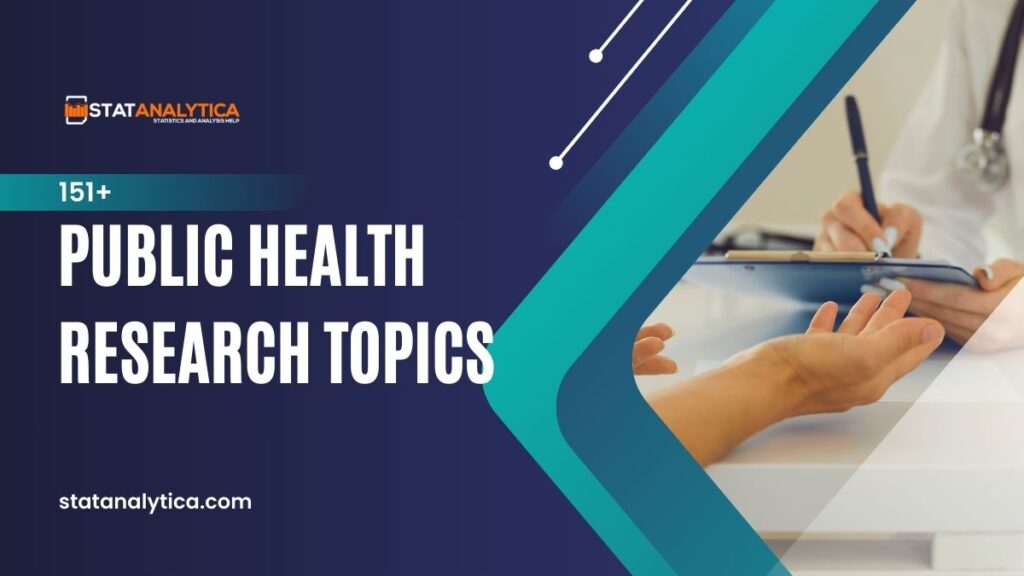
The important area of public health research is essential to forming laws, influencing medical procedures, and eventually enhancing community well-being. As we delve into the vast landscape of public health research topics, it’s essential to understand the profound impact they have on society.
This blog aims to provide a comprehensive guide to selecting and understanding the diverse array of public health research topics.
Overview of Public Health Research Topics
Table of Contents
Public health research encompasses a wide range of subjects, reflecting the interdisciplinary nature of the field. From epidemiology and health policy to environmental health and infectious diseases, researchers navigate through various dimensions to address complex health challenges.
Each category holds its own significance, contributing to the overall understanding of public health dynamics.
Key Considerations in Selecting Public Health Research Topics
- Current Relevance: Assess the timeliness of potential topics by considering recent health trends, emerging issues, and societal concerns.
- Impact on Public Health: Evaluate the potential impact of the research on improving health outcomes, addressing disparities, or influencing policy and interventions.
- Feasibility and Resources: Gauge the practicality of conducting research on a particular topic, considering available resources, data accessibility, and research infrastructure.
- Ethical Considerations: Scrutinize the ethical implications of the research, ensuring it aligns with ethical standards and guidelines, especially when dealing with vulnerable populations or sensitive topics.
Top 151+ Public Health Research Topics
Epidemiology.
- The Impact of Social Determinants on Disease Outcomes
- Patterns and Trends in Emerging Infectious Diseases
- Investigating Health Disparities among Different Ethnic Groups
- Childhood Obesity and its Long-Term Health Consequences
- Assessing the Effectiveness of Contact Tracing in Disease Control
Health Policy
- Universal Healthcare: Comparative Analysis of Global Models
- The Role of Telemedicine in Improving Healthcare Access
- Evaluating Mental Health Policies and Their Impact on Communities
- Assessing the Impact of Affordable Care Act on Public Health
- Vaccine Policies and Public Perception: A Comprehensive Study
Environmental Health
- Climate Change and Health: Adapting to the Challenges
- Air Quality and Respiratory Health in Urban Environments
- Waterborne Diseases and Strategies for Safe Water Supply
- Occupational Health Hazards: A Comprehensive Workplace Analysis
- The Impact of Green Spaces on Mental Health in Urban Areas
Infectious Diseases
- Antimicrobial Resistance: Strategies for Mitigation
- Vaccination Strategies and Herd Immunity
- Global Health Security: Preparedness for Pandemics
- The Impact of Vector-Borne Diseases on Public Health
- Emerging Trends in Antibiotic-Resistant Infections
Chronic Diseases
- Lifestyle Interventions for Preventing Cardiovascular Diseases
- Genetic Factors in the Development of Cancer: A Comprehensive Study
- Aging and Health: Addressing the Healthcare Needs of the Elderly
- Diabetes Prevention Programs: Efficacy and Implementation
- Mental Health in Chronic Disease Patients: Bridging the Gap
Maternal and Child Health
- Maternal Mortality: Understanding Causes and Prevention
- The Impact of Breastfeeding on Infant Health and Development
- Childhood Immunization: Barriers and Strategies for Improvement
- Teenage Pregnancy and Its Long-Term Health Consequences
- Mental Health Support for Postpartum Women: Current Gaps and Solutions
Health Behavior and Promotion
- Smoking Cessation Programs: Effectiveness and Challenges
- Physical Activity Promotion in Schools: Strategies for Success
- Nutrition Education and Its Impact on Healthy Eating Habits
- Mental Health Awareness Campaigns: Assessing Public Perceptions
- The Role of Social Media in Health Promotion
Global Health
- Assessing the Impact of International Aid on Global Health
- Water, Sanitation, and Hygiene (WASH) Programs in Developing Countries
- The Role of Non-Governmental Organizations in Global Health
- Communicable Disease Control in Refugee Populations
- Global Access to Essential Medicines: Challenges and Solutions
Community Health
- Community-Based Participatory Research: Best Practices and Challenges
- The Impact of Community Health Workers on Health Outcomes
- Health Literacy and its Relationship to Health Disparities
- Assessing the Effectiveness of Mobile Health (mHealth) Interventions
- Community Resilience in the Face of Public Health Crises
Healthcare Quality and Patient Safety
- Hospital-Acquired Infections: Strategies for Prevention
- Patient Safety Culture in Healthcare Organizations
- Quality Improvement Initiatives in Primary Care Settings
- Healthcare Accreditation: Impact on Patient Outcomes
- Implementing Electronic Health Records: Challenges and Benefits
Mental Health
- Stigma Reduction Programs for Mental Health Disorders
- Integrating Mental Health into Primary Care Settings
- The Impact of COVID-19 on Mental Health: Long-Term Implications
- Mental Health in the Workplace: Strategies for Employee Well-being
- Suicide Prevention Programs: Effectiveness and Outreach
Health Disparities
- Racial Disparities in Healthcare: Addressing Systemic Inequities
- LGBTQ+ Health Disparities and Inclusive Healthcare Practices
- Socioeconomic Status and Access to Healthcare Services
- Geographical Disparities in Health: Rural vs. Urban
- The Impact of Gender on Health Outcomes and Access to Care
Public Health Education
- Evaluation of Public Health Education Programs
- Innovative Approaches to Teaching Public Health Concepts
- Online Health Education Platforms: Opportunities and Challenges
- Interdisciplinary Training in Public Health: Bridging Gaps
- Continuing Education for Public Health Professionals: Current Landscape
Digital Health
- The Role of Wearable Devices in Health Monitoring
- Telehealth Adoption: Barriers and Opportunities
- Health Apps for Chronic Disease Management: User Perspectives
- Blockchain Technology in Healthcare: Privacy and Security Implications
- Artificial Intelligence in Disease Diagnosis and Prediction
Health Economics
- Cost-Effectiveness of Preventive Health Interventions
- The Impact of Healthcare Financing Models on Access to Care
- Pharmaceutical Pricing and Access to Essential Medicines
- Economic Evaluation of Health Promotion Programs
- Health Insurance Coverage and Health Outcomes: A Global Perspective
Innovations in Public Health
- 3D Printing in Healthcare: Applications and Future Prospects
- Gene Editing Technologies and their Ethical Implications
- Smart Cities and Public Health: Integrating Technology for Well-being
- Nanotechnology in Medicine: Potential for Disease Treatment
- The Role of Drones in Public Health: Surveillance and Intervention
Food Safety and Nutrition
- Foodborne Illness Outbreaks: Investigating Causes and Prevention
- Sustainable Food Systems: Implications for Public Health
- Nutritional Interventions for Malnutrition in Developing Countries
- Food Labeling and Consumer Understanding: A Critical Review
- The Impact of Fast Food Consumption on Public Health
Substance Abuse
- Opioid Epidemic: Strategies for Prevention and Treatment
- Harm Reduction Approaches in Substance Abuse Programs
- Alcohol Consumption Patterns and Public Health Outcomes
- Smoking and Mental Health: Exploring the Connection
- Novel Psychoactive Substances: Emerging Threats and Strategies
Occupational Health
- Workplace Stress and Mental Health: Intervention Strategies
- Occupational Hazards in Healthcare Professions: A Comparative Analysis
- Ergonomics in the Workplace: Improving Worker Health and Productivity
- Night Shift Work and Health Consequences: Addressing Challenges
- Occupational Health and Safety Regulations: A Global Overview
Disaster Preparedness and Response
- Pandemic Preparedness and Lessons from COVID-19
- Natural Disasters and Mental Health: Post-Traumatic Stress
- Emergency Response Systems: Improving Timeliness and Efficiency
- Communicating Health Risks During Emergencies: Public Perception
- Collaborative Approaches to Disaster Response in Global Health
Cancer Research
- Precision Medicine in Cancer Treatment: Current Advancements
- Cancer Screening Programs: Efficacy and Challenges
- Environmental Factors and Cancer Risk: Exploring Connections
- Survivorship Care Plans: Enhancing Quality of Life after Cancer
- Integrative Therapies in Cancer Care: Complementary Approaches
Sexual and Reproductive Health
- Access to Contraception in Developing Countries: Challenges and Solutions
- Comprehensive Sex Education Programs: Impact on Teen Pregnancy
- Reproductive Health Rights: Global Perspectives and Challenges
- Infertility Treatment: Ethical Considerations and Societal Impact
- Maternal and Child Health in Conflict Zones: Addressing Challenges
Cardiovascular Health
- Hypertension Prevention Programs: Strategies and Effectiveness
- Cardiovascular Disease in Women: Gender-Specific Risk Factors
- Innovations in Cardiac Rehabilitation Programs
- Artificial Heart Technology: Advancements and Ethical Implications
- Impact of Air Pollution on Cardiovascular Health: A Global Concern
Social Determinants of Health
- Educational Attainment and Health Outcomes: Exploring Links
- Income Inequality and its Impact on Population Health
- Social Support Networks and Mental Health: A Comprehensive Study
- Neighborhood Environments and Health Disparities
- Employment and Health: The Interplay of Work and Well-being
Genomics and Public Health
- Population Genomics and its Implications for Public Health
- Genetic Counseling and Education: Empowering Individuals and Families
- Ethical Issues in Genetic Research: Privacy and Informed Consent
- Pharmacogenomics: Tailoring Drug Therapies to Individual Genotypes
- Gene-Environment Interactions in Disease Risk: Unraveling Complexities
Public Health Ethics
- Informed Consent in Public Health Research: Current Practices
- Ethical Challenges in Global Health Research: Balancing Priorities
- Confidentiality in Public Health Reporting: Striking the Right Balance
- Research with Vulnerable Populations: Ethical Considerations
- Ethical Implications of Emerging Technologies in Healthcare
Health Communication
- The Role of Media in Shaping Public Health Perceptions
- Health Literacy Interventions: Improving Understanding of Health Information
- Social Media Campaigns for Public Health Promotion: Best Practices
- Tailoring Health Messages for Diverse Audiences: Cultural Competency
- Risk Communication in Public Health Emergencies: Lessons Learned
Nutrigenomics
- Personalized Nutrition Plans based on Genetic Makeup
- Impact of Nutrigenomics on Chronic Disease Prevention
- Ethical Considerations in Nutrigenomics Research
- Public Perceptions of Nutrigenomic Testing: A Qualitative Study
- Integrating Nutrigenomics into Public Health Policies
Public Health and Artificial Intelligence
- Predictive Analytics in Disease Surveillance: Harnessing AI for Early Detection
- Ethical Considerations in AI-Driven Health Decision Support Systems
- Machine Learning in Epidemiology: Predicting Disease Outbreaks
- Natural Language Processing in Public Health: Text Mining for Insights
- Bias in AI Algorithms: Implications for Health Equity
Health Disparities in Aging
- Geriatric Health Disparities: Bridging the Gap in Elderly Care
- Ageism in Healthcare: Addressing Stereotypes and Discrimination
- Social Isolation and Health Consequences in Aging Populations
- Access to Palliative Care for Older Adults: A Global Perspective
- Alzheimer’s Disease and Ethnic Disparities in Diagnosis and Treatment
- Loneliness and Mental Health in the Elderly: Interventions and Support
Research Methodologies in Public Health
Public health research employs various methodologies, including quantitative, qualitative, and mixed-methods approaches. Each method brings its own strengths to the research process, allowing researchers to gain a comprehensive understanding of the complex issues they investigate.
Community-based participatory research is another valuable approach, emphasizing collaboration with communities to address their specific health concerns.
Challenges and Opportunities in Public Health Research
While public health research is immensely rewarding, it comes with its own set of challenges. Funding constraints, ethical dilemmas, the need for interdisciplinary collaboration, and the integration of technology pose both obstacles and opportunities.
Researchers must navigate these challenges to ensure their work has a meaningful impact on public health.
In conclusion, public health research topics are diverse and dynamic, reflecting the complex nature of the field. As researchers embark on their journeys, they must carefully consider the relevance, impact, and ethical implications of their chosen topics.
The collaborative and interdisciplinary nature of public health research positions it as a powerful tool in addressing the health challenges of our time. By exploring the depths of these topics, researchers contribute to the collective effort to build healthier and more equitable communities.
As we move forward, a continued exploration of relevant public health research topics is essential for shaping the future of healthcare and improving the well-being of populations worldwide.
Related Posts

Step by Step Guide on The Best Way to Finance Car

The Best Way on How to Get Fund For Business to Grow it Efficiently
Information
- Author Services
Initiatives
You are accessing a machine-readable page. In order to be human-readable, please install an RSS reader.
All articles published by MDPI are made immediately available worldwide under an open access license. No special permission is required to reuse all or part of the article published by MDPI, including figures and tables. For articles published under an open access Creative Common CC BY license, any part of the article may be reused without permission provided that the original article is clearly cited. For more information, please refer to https://www.mdpi.com/openaccess .
Feature papers represent the most advanced research with significant potential for high impact in the field. A Feature Paper should be a substantial original Article that involves several techniques or approaches, provides an outlook for future research directions and describes possible research applications.
Feature papers are submitted upon individual invitation or recommendation by the scientific editors and must receive positive feedback from the reviewers.
Editor’s Choice articles are based on recommendations by the scientific editors of MDPI journals from around the world. Editors select a small number of articles recently published in the journal that they believe will be particularly interesting to readers, or important in the respective research area. The aim is to provide a snapshot of some of the most exciting work published in the various research areas of the journal.
Original Submission Date Received: .
- Active Journals
- Find a Journal
- Proceedings Series
- For Authors
- For Reviewers
- For Editors
- For Librarians
- For Publishers
- For Societies
- For Conference Organizers
- Open Access Policy
- Institutional Open Access Program
- Special Issues Guidelines
- Editorial Process
- Research and Publication Ethics
- Article Processing Charges
- Testimonials
- Preprints.org
- SciProfiles
- Encyclopedia

Article Menu
- Subscribe SciFeed
- Recommended Articles
- Google Scholar
- on Google Scholar
- Table of Contents
Find support for a specific problem in the support section of our website.
Please let us know what you think of our products and services.
Visit our dedicated information section to learn more about MDPI.
JSmol Viewer
Real-world treatment patterns, health outcomes, and healthcare resource use in advanced common egfr-positive non-small cell lung cancer patients treated with osimertinib in alberta.

1. Introduction
2. materials and methods, 2.1. study population and data sources, 2.2. statistical analyses, 3.1. patient characteristics, 3.2. overall cohort: os and ttntd, 3.3. post-osimertinib cohort: os and ttntd, 3.4. healthcare resource utilization, 3.5. treatment patterns, 4. discussion, 4.1. overall cohort, 4.2. post-osimertinib cohort, 4.3. treatment patterns and healthcare resource utilization, 4.4. strengths and limitations, 5. conclusions, author contributions, institutional review board statement, informed consent statement, data availability statement, conflicts of interest.
- Canadian Cancer Statistics 2023. Available online: https://cdn.cancer.ca/-/media/files/research/cancer-statistics/2023-statistics/2023_PDF_EN.pdf (accessed on 7 March 2024).
- Travis, W. Pathology & Genetics Tumours of the Lung, Pleura, Thymus and Heart ; World Health Organization: Geneva, Switzerland, 2004. [ Google Scholar ]
- da Cunha Santos, G.; Shepherd, F.A.; Tsao, M.S. EGFR mutations and lung cancer. Annu. Rev. Pathol. 2011 , 6 , 49–69. [ Google Scholar ] [ CrossRef ] [ PubMed ]
- Graham, R.P.; Treece, A.L.; Lindeman, N.I.; Vasalos, P.; Shan, M.; Jennings, L.J.; Rimm, D.L. Worldwide Frequency of Commonly Detected EGFR Mutations. Arch. Pathol. Lab. Med. 2018 , 142 , 163–167. [ Google Scholar ] [ CrossRef ] [ PubMed ]
- Melosky, B.; Banerji, S.; Blais, N.; Chu, Q.; Juergens, R.; Leighl, N.B.; Liu, G.; Cheema, P. Canadian consensus: A new systemic treatment algorithm for advanced EGFR-mutated non-small-cell lung cancer. Curr. Oncol. 2020 , 27 , e146–e155. [ Google Scholar ] [ CrossRef ] [ PubMed ]
- Woodburn, J.R. The epidermal growth factor receptor and its inhibition in cancer therapy. Pharmacol. Ther. 1999 , 82 , 241–250. [ Google Scholar ] [ CrossRef ] [ PubMed ]
- Riess, J.W.; Gandara, D.R.; Frampton, G.M.; Madison, R.; Peled, N.; Bufill, J.A.; Dy, G.K.; Ou, S.I.; Stephens, P.J.; McPherson, J.D.; et al. Diverse EGFR Exon 20 Insertions and Co-Occurring Molecular Alterations Identified by Comprehensive Genomic Profiling of NSCLC. J. Thorac. Oncol. 2018 , 13 , 1560–1568. [ Google Scholar ] [ CrossRef ] [ PubMed ]
- Russo, A.; Franchina, T.; Ricciardi, G.; Battaglia, A.; Picciotto, M.; Adamo, V. Heterogeneous Responses to Epidermal Growth Factor Receptor (EGFR) Tyrosine Kinase Inhibitors (TKIs) in Patients with Uncommon EGFR Mutations: New Insights and Future Perspectives in this Complex Clinical Scenario. Int. J. Mol. Sci. 2019 , 20 , 1431. [ Google Scholar ] [ CrossRef ]
- Passaro, A.; Mok, T.; Peters, S.; Popat, S.; Ahn, M.J.; de Marinis, F. Recent Advances on the Role of EGFR Tyrosine Kinase Inhibitors in the Management of NSCLC With Uncommon, Non Exon 20 Insertions, EGFR Mutations. J. Thorac. Oncol. 2021 , 16 , 764–773. [ Google Scholar ] [ CrossRef ]
- Xu, J.; Jin, B.; Chu, T.; Dong, X.; Yang, H.; Zhang, Y.; Wu, D.; Lou, Y.; Zhang, X.; Wang, H.; et al. EGFR tyrosine kinase inhibitor (TKI) in patients with advanced non-small cell lung cancer (NSCLC) harboring uncommon EGFR mutations: A real-world study in China. Lung Cancer 2016 , 96 , 87–92. [ Google Scholar ] [ CrossRef ]
- Planchard, D.; Jänne, P.A.; Cheng, Y.; Yang, J.C.; Yanagitani, N.; Kim, S.W.; Sugawara, S.; Yu, Y.; Fan, Y.; Geater, S.L.; et al. Osimertinib with or without Chemotherapy in EGFR-Mutated Advanced NSCLC. N. Engl. J. Med. 2023 , 389 , 1935–1948. [ Google Scholar ] [ CrossRef ]
- Ramalingam, S.S.; Vansteenkiste, J.; Planchard, D.; Cho, B.C.; Gray, J.E.; Ohe, Y.; Zhou, C.; Reungwetwattana, T.; Cheng, Y.; Chewaskulyong, B.; et al. Overall Survival with Osimertinib in Untreated, EGFR-Mutated Advanced NSCLC. N. Engl. J. Med. 2020 , 382 , 41–50. [ Google Scholar ] [ CrossRef ]
- Mok, T.S.; Wu, Y.L.; Ahn, M.J.; Garassino, M.C.; Kim, H.R.; Ramalingam, S.S.; Shepherd, F.A.; He, Y.; Akamatsu, H.; Theelen, W.S.; et al. Osimertinib or Platinum-Pemetrexed in EGFR T790M-Positive Lung Cancer. N. Engl. J. Med. 2017 , 376 , 629–640. [ Google Scholar ] [ CrossRef ] [ PubMed ]
- Vyse, S.; Huang, P.H. Targeting EGFR exon 20 insertion mutations in non-small cell lung cancer. Signal Transduct. Target. Ther. 2019 , 4 , 5. [ Google Scholar ] [ CrossRef ] [ PubMed ]
- Passaro, A.; Wang, J.; Wang, Y.; Lee, S.H.; Melosky, B.; Shih, J.Y.; Wang, J.; Azuma, K.; Juan-Vidal, O.; Cobo, M.; et al. Amivantamab plus chemotherapy with and without lazertinib in EGFR-mutant advanced NSCLC after disease progression on osimertinib: Primary results from the phase III MARIPOSA-2 study. Ann. Oncol. 2024 , 35 , 77–90. [ Google Scholar ] [ CrossRef ] [ PubMed ]
- Jaiyesimi, I.A.; Leighl, N.B.; Ismaila, N.; Alluri, K.; Florez, N.; Gadgeel, S.; Masters, G.; Schenk, E.L.; Schneider, B.J.; Sequist, L.; et al. Therapy for Stage IV Non–Small Cell Lung Cancer With Driver Alterations: ASCO Living Guideline, Version 2023.3. J. Clin. Oncol. 2024 , 42 , e1–e22. [ Google Scholar ] [ CrossRef ] [ PubMed ]
- Koulouris, A.; Tsagkaris, C.; Corriero, A.C.; Metro, G.; Mountzios, G. Resistance to TKIs in EGFR-Mutated Non-Small Cell Lung Cancer: From Mechanisms to New Therapeutic Strategies. Cancers 2022 , 14 , 3337. [ Google Scholar ] [ CrossRef ] [ PubMed ]
- Hendriks, L.E.; Kerr, K.M.; Menis, J.; Mok, T.S.; Nestle, U.; Passaro, A.; Peters, S.; Planchard, D.; Smit, E.F.; Solomon, B.J.; et al. Non-oncogene-addicted metastatic non-small-cell lung cancer: ESMO Clinical Practice Guideline for diagnosis, treatment and follow-up. Ann. Oncol. 2023 , 34 , 358–376. [ Google Scholar ] [ CrossRef ]
- Fu, K.; Xie, F.; Wang, F.; Fu, L. Therapeutic strategies for EGFR-mutated non-small cell lung cancer patients with osimertinib resistance. J. Hematol. Oncol. 2022 , 15 , 173. [ Google Scholar ] [ CrossRef ]
- Rangachari, D.; Yamaguchi, N.; VanderLaan, P.A.; Folch, E.; Mahadevan, A.; Floyd, S.R.; Uhlmann, E.J.; Wong, E.T.; Dahlberg, S.E.; Huberman, M.S.; et al. Brain metastases in patients with EGFR-mutated or ALK-rearranged non-small-cell lung cancers. Lung Cancer 2015 , 88 , 108–111. [ Google Scholar ] [ CrossRef ] [ PubMed ]
- Lin, Y.T.; Tsai, T.H.; Wu, S.G.; Liu, Y.N.; Yu, C.J.; Shih, J.Y. Complex EGFR mutations with secondary T790M mutation confer shorter osimertinib progression-free survival and overall survival in advanced non-small cell lung cancer. Lung Cancer 2020 , 145 , 1–9. [ Google Scholar ] [ CrossRef ]
- Chmielecki, J.; Gray, J.E.; Cheng, Y.; Ohe, Y.; Imamura, F.; Cho, B.C.; Lin, M.C.; Majem, M.; Shah, R.; Rukazenkov, Y.; et al. Candidate mechanisms of acquired resistance to first-line osimertinib in EGFR-mutated advanced non-small cell lung cancer. Nat. Commun. 2023 , 14 , 1070. [ Google Scholar ] [ CrossRef ]
- Cho, B.C.; Felip, E.; Hayashi, H.; Thomas, M.; Lu, S.; Besse, B.; Sun, T.; Martinez, M.; Sethi, S.N.; Shreeve, S.M.; et al. MARIPOSA: Phase 3 study of first-line amivantamab + lazertinib versus osimertinib in EGFR-mutant non-small-cell lung cancer. Future Oncol. 2022 , 18 , 639–647. [ Google Scholar ] [ CrossRef ] [ PubMed ]
- Farah, E.; Carbonell, C.; Boyne, D.J.; Brenner, D.R.; Henning, J.-W.; Moldaver, D.; Shokar, S.; Cheung, W.Y. Treatment Patterns and Health Outcomes among Patients with HER2 IHC0/-Low Metastatic or Recurrent Breast Cancer. Cancers 2024 , 16 , 518. [ Google Scholar ] [ CrossRef ] [ PubMed ]
- Martins, D.; O’Sullivan, D.E.; Boyne, D.J.; Cheung, W.Y.; Allonby, O.; Habash, M.; Brenner, D.R.; Riemer, J.; McGee, J. Understanding Characteristics, Treatment Patterns, and Clinical Outcomes for Individuals with Advanced or Recurrent Endometrial Cancer in Alberta, Canada: A Retrospective, Population-Based Cohort Study. Curr. Oncol. 2023 , 30 , 2277–2289. [ Google Scholar ] [ CrossRef ] [ PubMed ]
- O’Sullivan, D.E.; Cheung, W.Y.; Syed, I.A.; Moldaver, D.; Shanahan, M.K.; Bebb, D.G.; Sit, C.; Brenner, D.R.; Boyne, D.J. Real-World Treatment Patterns, Clinical Outcomes, and Health Care Resource Utilization in Extensive-Stage Small Cell Lung Cancer in Canada. Curr. Oncol. 2021 , 28 , 3091–3103. [ Google Scholar ] [ CrossRef ] [ PubMed ]
- Karim, S.; Lowther, J.; Gyulay, G.; O’Sullivan, D.; Wallis, C.J.D.; Yip, S.M.; Brenner, D.R.; Boyne, D.J.; Cheung, W.Y. A Real-World Evidence Study Using Alberta-Population-Based Data to Describe Treatment Patterns for Metastatic Castration-Sensitive Prostate Cancer Patients (AWARENESS). Curr. Oncol. 2023 , 30 , 8149–8158. [ Google Scholar ] [ CrossRef ] [ PubMed ]
- O’Sullivan, D.E.; Boyne, D.J.; Gogna, P.; Brenner, D.R.; Cheung, W.Y. Understanding Real-World Treatment Patterns and Clinical Outcomes among Metastatic Melanoma Patients in Alberta, Canada. Curr. Oncol. 2023 , 30 , 4166–4176. [ Google Scholar ] [ CrossRef ] [ PubMed ]
- Yan, J.T.; Boyne, D.J.; Lo, E.; Farah, E.; O’Sullivan, D.E.; Cheung, W.Y. Real-world impact of patient-reported outcome measurement on overall survival, healthcare use and treatment discontinuation in cancer patients. J. Comp. Eff. Res. 2023 , 12 , e230061. [ Google Scholar ] [ CrossRef ] [ PubMed ]
- Boyne, D.J.; Ngan, E.; Carbonell, C.; Wani, R.J.; Cirone Morris, C.; Martinez, D.J.; Cheung, W.Y. Real-World Study to Assess Patterns of Treatment Practices and Clinical Outcomes in Metastatic Colorectal Cancer Patients with RAS Wild-Type Left-Sided Tumours in Canada. Curr. Oncol. 2023 , 30 , 8220–8232. [ Google Scholar ] [ CrossRef ]
- Gandara, D.R.; Li, T.; Lara, P.N.; Kelly, K.; Riess, J.W.; Redman, M.W.; Mack, P.C. Acquired resistance to targeted therapies against oncogene-driven non-small-cell lung cancer: Approach to subtyping progressive disease and clinical implications. Clin. Lung Cancer 2014 , 15 , 1–6. [ Google Scholar ] [ CrossRef ]
Click here to enlarge figure
| Osimertinib (N = 379) | Post-Osimertinib (N = 86) | |
|---|---|---|
| Follow-up time (months) | 36.3 [30.2] | 45.7 [30.8] |
| Source | ||
| Administrative data | 190 (50.1%) | 61 (70.9%) |
| Chart abstraction | 189 (49.9%) | 25 (29.1%) |
| EGFR mutation status (%) | ||
| Exon 19 deletion | 237 (62.5%) | 58 (67.4%) |
| L858R | 137 (36.1%) | 28 (32.6%) |
| Unspecified | NR | NR |
| Age at diagnosis | 65.7 [12.8] | 60.5 [12.5] |
| Sex | ||
| Female | 258 (68.3%) | 51 (59.3%) |
| Male | 120 (31.7%) | 35 (40.7%) |
| Year of diagnosis | ||
| <2015 | 30 (7.9%) | 10 (11.6%) |
| 2015 | 16 (4.2%) | NR |
| 2016 | 31 (8.2%) | 13 (15.1%) |
| 2017 | 30 (7.9%) | NR |
| 2018 | 47 (12.4%) | 10 (11.6%) |
| 2019 | 51 (13.5%) | 13 (15.1%) |
| 2020 | 19 (5.0%) | NR |
| 2021 | 91 (24.0%) | 16 (18.6%) |
| 2022 | 64 (16.9%) | NR |
| Treatment facility | ||
| Academic | 344 (90.8%) | NR |
| Community | 35 (9.2%) | NR |
| Stage at diagnosis | ||
| I | 26 (6.9%) | NR |
| II | NR | NR |
| III | 42 (11.1%) | 10 (11.8%) |
| IV | 300 (79.6%) | 66 (77.6%) |
| Charlson Index | 0.7 [0.9] | 0.6 [0.8] |
| Number of metastases | ||
| 0 | 55 (14.5%) | 16 (18.6%) |
| 1 | 65 (17.2%) | 22 (25.6%) |
| 2 | 32 (8.4%) | 10 (11.6%) |
| 3+ | 38 (10.0%) | 13 (15.1%) |
| Unknown | 189 (49.9%) | 25 (29.1%) |
| Metastases location | ||
| Lung | 264 (69.7%) | 58 (67.4%) |
| Bone | 125 (33.3%) | 33 (38.4%) |
| Liver | 49 (12.9%) | 16 (18.6%) |
| Brain | 80 (21.1%) | 16 (18.6%) |
| Other | 41 (10.8%) | NR |
| Osimertinib discontinuation | ||
| No | 124 (32.7%) | NR |
| Yes | 255 (67.3%) | NR |
| Osimertinib line | ||
| 1L | 182 (48.0%) | 26 (30.2%) |
| 2L+ | 197 (52.0%) | 60 (69.8%) |
| Vital status | ||
| Alive | 158 (41.7) | 25 (29.1) |
| Deceased | 221 (58.3) | 61 (70.9) |
| Number of lines received | 2.0 [1.2] | 3.4 [1.2] |
| Strata | Median OS, Months | Strata |
|---|---|---|
| Sex | ||
| Female | 23.97 (19.9–27.3) | 18.81 (16.7–24.4) |
| Male | 20.65 (15.6–25.1) | 15.68 (12.4–21.8) |
| Age group | ||
| <65 | 24.76 (20.7–29.0) | 17.19 (14.9–23.9) |
| 65+ | 20.94 (17.8–24.6) | 18.35 (15.0–23.3) |
| Cancer stage at diagnosis | ||
| I or II | 24.23 (20.9–NA) | 20.94 (15.9–NA) |
| III | 24.76 (17.2–NA) | 22.39 (15.6–28.4) |
| IV | 22.19 (18.4–25.6) | 16.87 (14.9–21.8) |
| Osimertinib line | ||
| 1L | 24.00 (22.2–NA) | 19.50 (16.7–26.6) |
| 2L+ | 19.89 (15.6–24.4) | 14.93 (12.2–20.9) |
| Year 1 | Year 2 | Year 3 | Year 4 | Year 5 | |
|---|---|---|---|---|---|
| Ever treated with osimertinib (N = 379) | |||||
| No. patients alive | 379 | 330 | 212 | 141 | 94 |
| Inpatient hospitalizations | 0.7 (274) | 0.5 (158) | 0.5 (88) | 0.4 (54) | 0.5 (40) |
| Days hospitalized | 6.4 (2418) | 4.4 (1354) | 5.0 (972) | 9.1 (1115) | 6.2 (493) |
| Outpatient encounters | 8.9 (3376) | 5.4 (1635) | 5.2 (1015) | 4.7 (581) | 4.8 (366) |
| Non-emergency | 7.5 (2826) | 4.2 (1279) | 4.1 (803) | 3.7 (488) | 3.8 (293) |
| Emergency | 1.5 (550) | 1.2 (359) | 1.1 (212) | 1.0 (123) | 1.0 (83) |
| Post-osimertinib (N = 86) | |||||
| No. patients alive | 86 | 84 | 64 | 43 | 31 |
| Inpatient hospitalizations | 0.6 (53) | 0.6 (45) | 0.6 (35) | 0.4 (17) | 0.6 (15) |
| Days hospitalized | 3.4 (293) | 4.2 (337) | 6.9 (419) | 6.3 (259) | 6.5 (168) |
| Outpatient encounters | 9.1 (780) | 5.8 (466) | 6.6 (404) | 4.8 (200) | 5.7 (136) |
| Non-emergency | 7.5 (641) | 4.6 (364) | 5.2 (316) | 3.8 (160) | 4.5 (113) |
| Emergency | 1.6 (139) | 1.3 (102) | 1.4 (88) | 1.0 (41) | 1.1 (28) |
| The statements, opinions and data contained in all publications are solely those of the individual author(s) and contributor(s) and not of MDPI and/or the editor(s). MDPI and/or the editor(s) disclaim responsibility for any injury to people or property resulting from any ideas, methods, instructions or products referred to in the content. |
Share and Cite
Cheung, W.Y.; Carbonell, C.; Navani, V.; Sangha, R.S.; Ewara, E.M.; Elia-Pacitti, J.; Iczkovitz, S.; Jarada, T.N.; Warkentin, M.T. Real-World Treatment Patterns, Health Outcomes, and Healthcare Resource Use in Advanced Common EGFR-Positive Non-Small Cell Lung Cancer Patients Treated with Osimertinib in Alberta. Curr. Oncol. 2024 , 31 , 4382-4396. https://doi.org/10.3390/curroncol31080327
Cheung WY, Carbonell C, Navani V, Sangha RS, Ewara EM, Elia-Pacitti J, Iczkovitz S, Jarada TN, Warkentin MT. Real-World Treatment Patterns, Health Outcomes, and Healthcare Resource Use in Advanced Common EGFR-Positive Non-Small Cell Lung Cancer Patients Treated with Osimertinib in Alberta. Current Oncology . 2024; 31(8):4382-4396. https://doi.org/10.3390/curroncol31080327
Cheung, Winson Y., Chantelle Carbonell, Vishal Navani, Randeep S. Sangha, Emmanuel M. Ewara, Julia Elia-Pacitti, Sandra Iczkovitz, Tamer N. Jarada, and Matthew T. Warkentin. 2024. "Real-World Treatment Patterns, Health Outcomes, and Healthcare Resource Use in Advanced Common EGFR-Positive Non-Small Cell Lung Cancer Patients Treated with Osimertinib in Alberta" Current Oncology 31, no. 8: 4382-4396. https://doi.org/10.3390/curroncol31080327
Article Metrics
Article access statistics, further information, mdpi initiatives, follow mdpi.

Subscribe to receive issue release notifications and newsletters from MDPI journals

Transforming the understanding and treatment of mental illnesses.
Información en español
Celebrating 75 Years! Learn More >>
- About the Acting NIMH Director
- Advisory Boards and Groups
- Strategic Plan
- Offices and Divisions
- Careers at NIMH
- Staff Directories
- Getting to NIMH

From Breakthroughs to Best Practices: How NIMH Transforms Research Into Real-World Care
Patricia Arean, Susan Azrin, Michael Freed, Adam Haim, Jennifer Humensky, Stephen O’Connor, Jane Pearson, Mary Rooney, Matthew Rudorfer, Joel Sherrill, and Belinda Sims, on behalf of the Division of Services and Intervention Research.
February 26, 2024 • 75th Anniversary
For 75 years, NIMH has transformed the understanding and treatment of mental illnesses through basic and clinical research—bringing hope to millions of people. This Director’s Message, guest written by NIMH’s Division of Services and Intervention Research , is part of an anniversary series celebrating this momentous milestone.
More than one in five adults in the United States live with a mental illness, and this number is expected to rise in the coming decades. Since its establishment, the National Institute of Mental Health (NIMH) has known that people need more than exciting scientific discoveries—they need access to effective treatments and the best quality of care available. After all, finding new treatments and cures means little to the millions of people impacted by mental illnesses if there is no way to translate these breakthroughs into policy and practice.
In the Division of Services and Intervention Research (DSIR) , we provide the critical link between basic and clinical science and explore the best practices to implement those evidence-based treatments. We’re dedicated to growing and investing in this field of science, and although much work is still to be done, we’ve had some notable successes impacting real-world public health practices and policies.
Improving outcomes for people with early psychosis
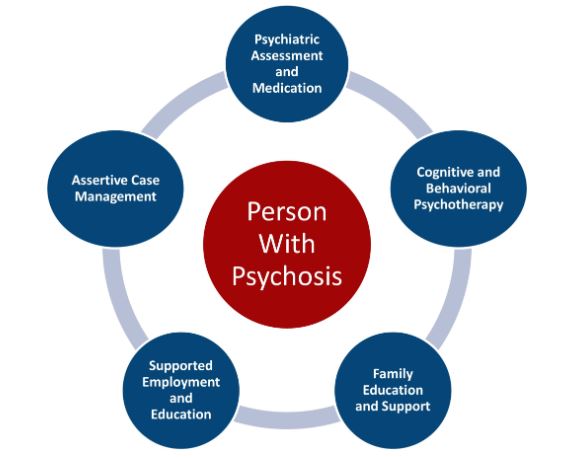
One example of research that has bridged the divide between science and policy is the Recovery After an Initial Schizophrenia Episode , or RAISE, studies. Research has shown that young people with schizophrenia and related psychotic disorders have much better outcomes when they receive effective treatment within months of their first symptoms. The RAISE studies, which NIMH supported, focused on methods to detect and treat early psychosis in a timelier fashion. These studies found that a type of care called coordinated specialty care (CSC)—a recovery-oriented, team-based approach to treating early psychosis—was more effective than the typical care used at the time.
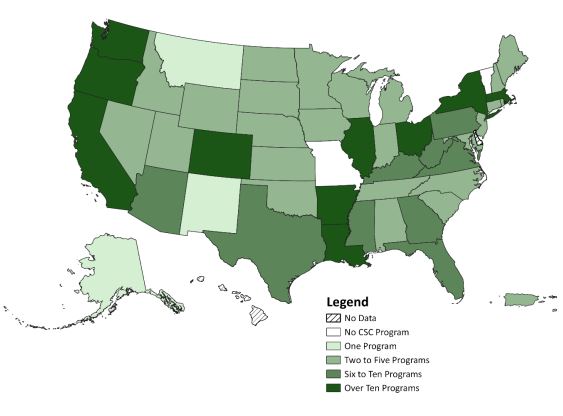
NIMH engaged extensively with members of the early schizophrenia care community to ensure RAISE findings would be relevant and actionable for rapid translation into practice. These efforts created the momentum for the broad expansion of CSC treatment programs nationwide. In 2023, the creation of associated billing codes further supported this model of mental health care, allowing for increased adoption by care providers.
From CSC programs in two states in 2008, the United States now has more than 360 such programs, allowing more people to receive this evidence-based care.
Removing barriers to schizophrenia treatment
Clozapine, the only drug approved for treatment-resistant schizophrenia, is underutilized in the United States, particularly among African American communities. Many reasons have been linked to this disparity, including provider bias, lack of trust in the mental health care system for African American clients, and an overprescribing of first-generation antipsychotic medication for African Americans with schizophrenia. Additionally, clozapine has been associated with an increased risk of the onset or exacerbation of neutropenia, a condition that affects white blood cells and impairs the body’s ability to fight infection. Benign ethnic neutropenia is a chronic form of neutropenia that's present from birth and commonly seen in people of African descent.
In 2015, NIMH supported a large, multinational study that investigated the use of clozapine in individuals of African descent who have benign neutropenia . Individuals with treatment-resistant schizophrenia who had benign neutropenia had previously been declared ineligible to receive clozapine treatment due to the Food and Drug Administration’s prescribing guidelines related to this medication. The finding of this NIMH-supported study opened up clozapine treatment to a whole new group of individuals with schizophrenia, allowing them to benefit from this important medication.
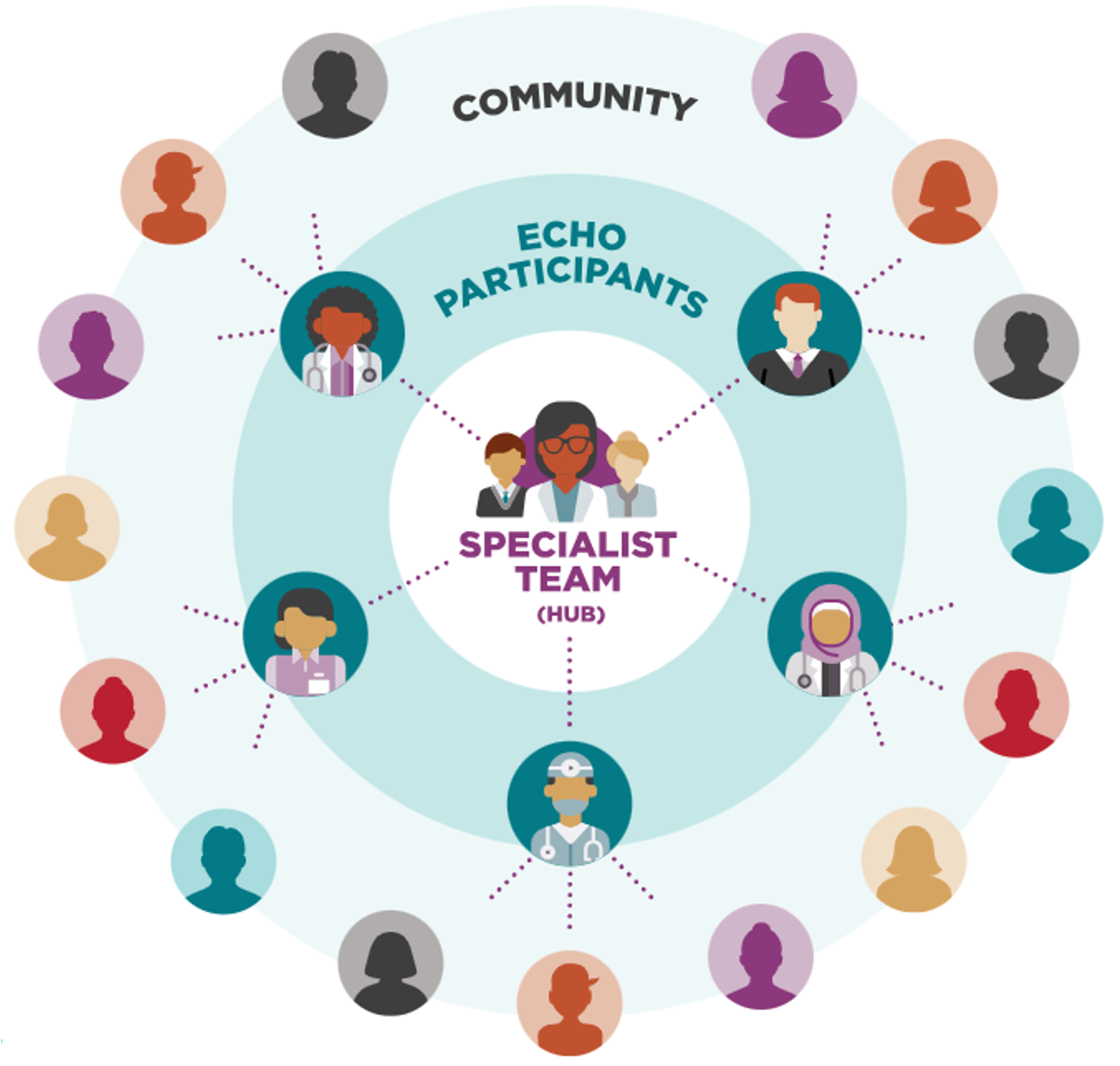
Building upon these findings, NIMH is currently funding research that evaluates the effectiveness of an educational program for clinicians about clozapine . Hundreds of prescribers and clinicians throughout the state of Maryland are participating in an innovative educational tele-mentoring program that connects them with centralized experts. The prescribing activity of clinicians participating in the educational program will be compared with those who have not participated to see if the program is effective at increasing the use of clozapine among those who would benefit from it.
Given the real-world context of this study, the findings can potentially inform clinical practice and make a needed treatment more accessible to many African Americans.
Preventing mental illnesses in youth
Recognizing that many mental health conditions have their origins early in life, NIMH has supported several seminal studies showing the effectiveness of interventions designed to prevent conduct disorder and other behavioral conditions in youth. These include evaluations of a classroom-wide behavioral intervention called the Good Behavior Game , a school-home wraparound intervention called Fast Track , and a brief family-based intervention for toddlers called Family Check-up .
Today, NIMH continues to support the analysis of data from participants in these studies who have been followed into adulthood . Initial results from these longitudinal analyses show sustained effects of the interventions on conduct disorder and unanticipated positive impacts on other mental health outcomes, such as reductions in adolescent and adult depression, anxiety, and suicide risk, thus demonstrating the broad and enduring effects of early prevention efforts.
Early intervention represents an important pathway to making quality care accessible to everyone, particularly when embedded within a broader approach that addresses social determinants of health . NIMH is currently supporting research that tests strategies to improve access to prevention services, including primary care-based depression prevention for adolescents and mental illness prevention for at-risk Latinx youth .
Suicide prevention in emergency departments
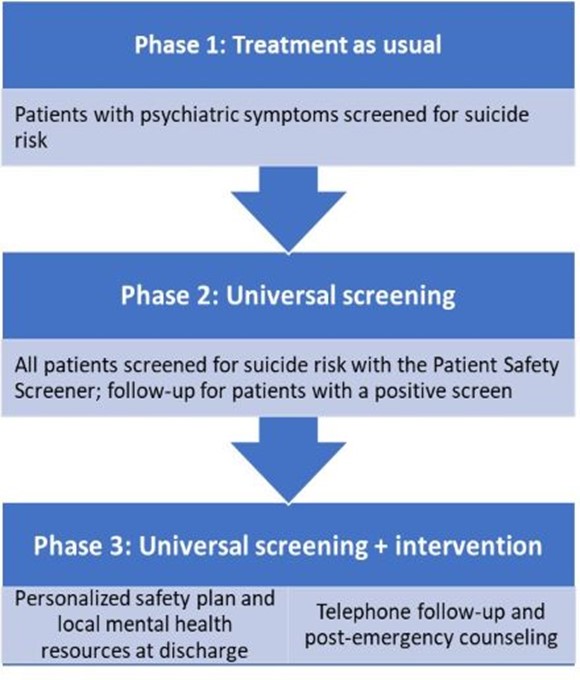
An estimated 20% of people who die by suicide visit the emergency department in the 60 days before their death, making these settings an important target for suicide prevention efforts. Given the importance of emergency departments as a place to identify and provide support for people at risk for suicide, NIMH has supported research establishing the effectiveness of suicide prevention services in these settings.
An example of this research is the multisite Emergency Department Safety Assessment and Follow-up Evaluation (ED-SAFE) study. ED-SAFE demonstrated that providing universal screening for suicide risk and a brief safety planning intervention in emergency departments, combined with limited follow-up contacts once people had been discharged, decreased subsequent suicide attempts by 30% compared to usual care.
A follow-up study also supported by NIMH, called ED-SAFE 2 , tested the integration of universal screening for suicide risk and safety planning into the clinical workflow of eight emergency departments. Study results indicated that integration of this clinical workflow resulted in sustained reductions in suicide deaths and subsequent acute health care visits.
These landmark studies convey the power of providing relatively brief, well-timed interventions during emergency encounters to reduce the risk of later suicide. NIMH continues to fund research to expand the reach of emergency department-based interventions, including the use of digital health technologies and strategies to overcome workforce shortages and other barriers to implementing suicide screening and intervention (for instance, digital technology to increase the reach of ED-SAFE ; a multi-component, tailored strategy for suicide risk reduction ). NIMH works closely with public and private partners to take recent data, like those collected during the ED-SAFE studies, and help translate them into real-world practice .
Moving forward
The studies and projects shared here are only a few examples of exciting areas of investment that have resulted in real-world changes in care. Although we’ve made progress, we recognize the need to continue supporting research with near-term potential and cultivating a vibrant workforce to lead the next generation of services and intervention research.
Further, NIMH is committed to working with researchers, communities, payors, advocacy groups, state policymakers, federal agencies, and others to help support intervention and services science that will significantly impact mental health policy and care practices—ultimately helping people access better mental health care.
- Alzheimer's disease & dementia
- Arthritis & Rheumatism
- Attention deficit disorders
- Autism spectrum disorders
- Biomedical technology
- Diseases, Conditions, Syndromes
- Endocrinology & Metabolism
- Gastroenterology
- Gerontology & Geriatrics
- Health informatics
- Inflammatory disorders
- Medical economics
- Medical research
- Medications
- Neuroscience
- Obstetrics & gynaecology
- Oncology & Cancer
- Ophthalmology
- Overweight & Obesity
- Parkinson's & Movement disorders
- Psychology & Psychiatry
- Radiology & Imaging
- Sleep disorders
- Sports medicine & Kinesiology
- Vaccination
- Breast cancer
- Cardiovascular disease
- Chronic obstructive pulmonary disease
- Colon cancer
- Coronary artery disease
- Heart attack
- Heart disease
- High blood pressure
- Kidney disease
- Lung cancer
- Multiple sclerosis
- Myocardial infarction
- Ovarian cancer
- Post traumatic stress disorder
- Rheumatoid arthritis
- Schizophrenia
- Skin cancer
- Type 2 diabetes
- Full List »
share this!
July 31, 2024
This article has been reviewed according to Science X's editorial process and policies . Editors have highlighted the following attributes while ensuring the content's credibility:
fact-checked
peer-reviewed publication
trusted source
Helping nurses provide access to sexual and reproductive health care in rural and regional areas
by Monash University

An innovative co-designed model of care to help elevate the role of nurses in contraceptive and medical abortion care in rural and regional areas has been developed as part of the landmark ORIENT study.
Development of the Monash University-led model is an important step in addressing chronic lack of access to contraceptive and medical abortion care in regional and rural communities in Australia.
Women living in regional or remote areas are 1.4 times more likely to experience an unintended pregnancy than women living in non-rural settings. For some, accessing services means traveling more than four hours due to the very limited number of primary care providers available.
A paper describing this new model of care for general practices has been published in the Journal of Advanced Nursing .
The Head of Monash University's Department of General Practice, Professor Danielle Mazza AM, said the paper, prepared by researchers from the SPHERE Centre of Research Excellence at Monash University, was an important contribution to the body of knowledge needed to elevate the role of nurses in delivery of sexual and reproductive health care .
"It is especially timely with the Federal Government's independent Unleashing the Potential of our Health Workforce Scope of Practice Review underway, and matches a growing international trend that recognizes the potential of nurses in delivering contraception and medical abortion care," Professor Mazza said.
A wide range of issues contributes to the current scarcity of services in rural and regional Australia, such as a shortage of GPs and health services in general, stigma, lack of available training, and lack of awareness of some of the most effective forms of contraception such as Long Acting Reversible Contraception (LARC), including intrauterine devices (IUDs) and the contraceptive implant.
The co-design process for development of the new model of care, led by Ph.D. Candidate Jessica Moulton, with rural and regional nurses and GPs, and patients, focused on how the model could work in general practices, how patients would access the services and the roles of GPs, practice nurses, receptionists and practice managers.
The ORIENT study, which involves nurses gaining the knowledge and skills to insert contraceptive devices and support delivery of medical abortion care, will test the effectiveness and cost effectiveness of the co-designed model of care. It is due to be completed by the end of 2025.
"Many nurses working in general practice settings have an interest in women's health and a lot of them want to provide these services," Professor Mazza said.
"The Therapeutic Goods Administration has recently removed restrictions on prescribing and dispensing the medical abortion pill MS-2 Step. The government has also made budget commitments to support primary care practitioners to train in LARC insertion."
"Nurses are poised to work to their full scope of practice to include the provision of LARC and medical abortion. But greater support is needed to facilitate this in Australia and ensure equitable access to sexual and reproductive health services , particularly for those living in regional and remote areas. This includes training, remuneration and legislative change to enable prescribing," Professor Mazza said.
Some of the key features of the codesigned model of care for the ORIENT study include:
- establishing an appropriate and effective booking service
- a website that provides support with information and discrete access
- blocking off appointments for medical abortion on a weekly or daily basis to ensure patients are seen in a timely manner
- training reception staff to ensure sensitive responses to inquiries without stigma, judgment or delays, and understand issues around culture and diversity
- fostering good relationships with other professionals involved in care including pharmacists, pathology, radiology and emergency care, especially where there are limited services
- having adequate stocks of implant/MS2-Step in clinic where possible
Thirty two regional general practices have joined the ORIENT study. When the study ends in 2025, the research team will compare the services delivered at each practice before and after the nurse -led approach began.
Explore further
Feedback to editors

Liver cancer growth tied to tryptophan intake
27 minutes ago

New insights into fruit fly cell regulation may offer clues for treating brain tumors
31 minutes ago

Using AI, researchers pioneer a potential new immunotherapy approach for treating glioblastoma

New AI tool simplifies heart monitoring: Fewer leads, same accuracy
2 hours ago

Study links TB strain infectivity to shared geographic background

Comprehensive meta-analysis pinpoints which vaccination strategies different countries should adopt

Many dementia cases could be prevented, but far from all: Study
3 hours ago

Generation X, millennials in US have higher risk of developing 17 cancers compared to older generations
13 hours ago

BRCA1 gene mutation may increase the risk of impaired fertility, study shows
15 hours ago

Nearly half of dementia cases could be prevented or delayed by tackling 14 risk factors starting in childhood
Related stories.

Supporting primary care clinicians to deliver early medical abortion, long-acting reversible contraception
Jul 17, 2024

Boosting contraceptive awareness among diverse young women
Jul 10, 2024

A study in the Australian state of Victoria finds overall decrease in abortion rates
Feb 6, 2024

Australian abortion service access limited despite legal status, study finds
Dec 16, 2022

UK abortion law should change to reflect current practice, study suggests
Mar 8, 2023

Study sheds light on critical areas for improvement in the delivery of palliative care, particularly among rural nurses
Oct 18, 2023
Recommended for you

Study finds low availability of psychiatric appointments for Medicaid patients
19 hours ago

More women are ending pregnancies on their own, a new study suggests. Some resort to unsafe methods
Jul 30, 2024

Fetal brain impacted when mom fights severe flu: New mouse study explains how
Jul 29, 2024

Study finds gaps in access to proton beam therapy for cancer patients

Confirmed link between maternal asthma and child allergies

Study finds big disparities in stroke services across the US
Jul 27, 2024
Let us know if there is a problem with our content
Use this form if you have come across a typo, inaccuracy or would like to send an edit request for the content on this page. For general inquiries, please use our contact form . For general feedback, use the public comments section below (please adhere to guidelines ).
Please select the most appropriate category to facilitate processing of your request
Thank you for taking time to provide your feedback to the editors.
Your feedback is important to us. However, we do not guarantee individual replies due to the high volume of messages.
E-mail the story
Your email address is used only to let the recipient know who sent the email. Neither your address nor the recipient's address will be used for any other purpose. The information you enter will appear in your e-mail message and is not retained by Medical Xpress in any form.
Newsletter sign up
Get weekly and/or daily updates delivered to your inbox. You can unsubscribe at any time and we'll never share your details to third parties.
More information Privacy policy
Donate and enjoy an ad-free experience
We keep our content available to everyone. Consider supporting Science X's mission by getting a premium account.
E-mail newsletter

IMAGES
VIDEO
COMMENTS
These issues result in health disparities and injustices. Examples of research topics about health inequities include: The impact of social determinants of health in a set population. Early and late-stage cancer stage diagnosis in urban vs. rural populations. Affordability of life-saving medications.
Read the latest research on a wide variety of current medical topics, ranging from birth control and human biology to gene therapy and stem cells. Updated daily.
The New England Journal of Medicine (NEJM) is a weekly general medical journal that publishes new medical research and review articles, and editorial opinion on a wide variety of topics of ...
Prediabetes Remission for Type 2 Diabetes Prevention. July 24, 2024 — Current medical guidelines recommend that people in a preliminary stage of type 2 diabetes lose at least 7 percent of their ...
Medical research involves research in a wide range of fields, such as biology, chemistry, pharmacology and toxicology with the goal of developing new medicines or medical procedures or improving ...
Read the latest articles from The New England Journal of Medicine on various topics, such as thyroiditis, hip pain, low back pain, and more.
LOOKING FOR SPECIALTIES? VIEW SPECIALTIES. ARTICLE CATEGORIES. Research; Reviews; Clinical Cases; Perspective; Commentary; Other
Roger Albin: For both purely scientific issues and clinical practice issues, the phase 3 trial for exenatide in Parkinson's disease is a very attractive trial. It has the big advantage of being ...
A new study suggests that getting at a patient's eye level when talking with them about their diagnosis or care can really make a difference. Sitting or crouching at a hospitalized patient's ...
Everyday Health provides the latest research, top stories, and trending topics in health and medical news information from our award-winning team of health and medical journalist. Contact us.
We desperately need more research to find effective treatments as well as preventive measures to reduce the risk of developing long COVID." — Sarah Wulf Hanson, lead research scientist of the non-fatal and risk quality enhancement team and lead author of the JAMA paper on long COVID . 2. Mental health
Although it is too soon to know when countries around the world will control the COVID-19 pandemic, there is already much to be learned. To explore trends for 2021, we talked to experts from ...
A study suggests that pre-zygotic aneuploidy followed by post-zygotic partial reversion leads to a recurrent form of brain mosaicism-related epilepsy. Changuk Chung. Xiaoxu Yang. Joseph G. Gleeson ...
The findings suggest that people can learn to reduce the brain activity causing some types of chronic pain that occur in the absence of injury or persist after healing. 2021 Research Highlights — Basic Research Insights >>. NIH findings with potential for enhancing human health include new drugs and vaccines in development for COVID-19 ...
Future-case control crossover analysis for adjusting bias in case crossover studies. September 27, 2023. Can't find what you're looking for? Continue to all research articles. Original research studies that can improve decision making in clinical medicine, public health, health care policy, medical education, or biomedical research.
Discover the articles that are trending right now, and catch up on current topics in Public Health and related disciplines. We will update our collection every few weeks; come back to this page to be on top of the latest conversations in Public Health and Medicine. ... Health Education Research, Volume 36, Issue 3, June 2021, Pages 286-294 ...
Arrhythmia, cardiomyopathy, heart failure, preventative cardiology and vascular topics research. Heart Institute. Biomechanics research, gait and mobility disorders, swallowing dysfunction research. Department of Physical Medicine and Rehabilitation. Brain tumor, MS, pediatric neurosurgery and transverse myelitis research.
Laboratory medicine has undergone a profound evolution in organizational, methodological, and cultural terms in recent decades [].From the organizational point of view, we are living in the era of consolidation, i.e., the formation of networks of consolidated laboratories with marked automation and integration of the various branches of laboratory medicine [].
This page provides a comprehensive list of medical research paper topics divided into 20 categories, each with 10 unique subjects. The categories span across various subfields, including anatomy and physiology, diseases, epidemiology, health and fitness, health disparities, healthcare, kinesiology, mental health, pharmacology, and veterinary ...
Here, we'll explore a variety of healthcare-related research ideas and topic thought-starters across a range of healthcare fields, including allopathic and alternative medicine, dentistry, physical therapy, optometry, pharmacology and public health. NB - This is just the start….
Topic Selection. The initial topics were defined based on current developments in the health informatics field and an increasing number of published manuscripts between 2000 and 2021 (based on title-abstract-keyword screening in Scopus using the keywords "Health" AND "Informatics" AND "domain") in the respective subdomains (Figure 1 A).). After a first definition of the specific ...
Our hope is that the Fundamentals of Medical Ethics series will suggest broad lessons to keep in mind as physicians, patients, research participants, families, and communities struggle with new ...
At the foundation of Johns Hopkins Medicine is research — from basic research, where scientists study cells and mechanisms, to clinical research that builds on those findings using trials, to translational research that takes information learned from trials to the patient bedside. Browse Research Topics.
Current Relevance: Assess the timeliness of potential topics by considering recent health trends, emerging issues, and societal concerns. Impact on Public Health: Evaluate the potential impact of the research on improving health outcomes, addressing disparities, or influencing policy and interventions.
ScienceDaily features breaking news about the latest discoveries in science, health, the environment, technology, and more -- from leading universities, scientific journals, and research ...
England's National Health Service (NHS) is to be the first in the world to make use of a cancer treatment injection, which takes just seven minutes to administer, rather than the current time of up to an hour to have the same drug via intravenous infusion.This will not only speed up the treatment process for patients, but also free up time for medical professionals.
There is limited information on the treatment trajectory and outcomes of patients with advanced cEGFRm NSCLC treated with osimertinib in routine clinical practice in Canada. By using and analyzing population-based administrative data and detailed chart abstraction in the province of Alberta, our objective was to capture Canadian-specific real-world treatment patterns, health outcomes, and ...
More than one in five adults in the United States live with a mental illness, and this number is expected to rise in the coming decades. Since its establishment, the National Institute of Mental Health (NIMH) has known that people need more than exciting scientific discoveries—they need access to effective treatments and the best quality of care available.
A recently unveiled cardiovascular disease risk calculator that measures a patient's risk for heart attack and stroke is better calibrated and more precise than its previous version, but if current treatment guidelines for cholesterol and blood pressure therapy remain unchanged, the new calculator may have unintended consequences, according to research from Harvard Medical School.
A wide range of issues contributes to the current scarcity of services in rural and regional Australia, such as a shortage of GPs and health services in general, stigma, lack of available training ...